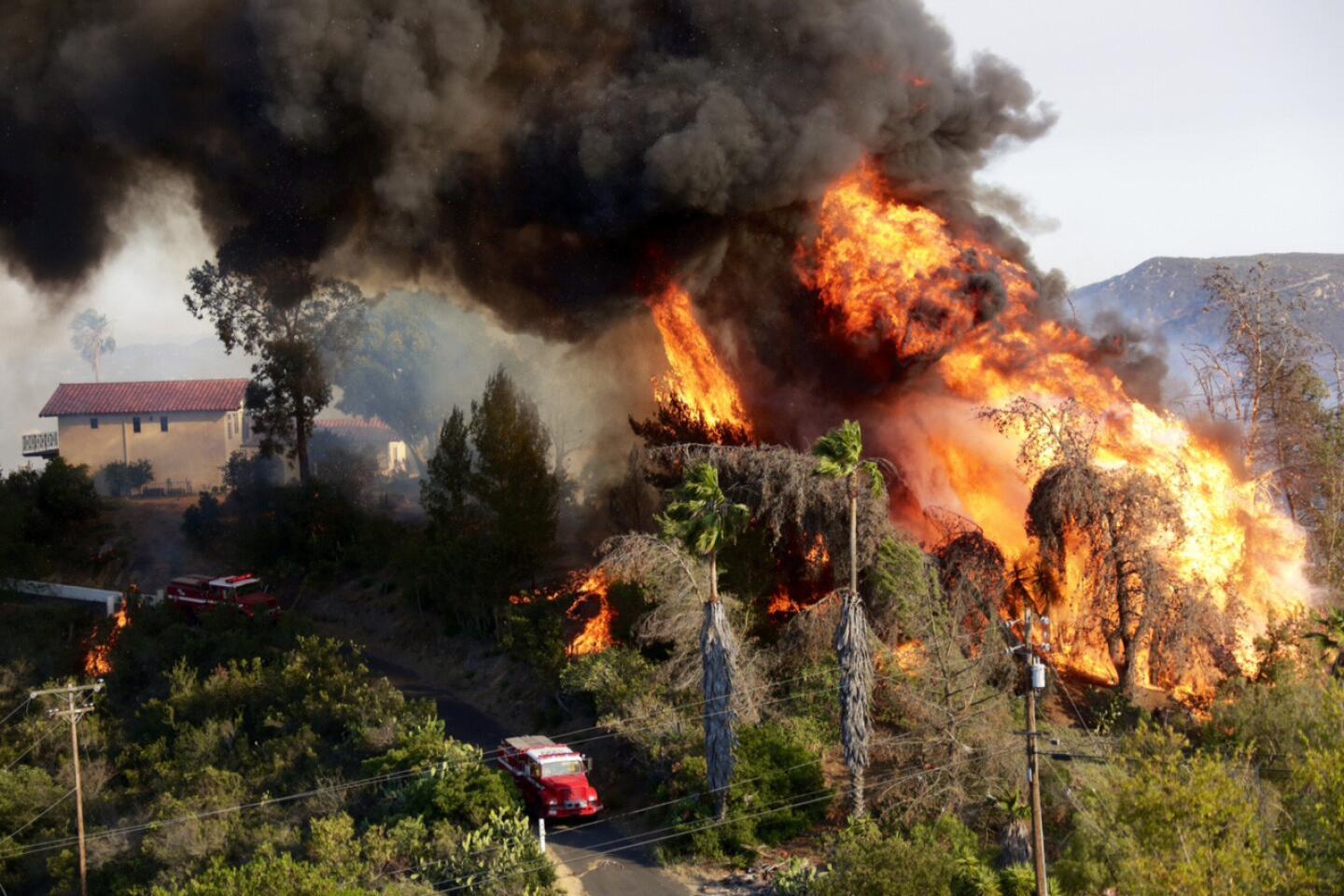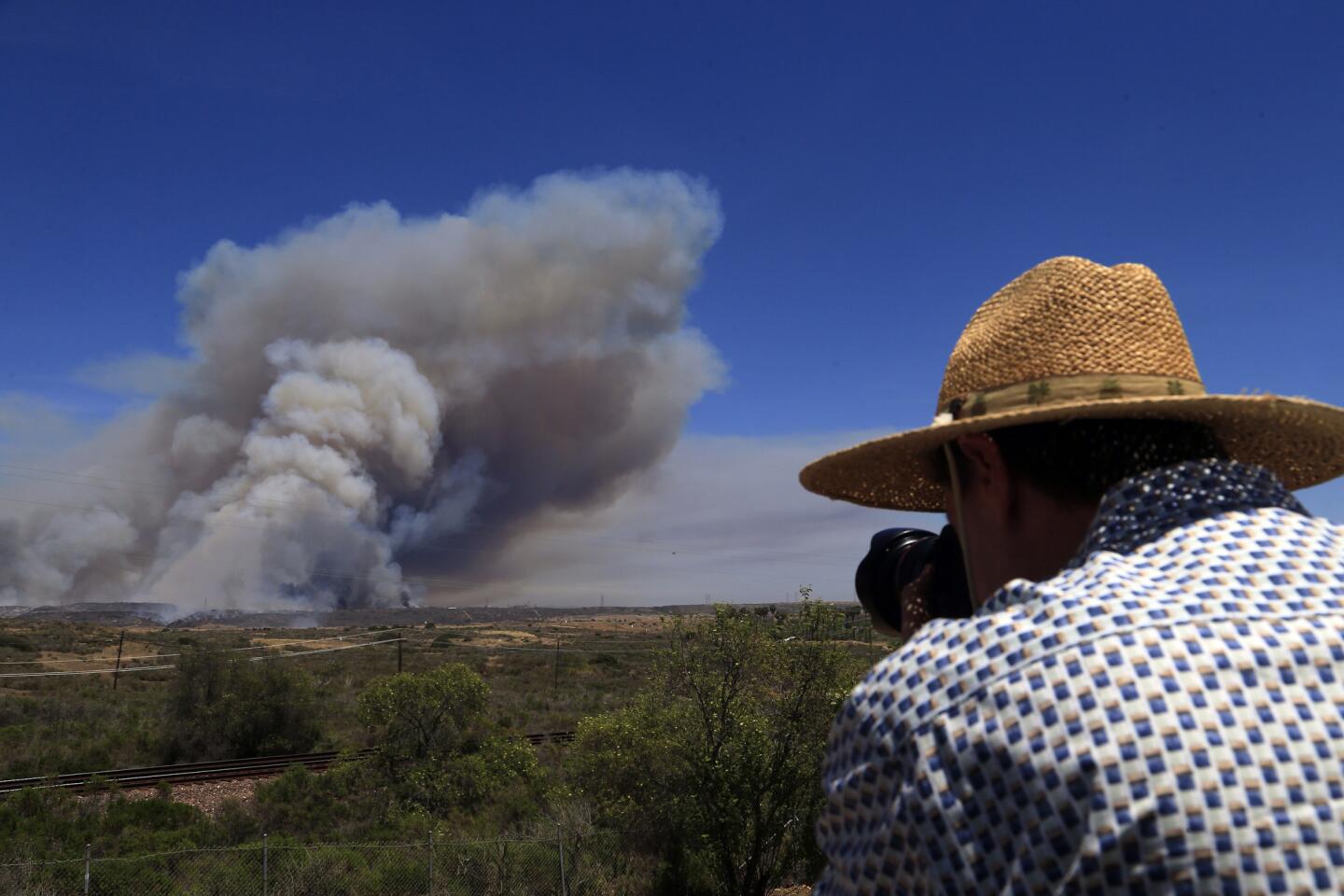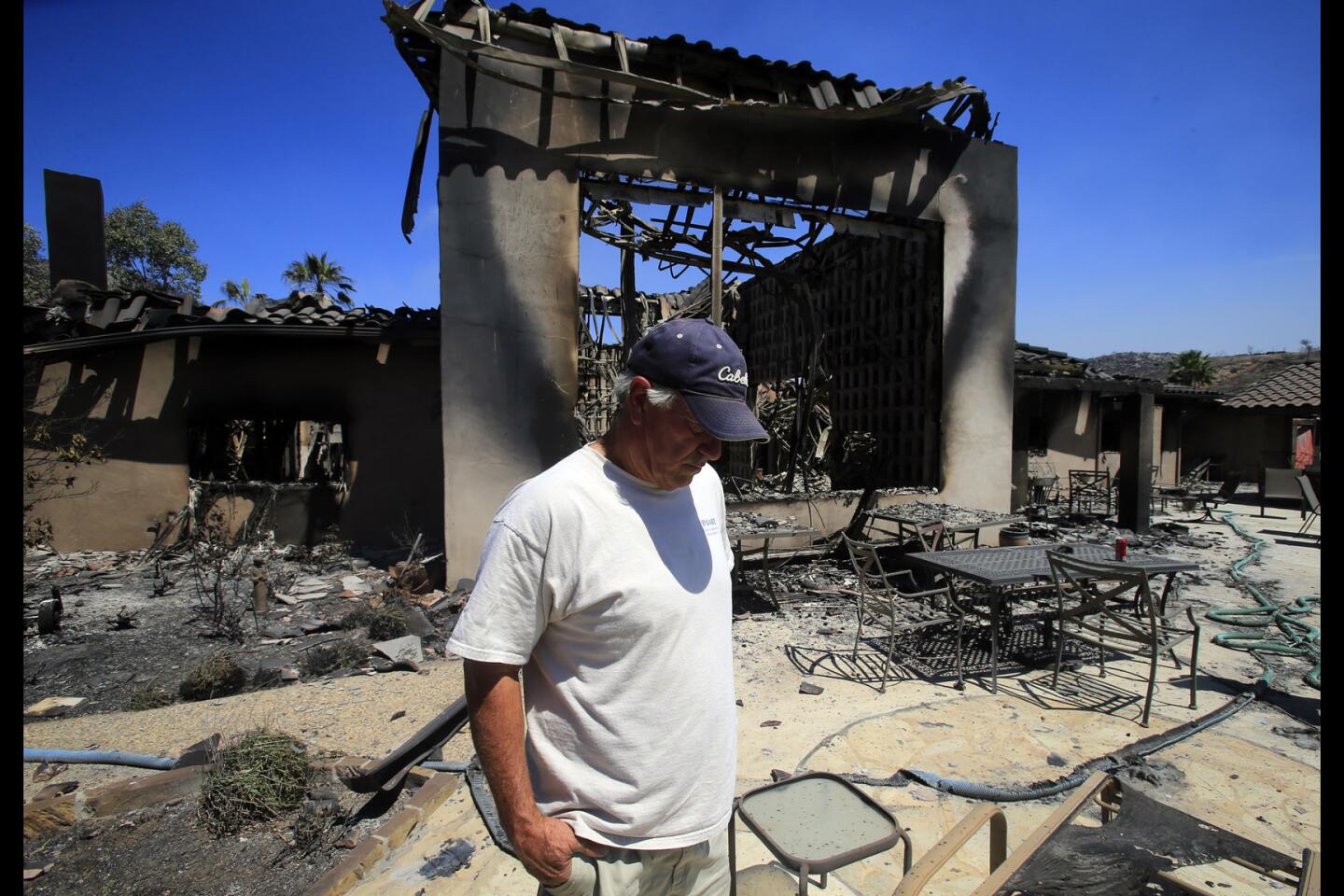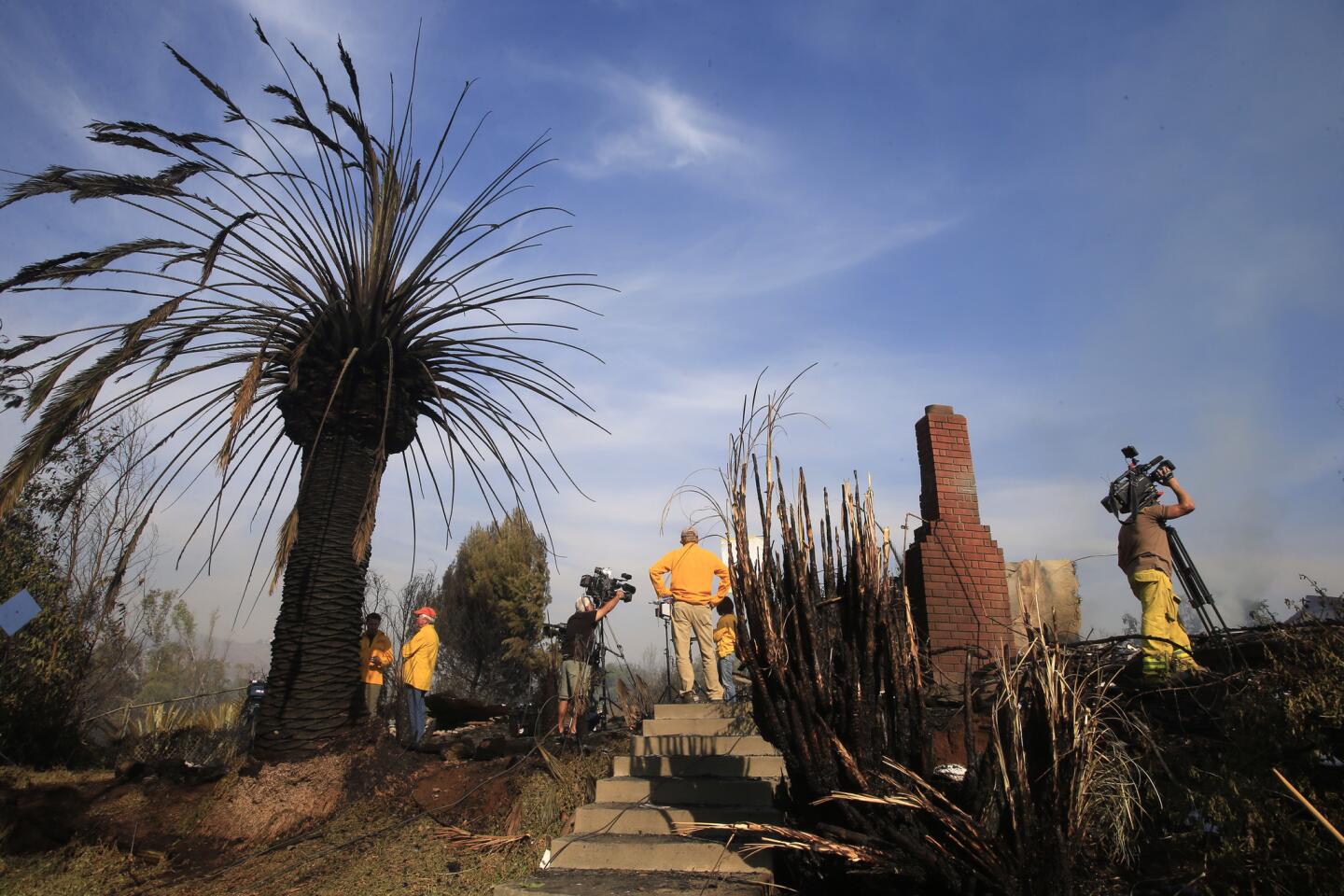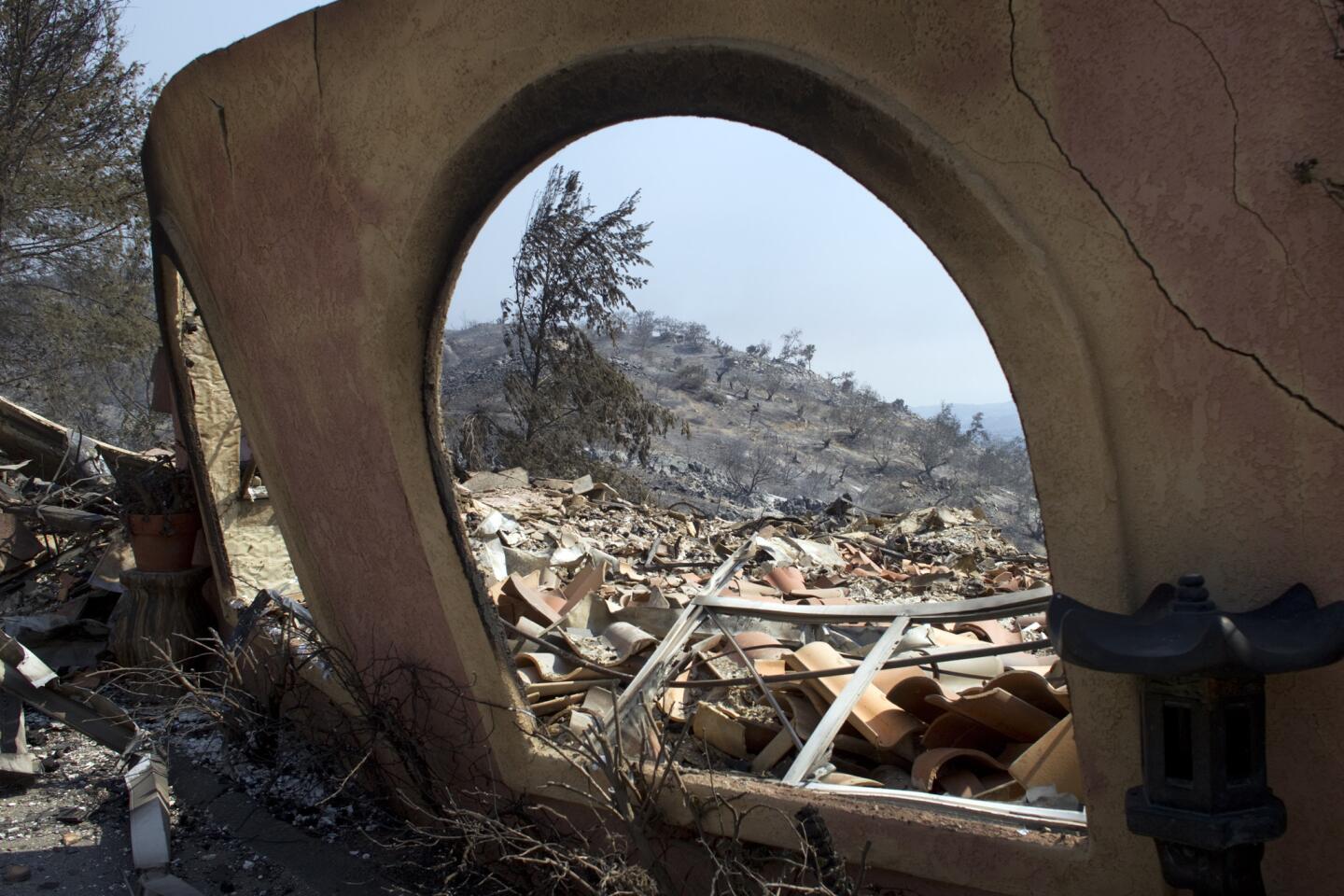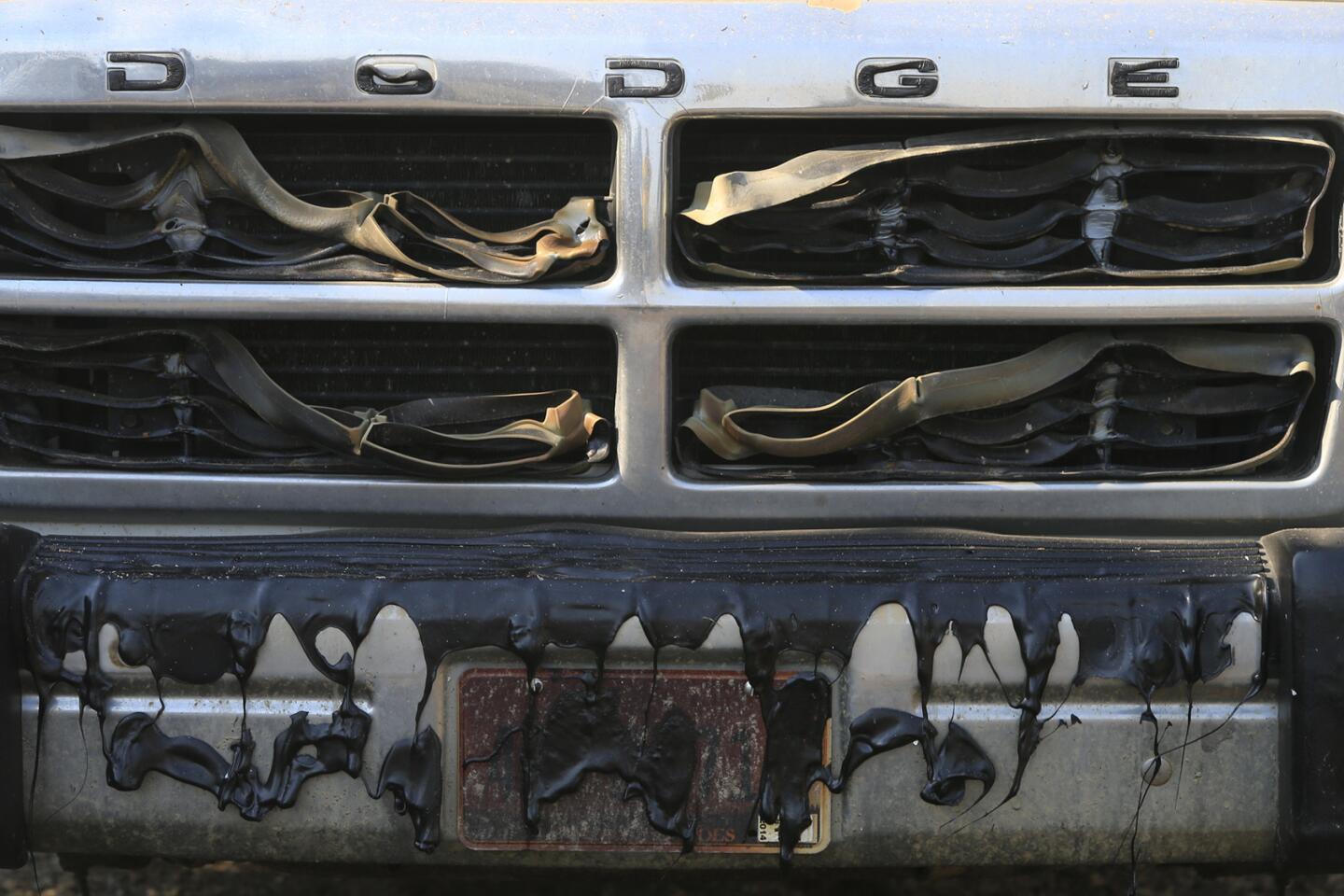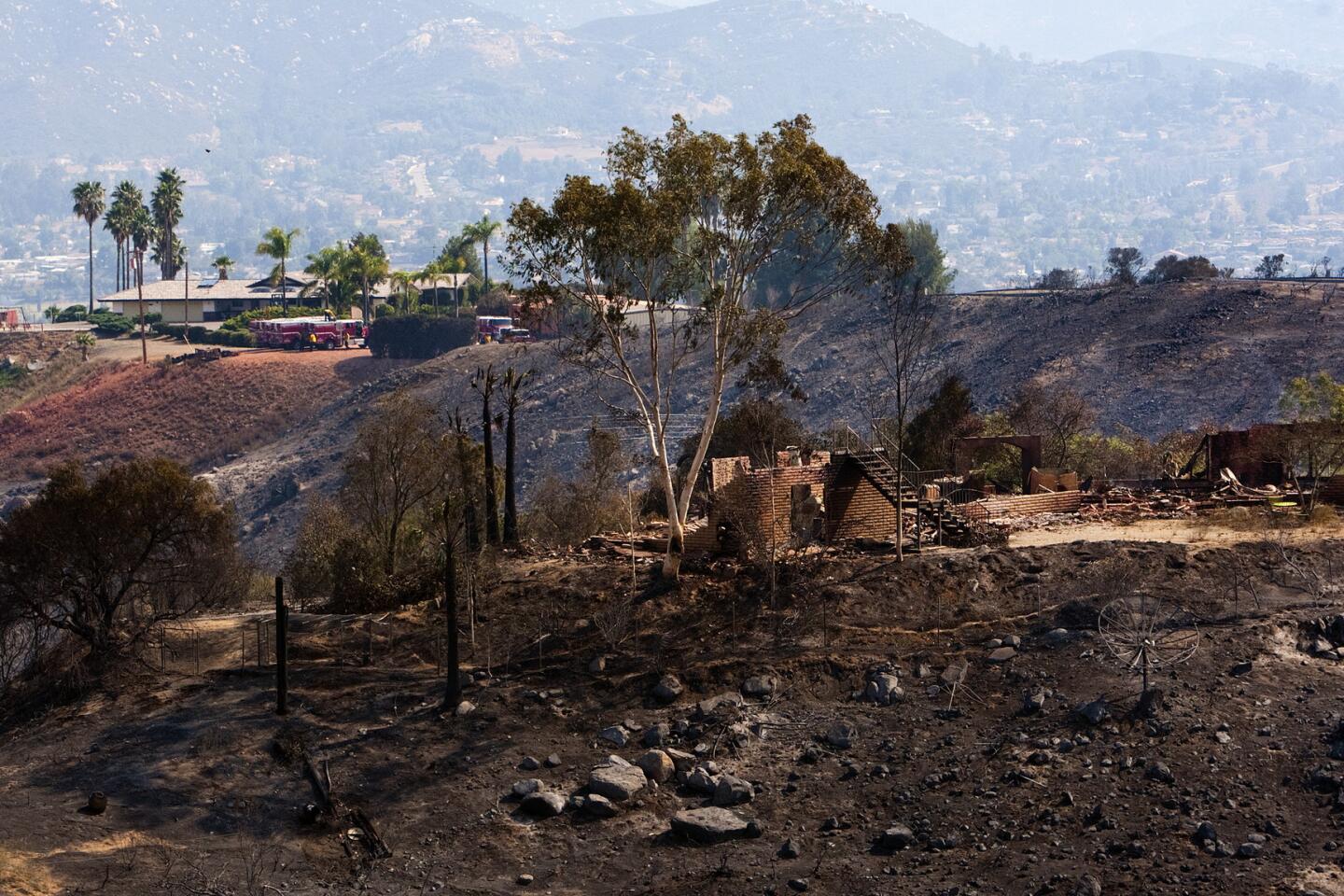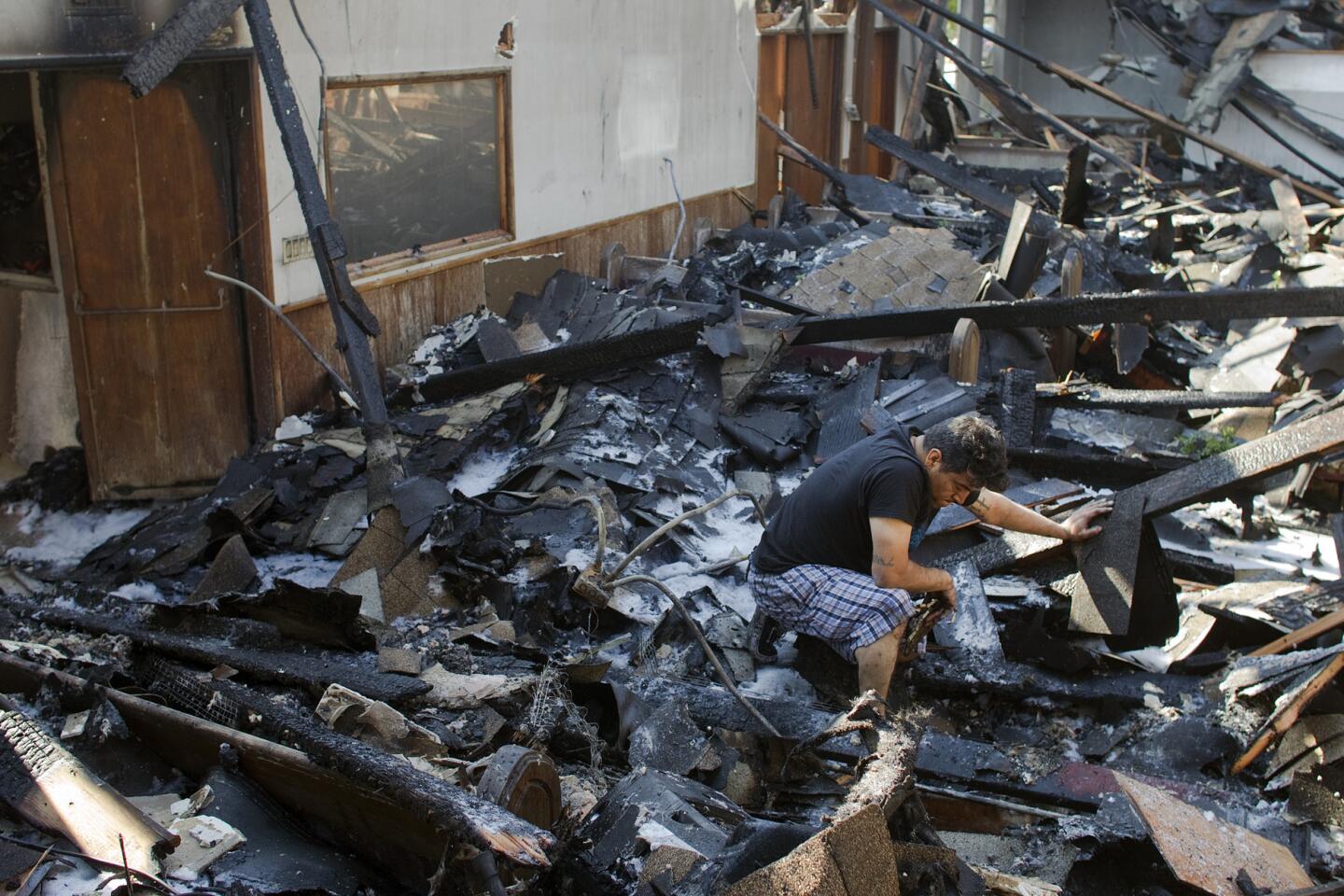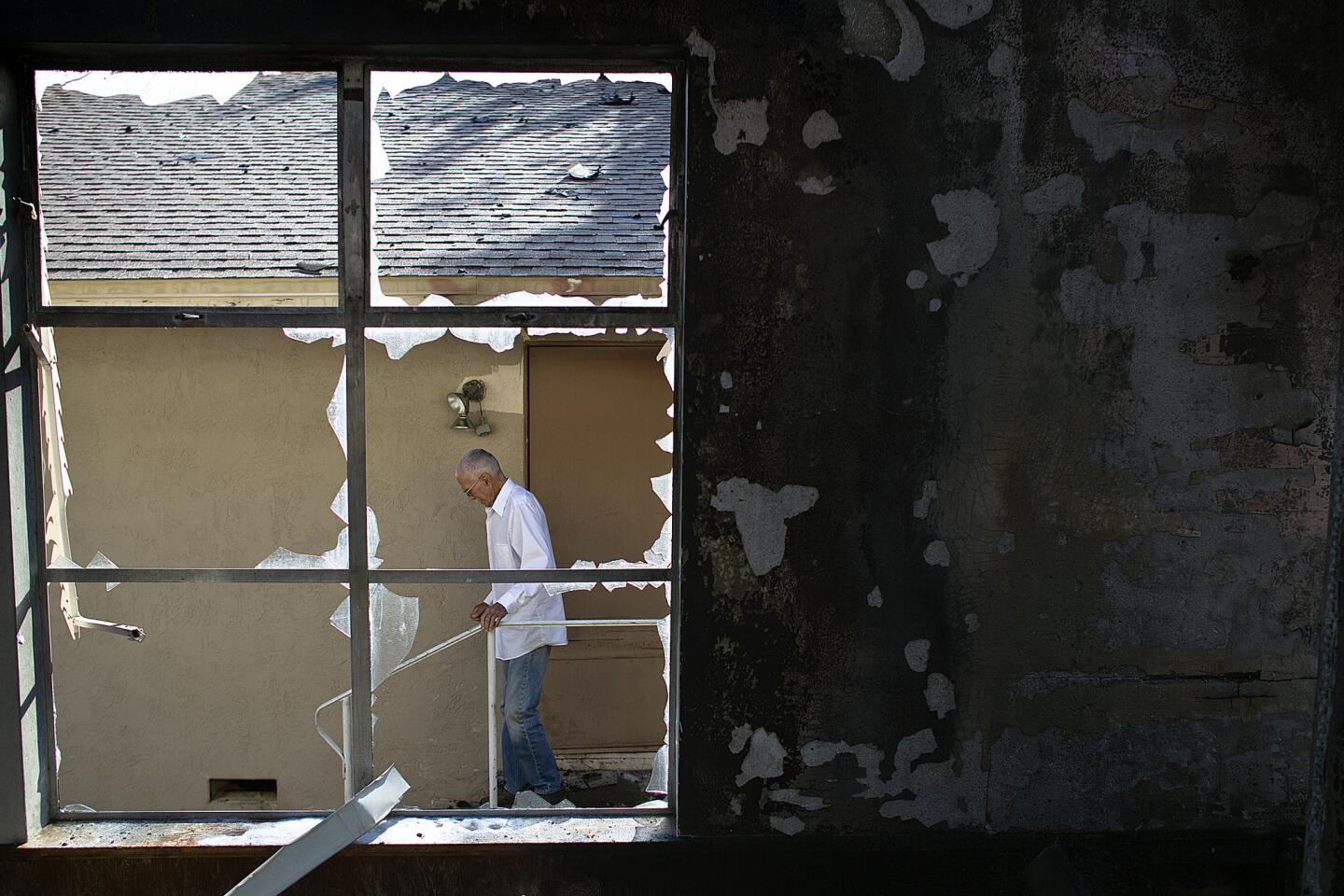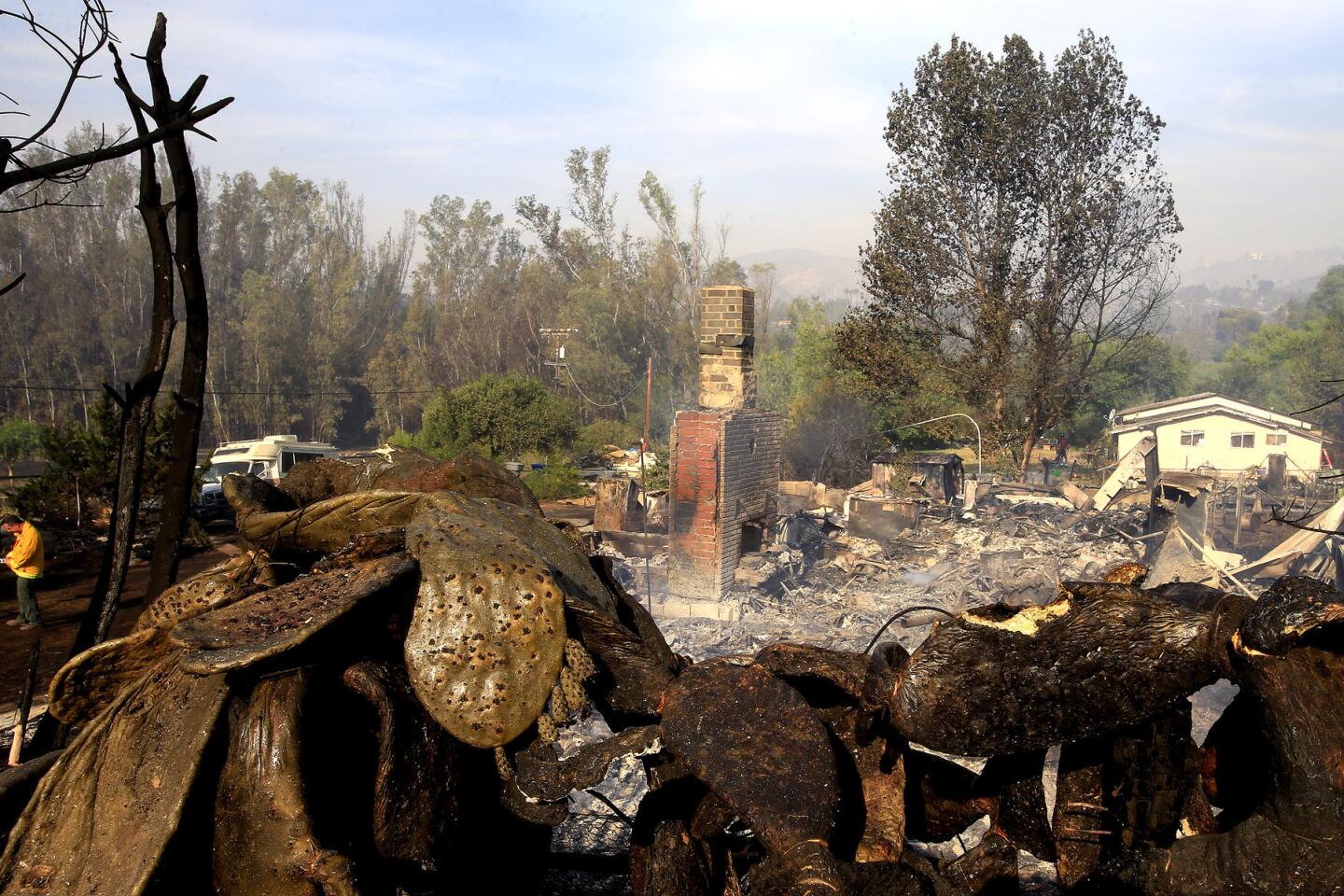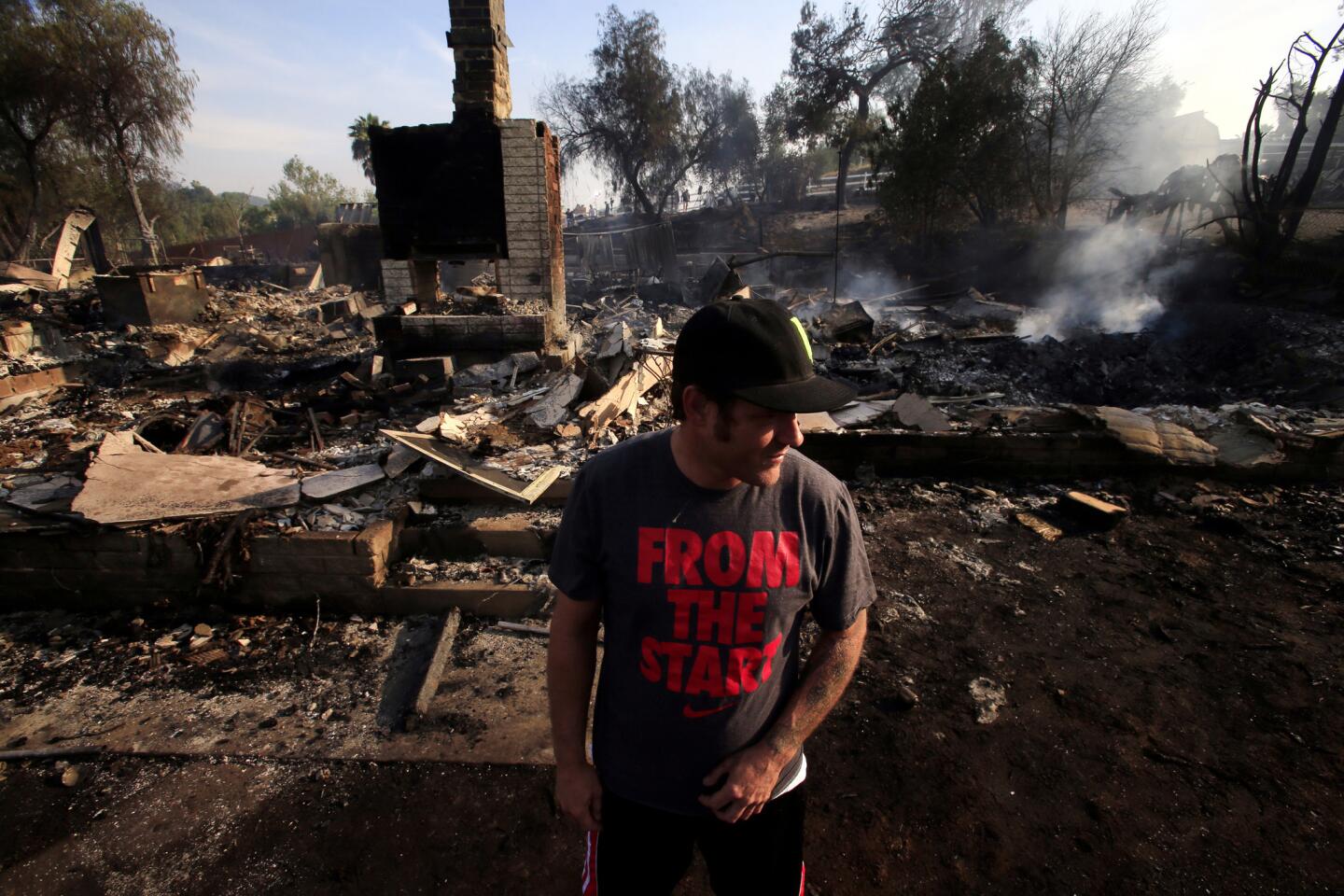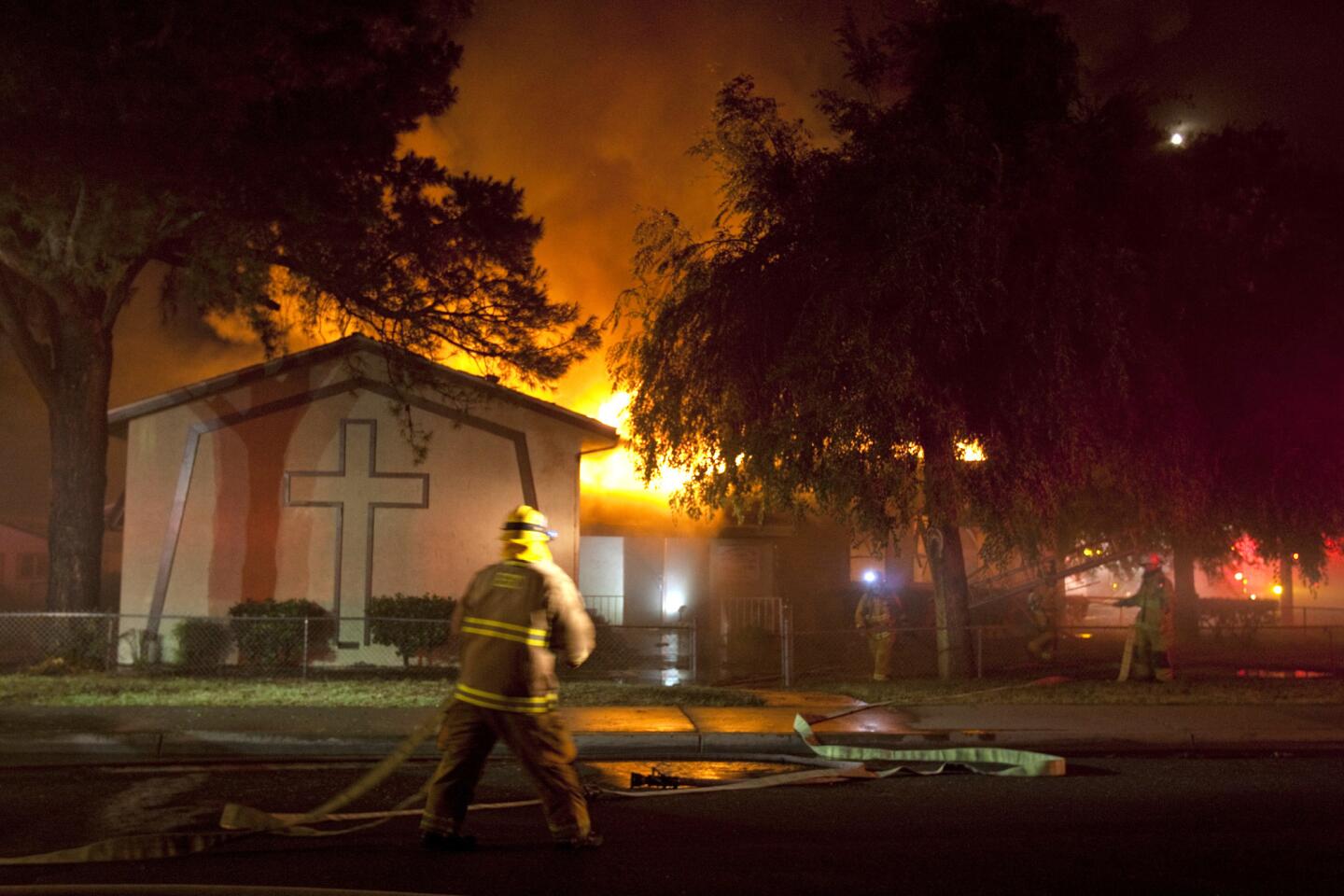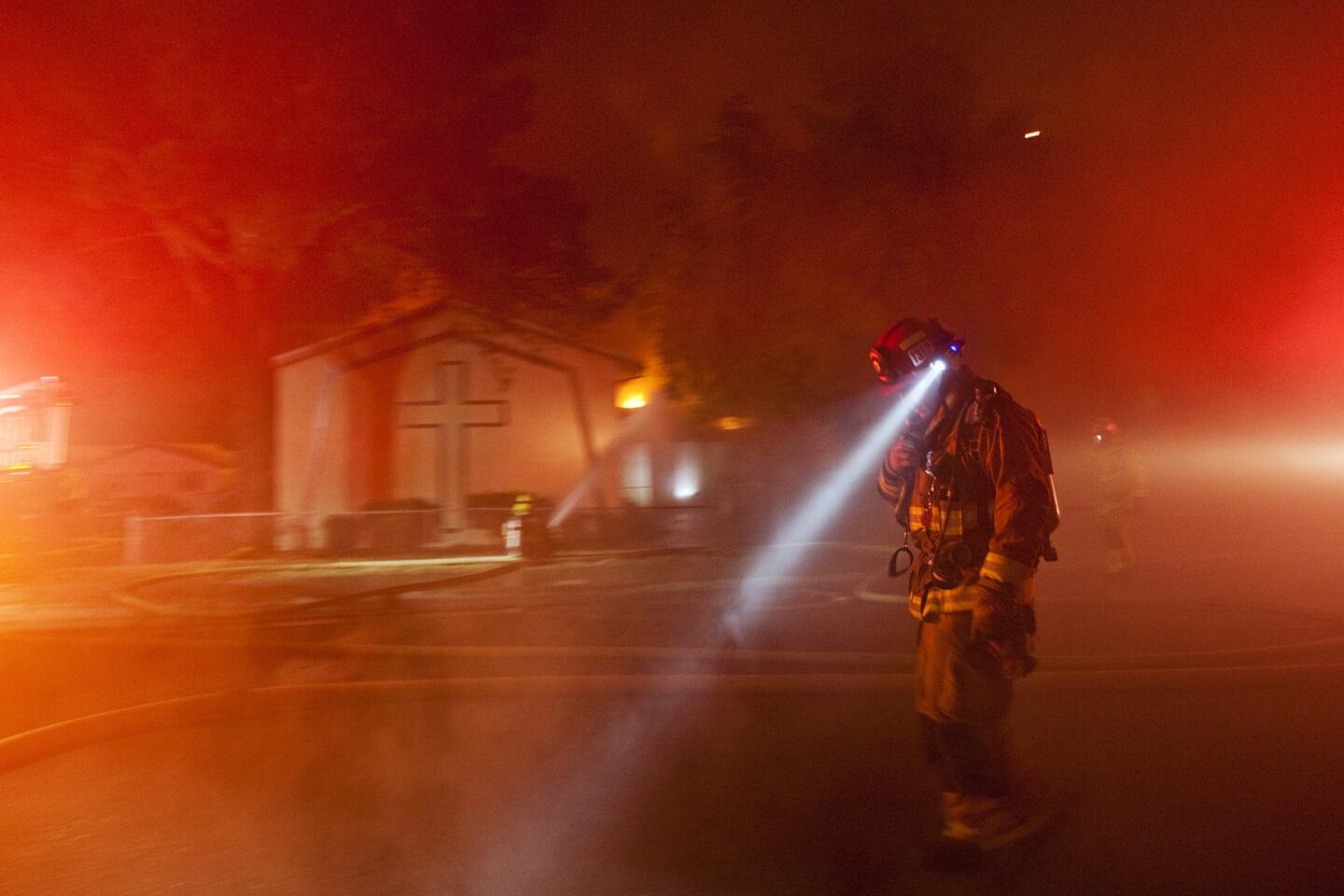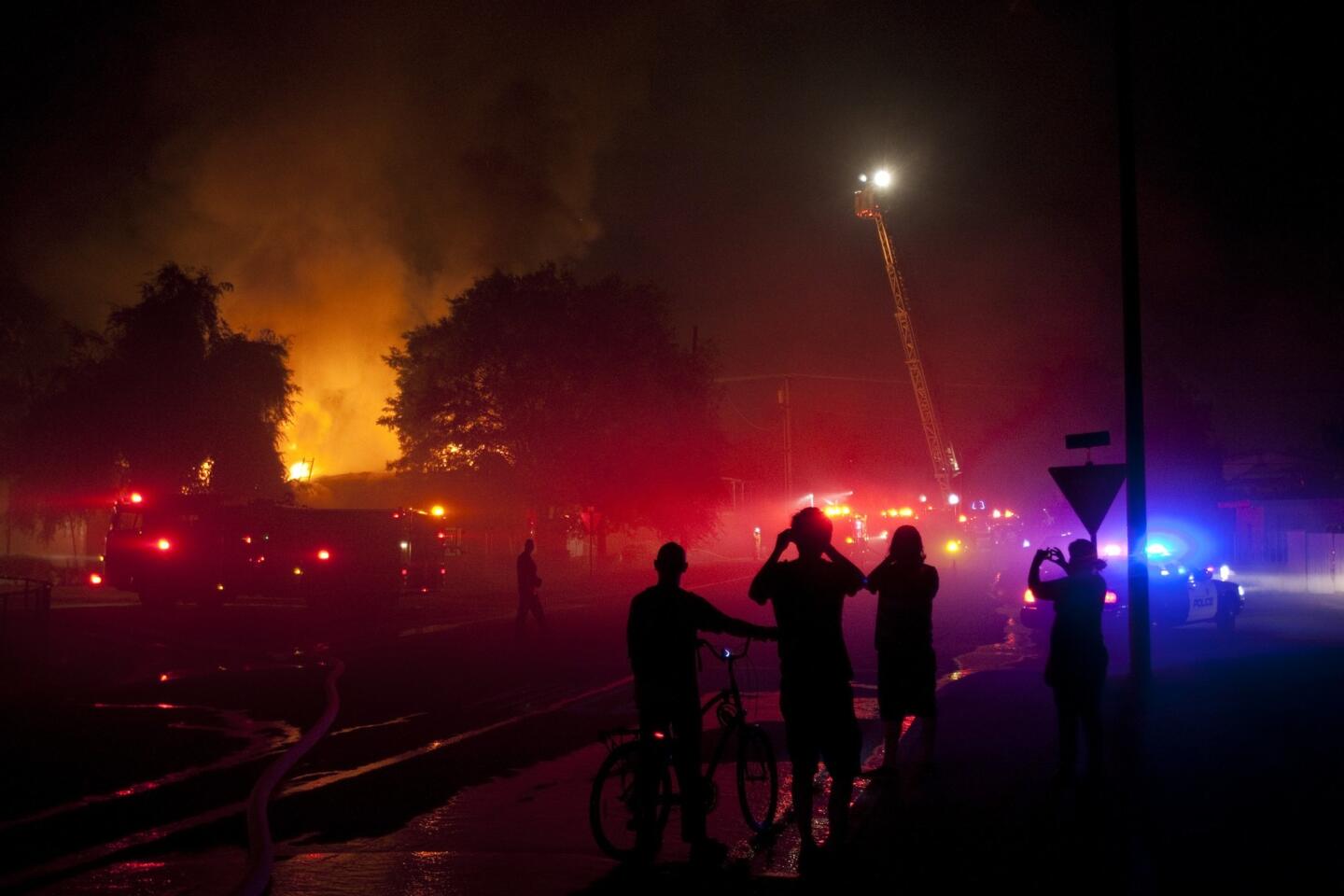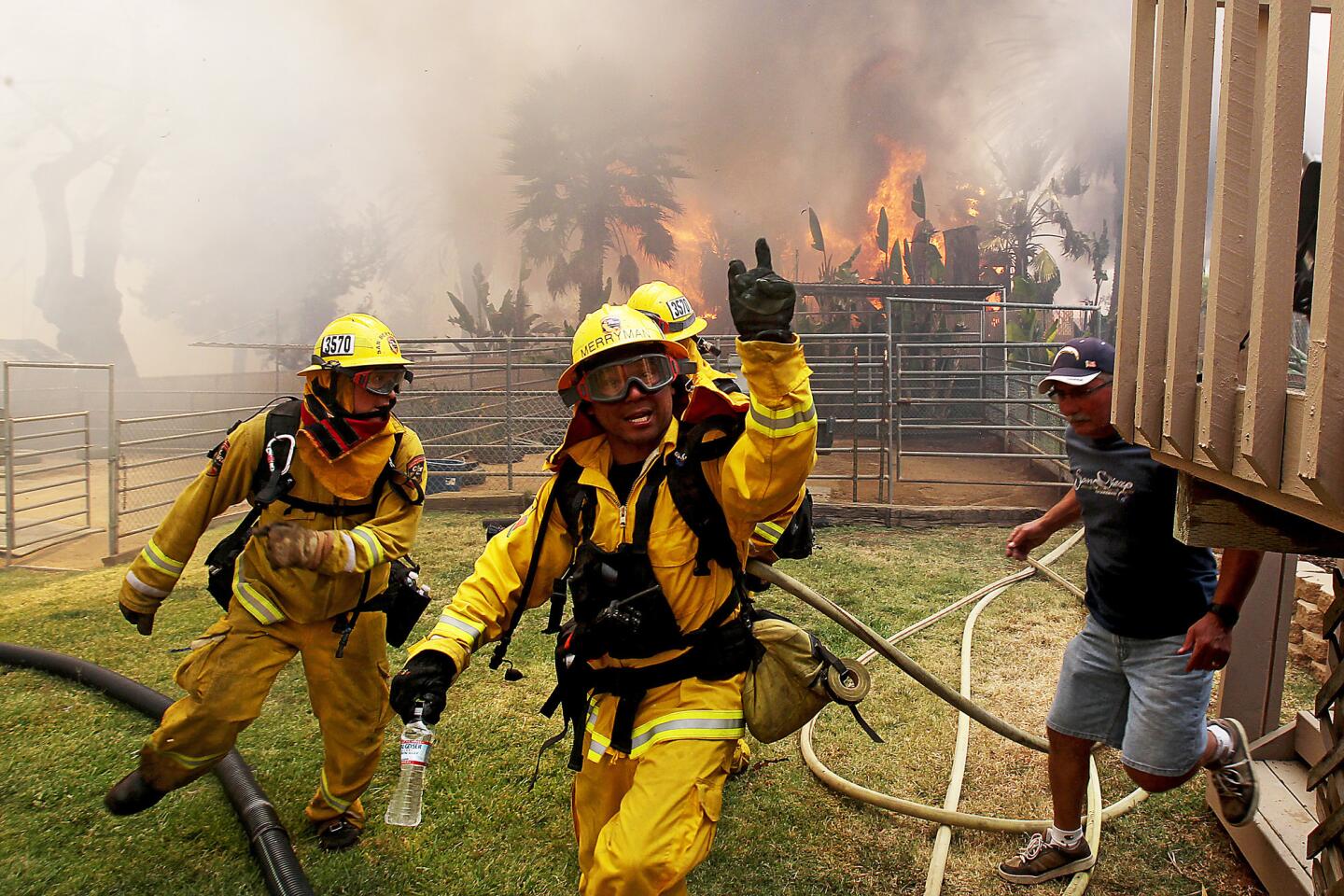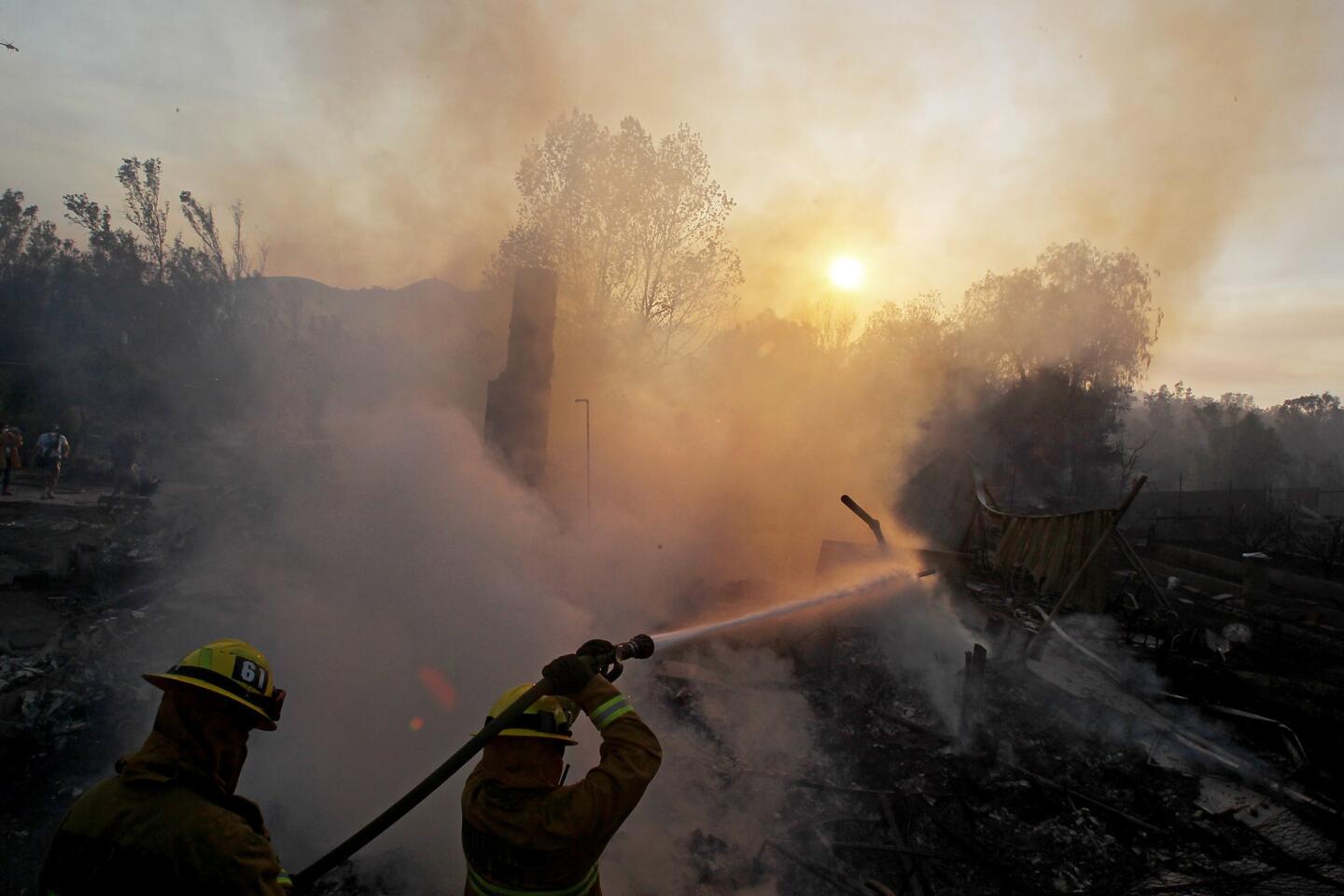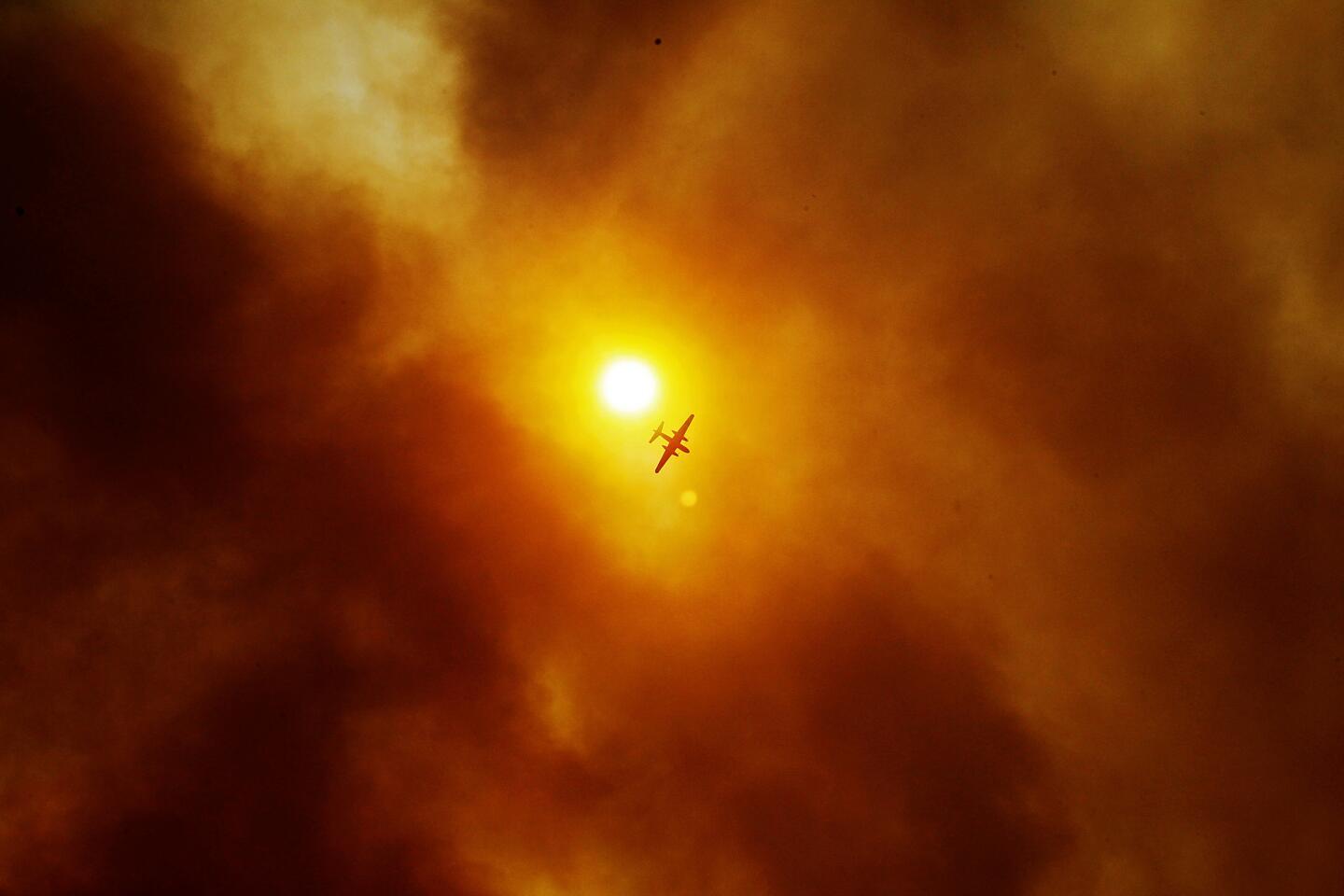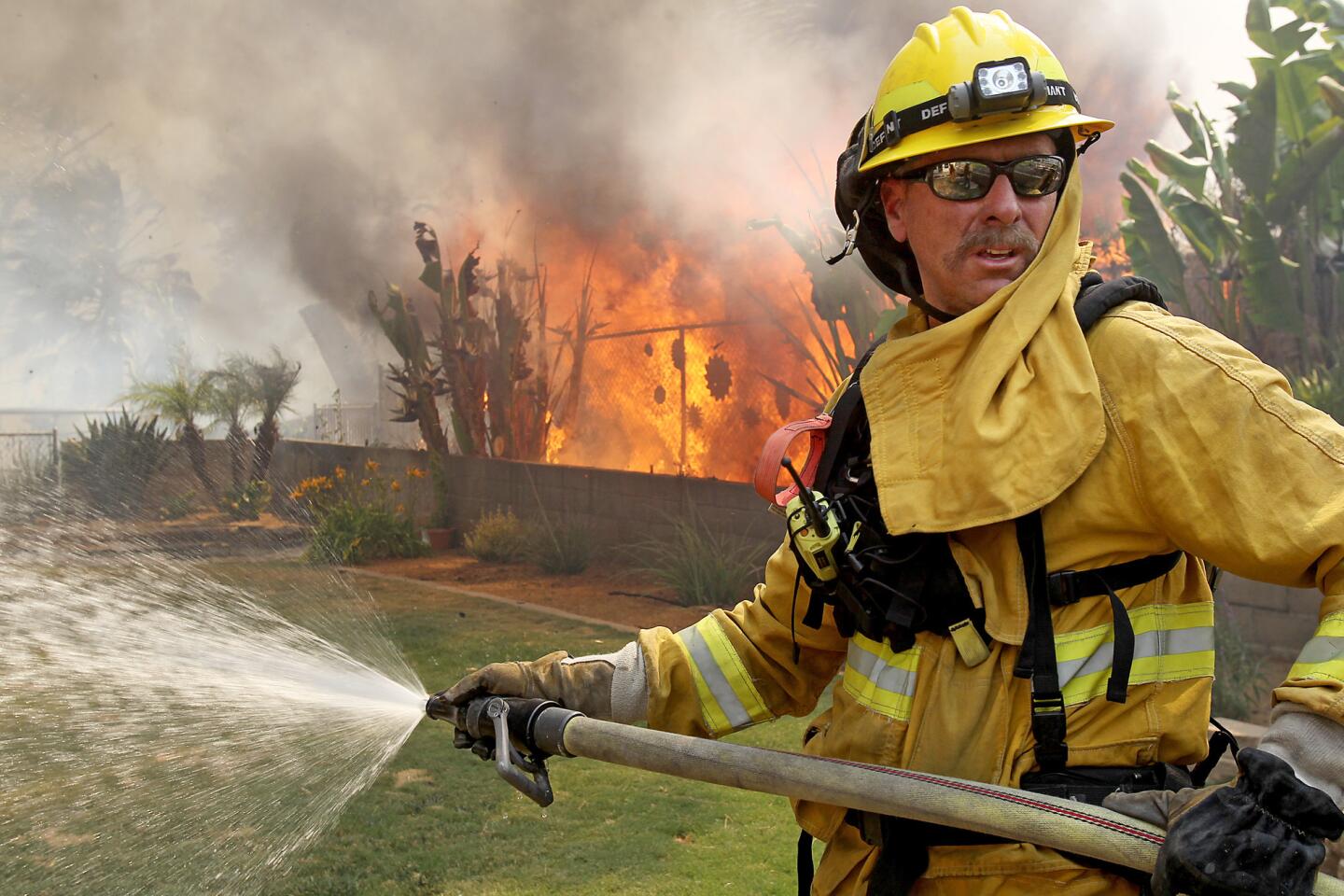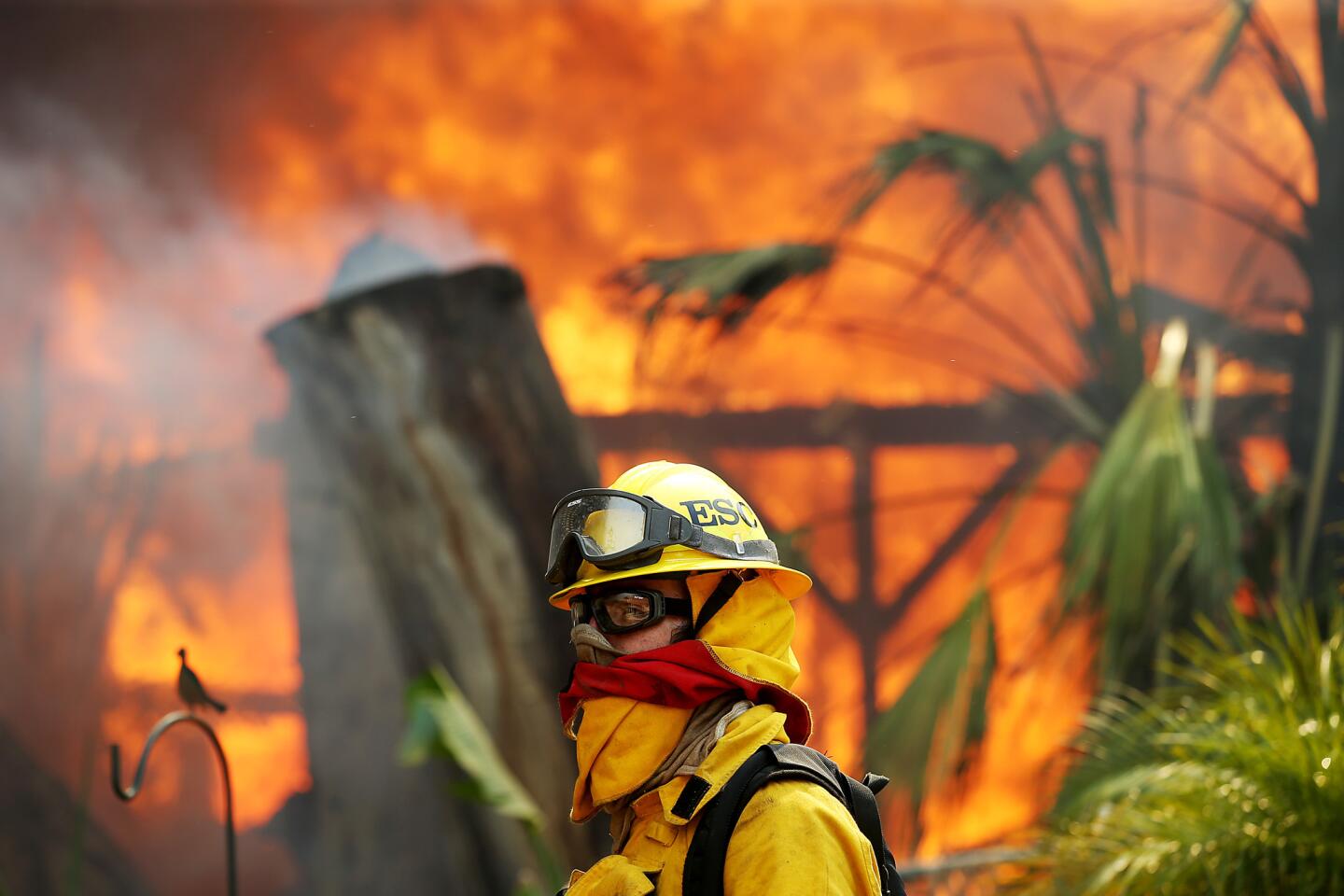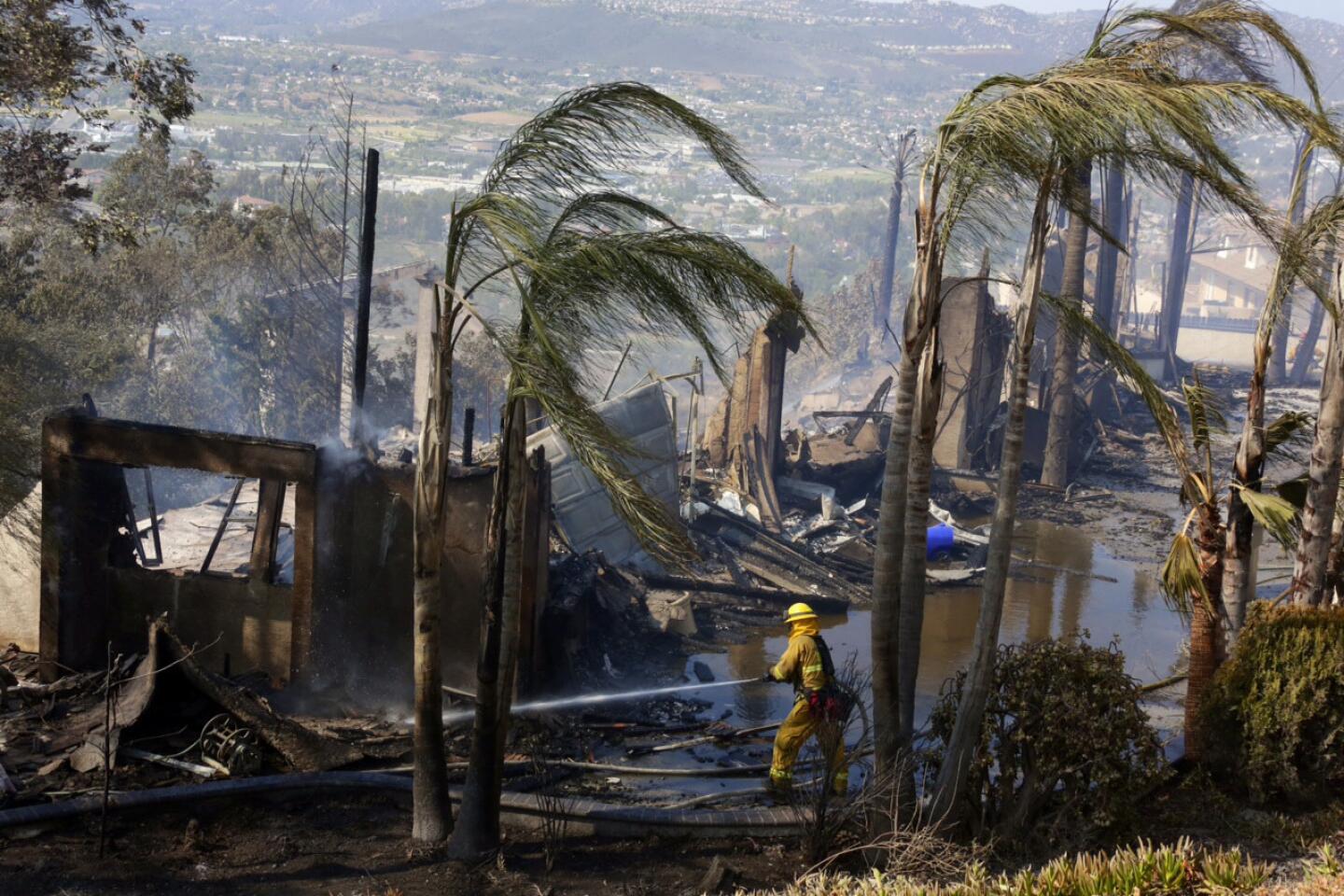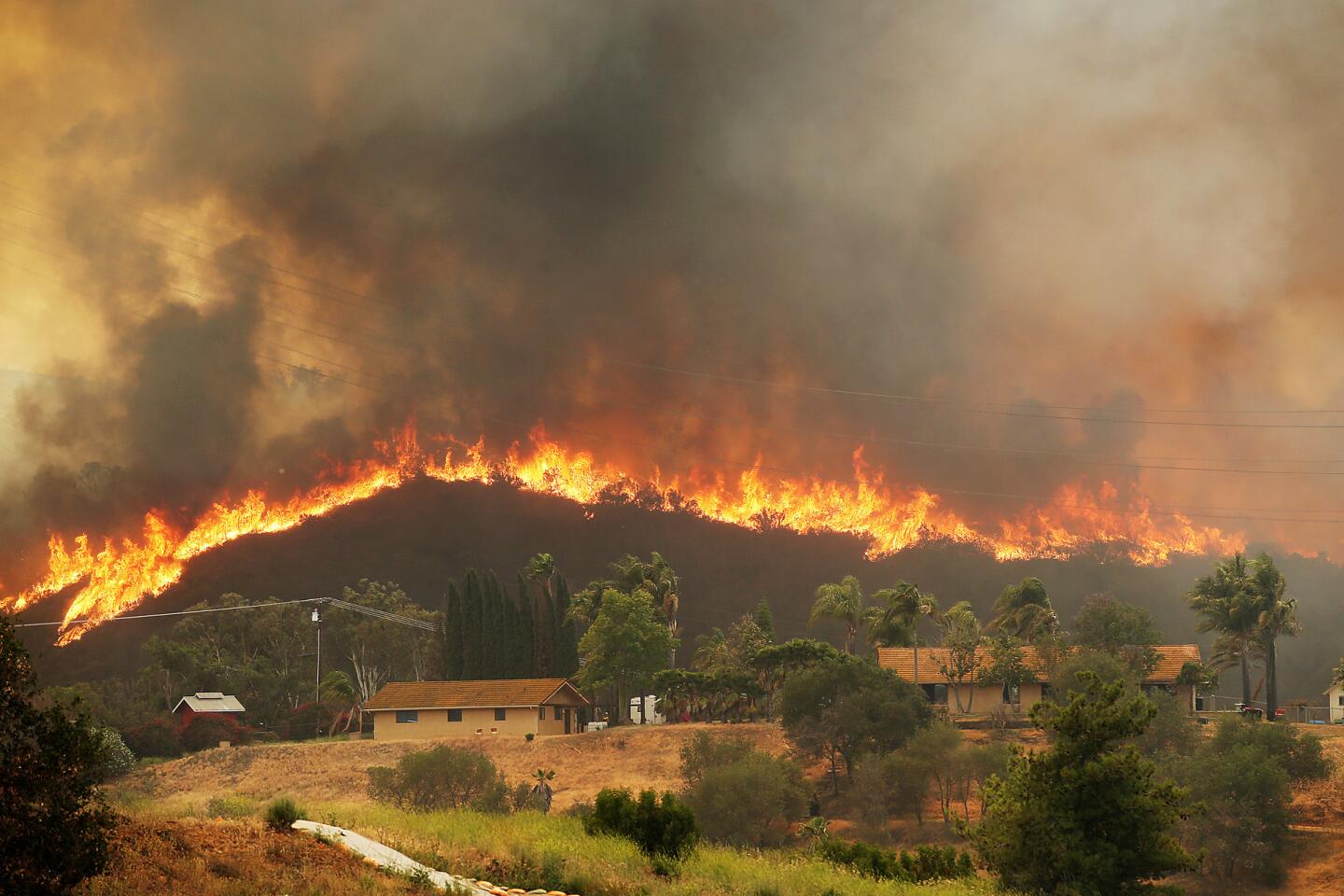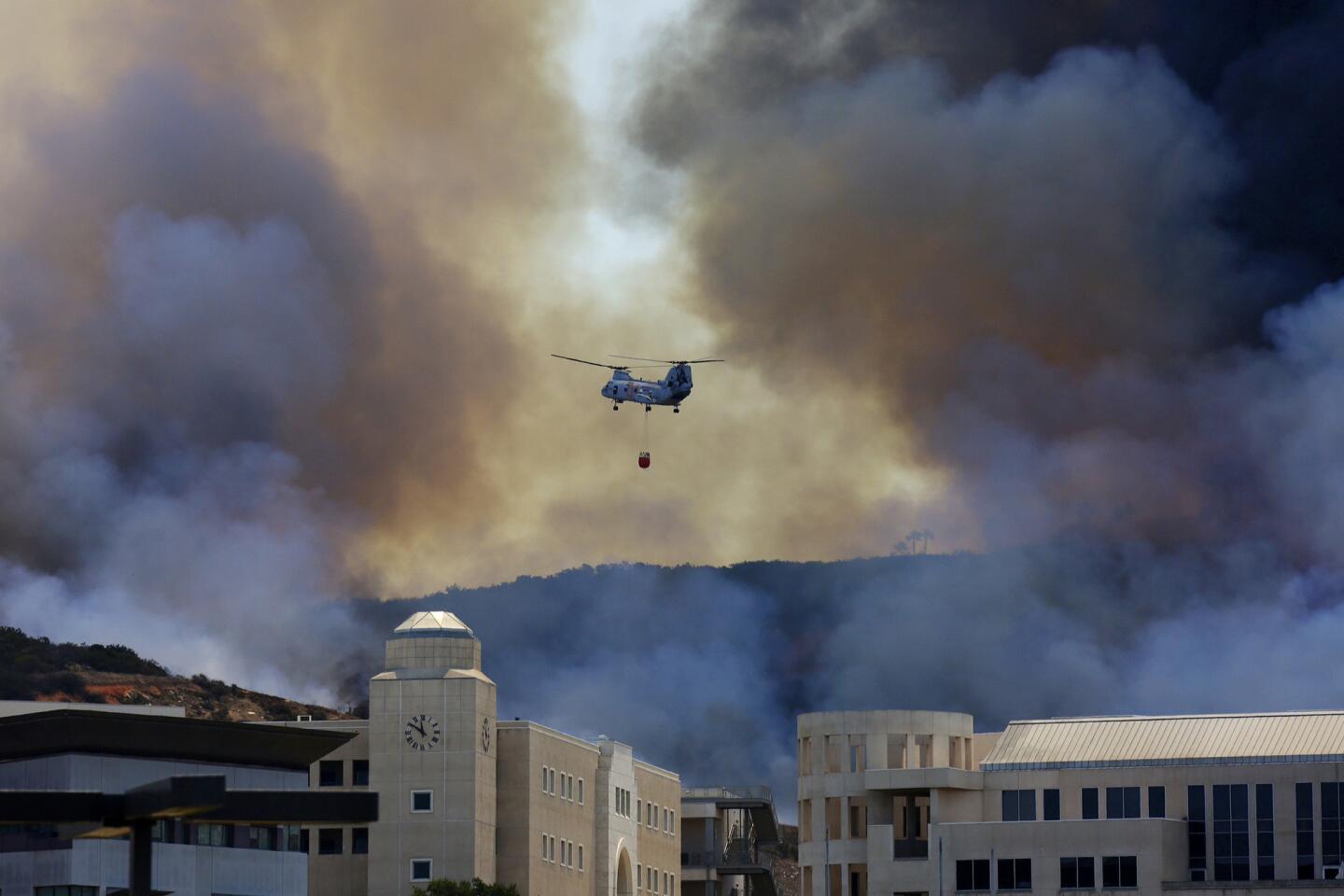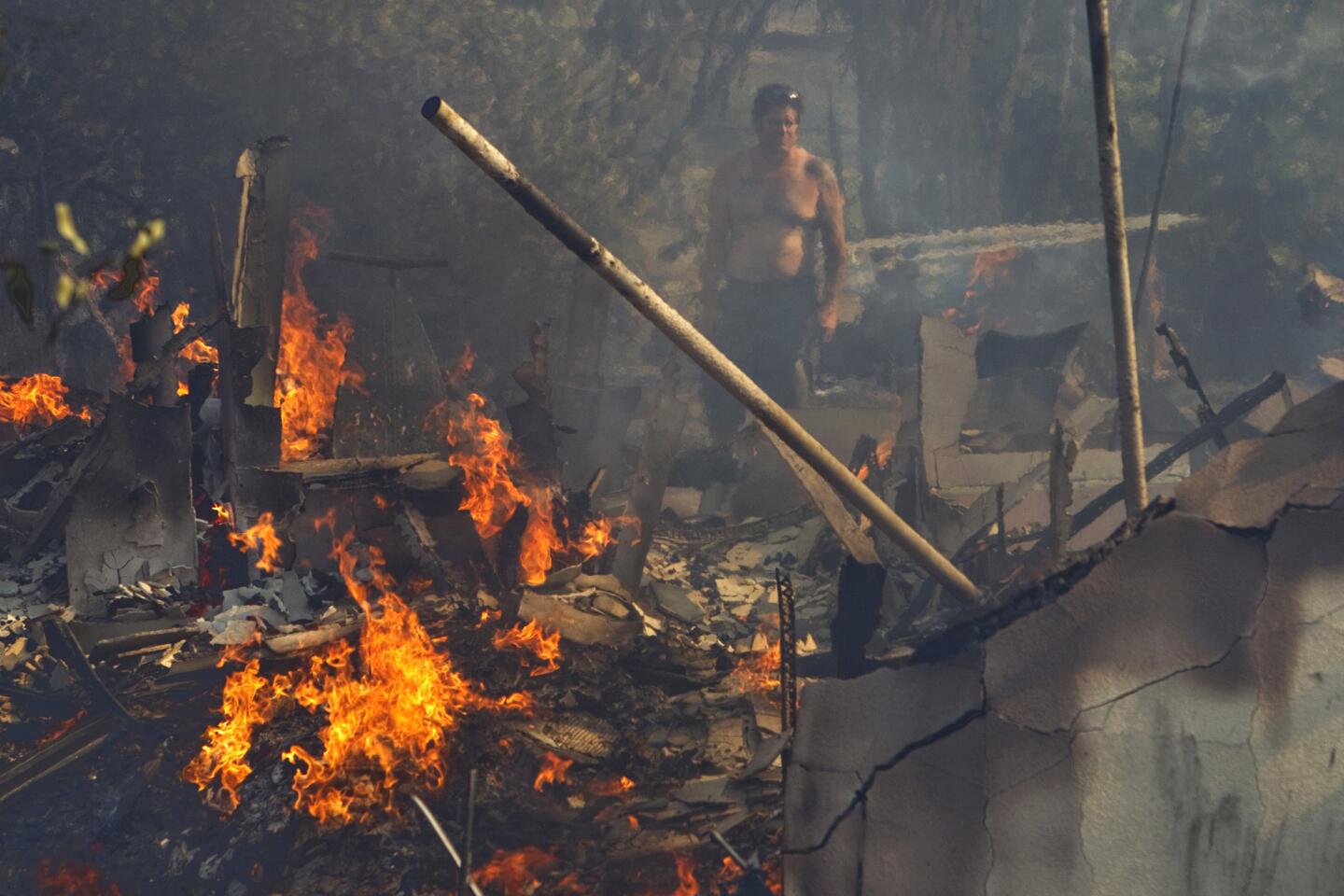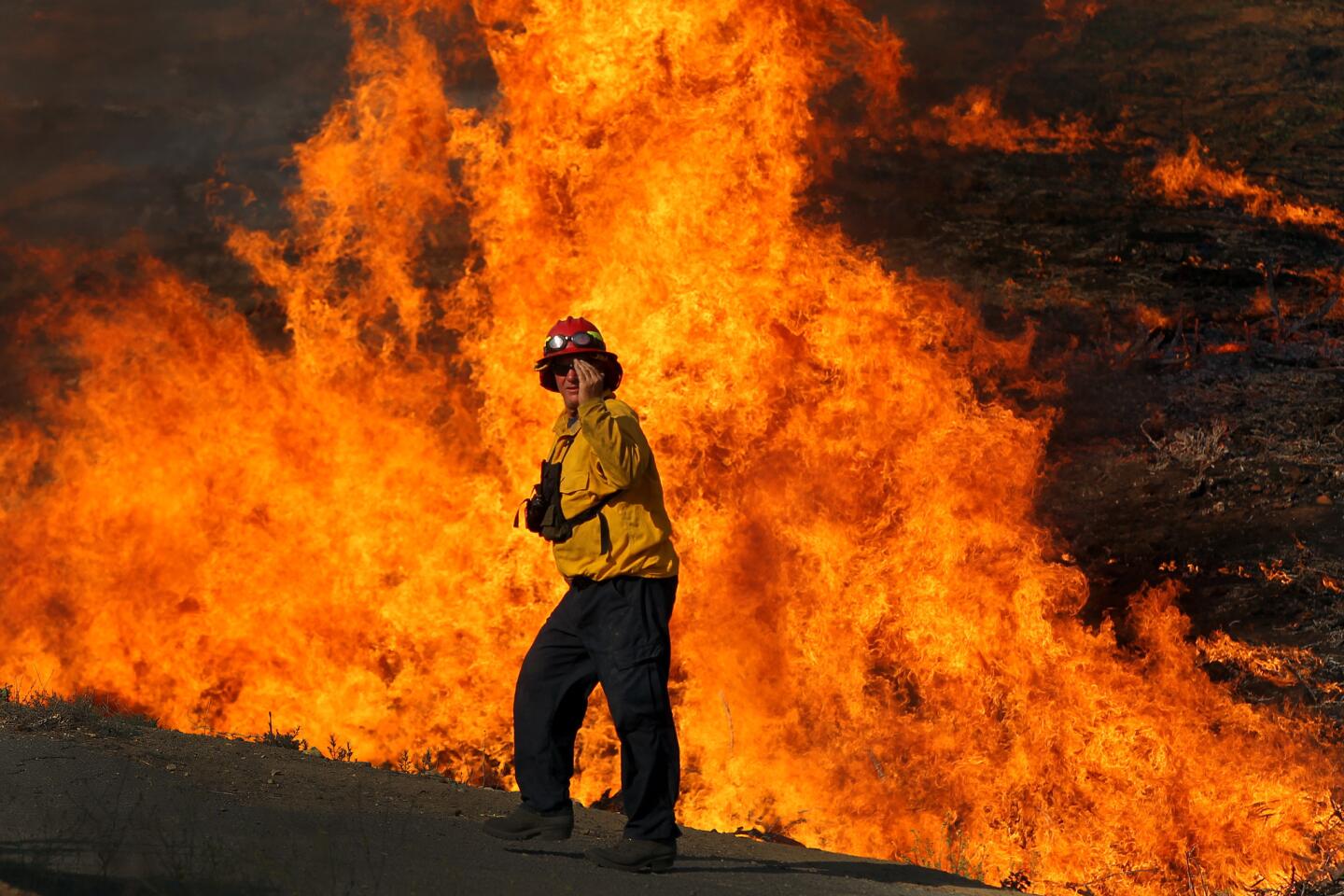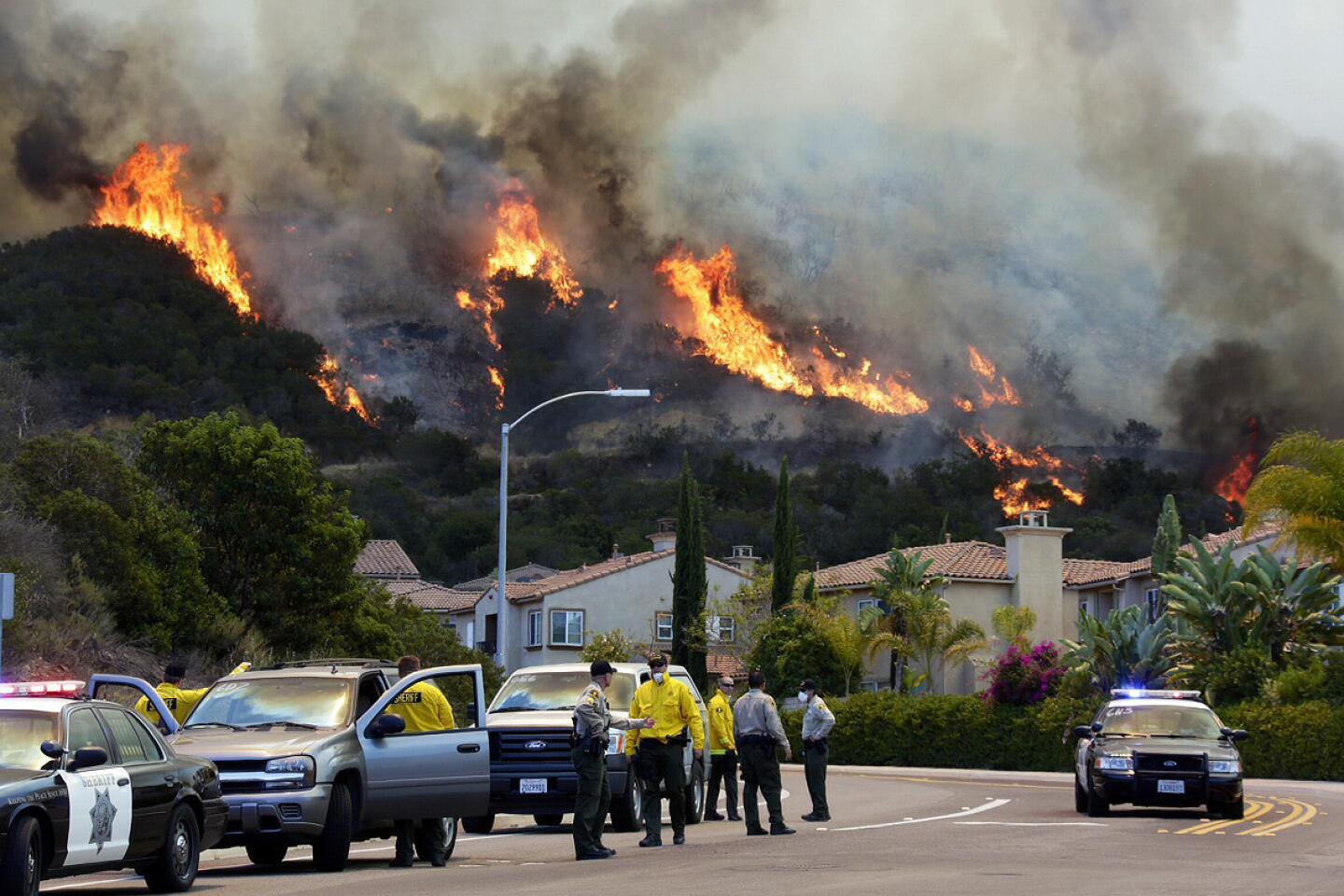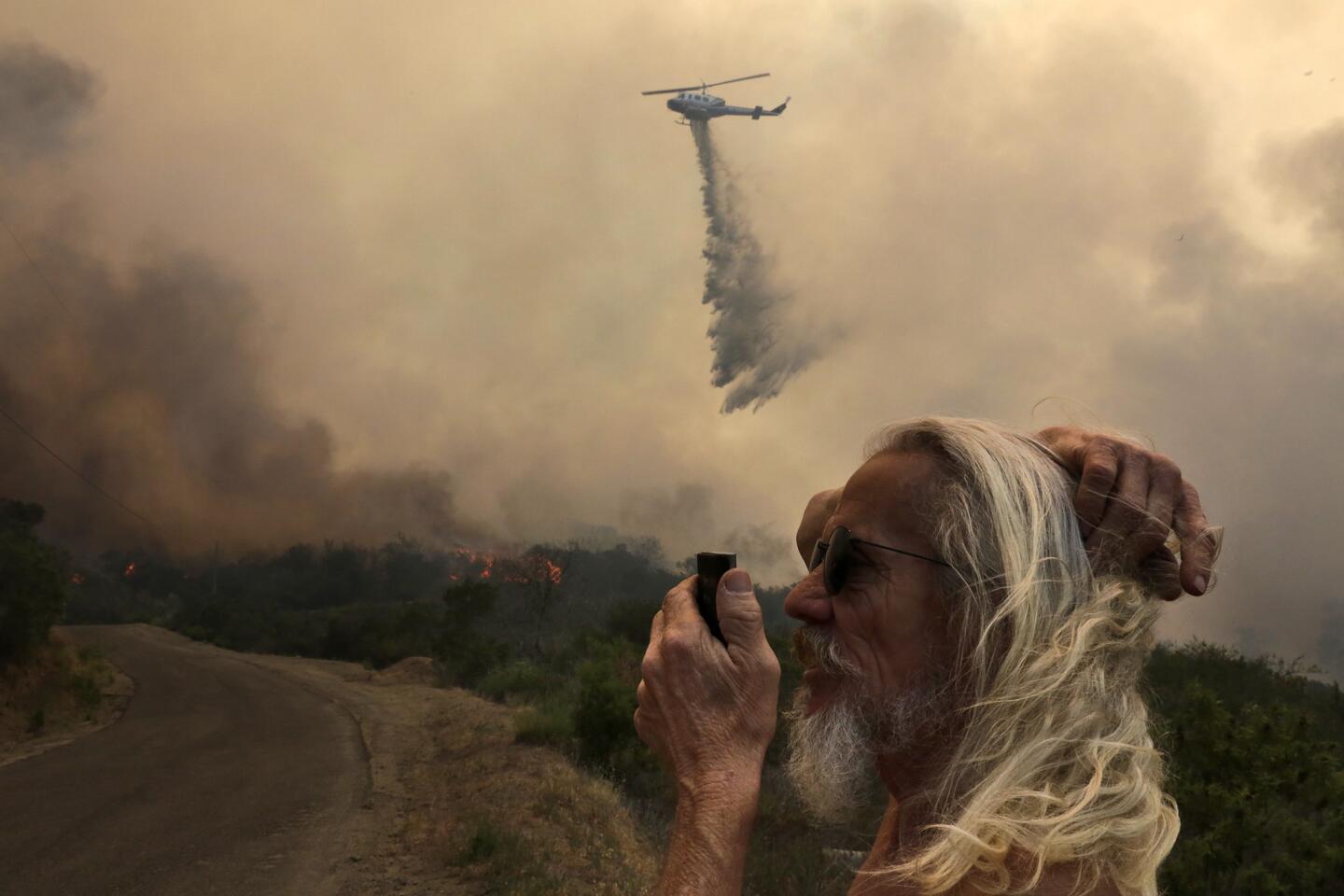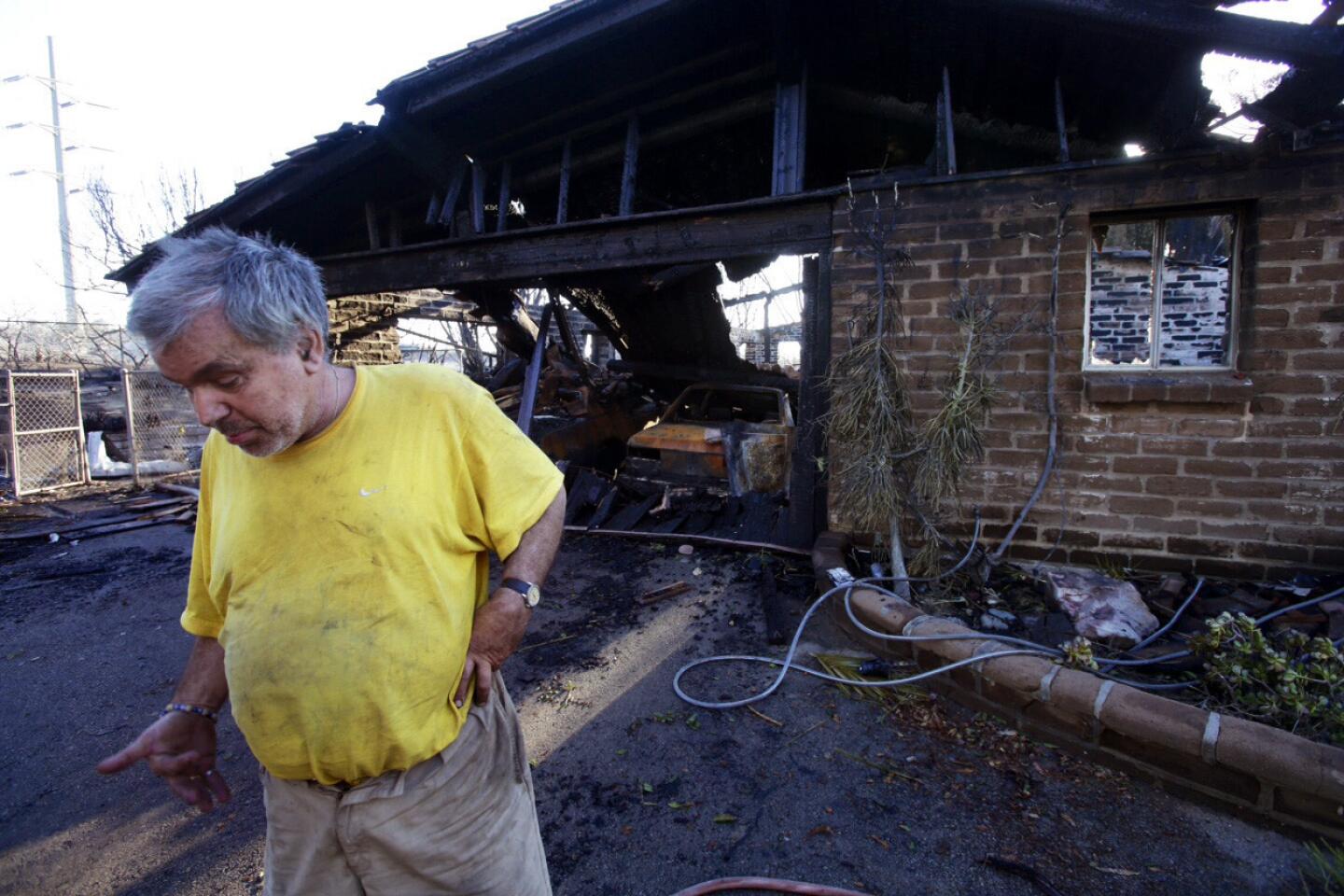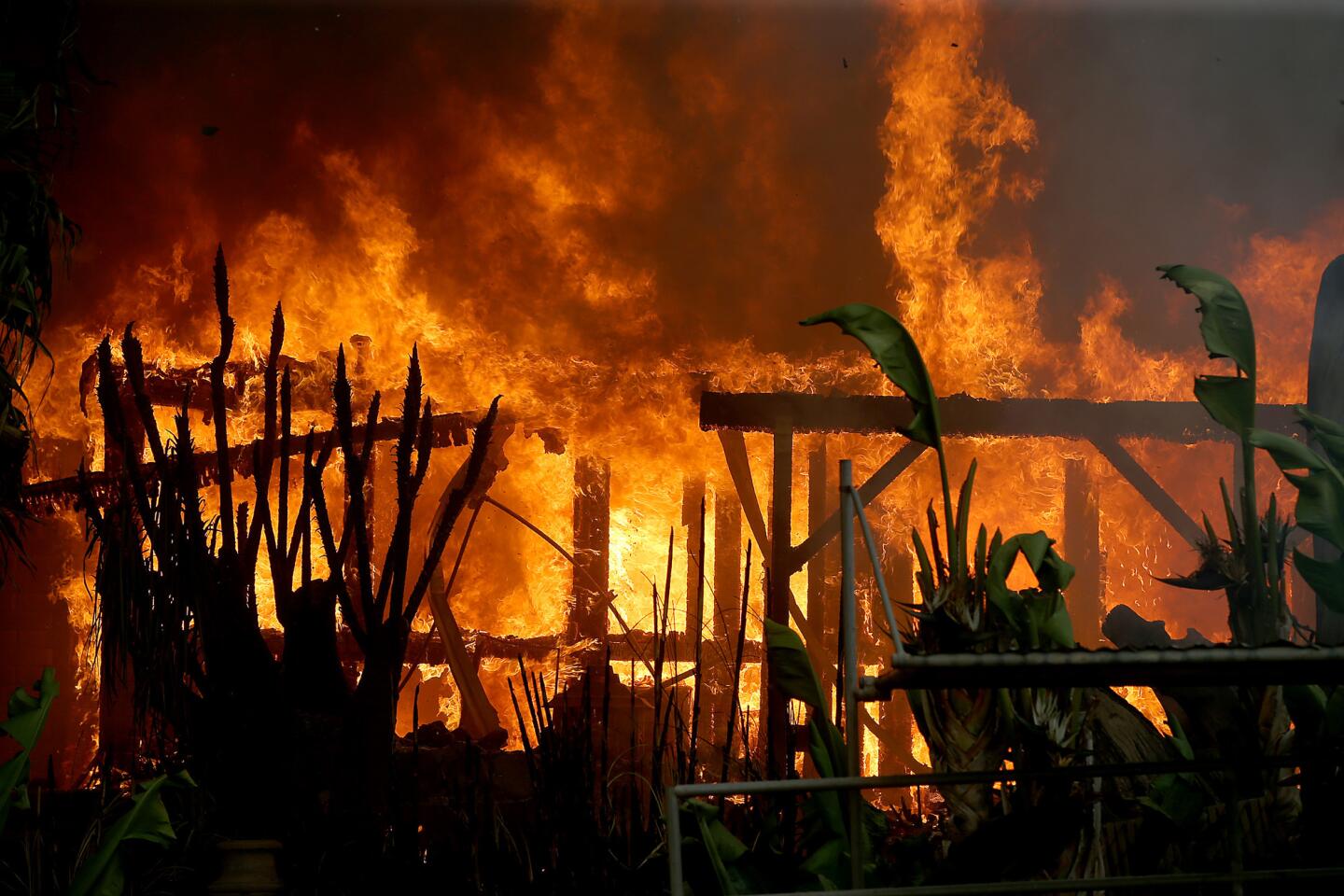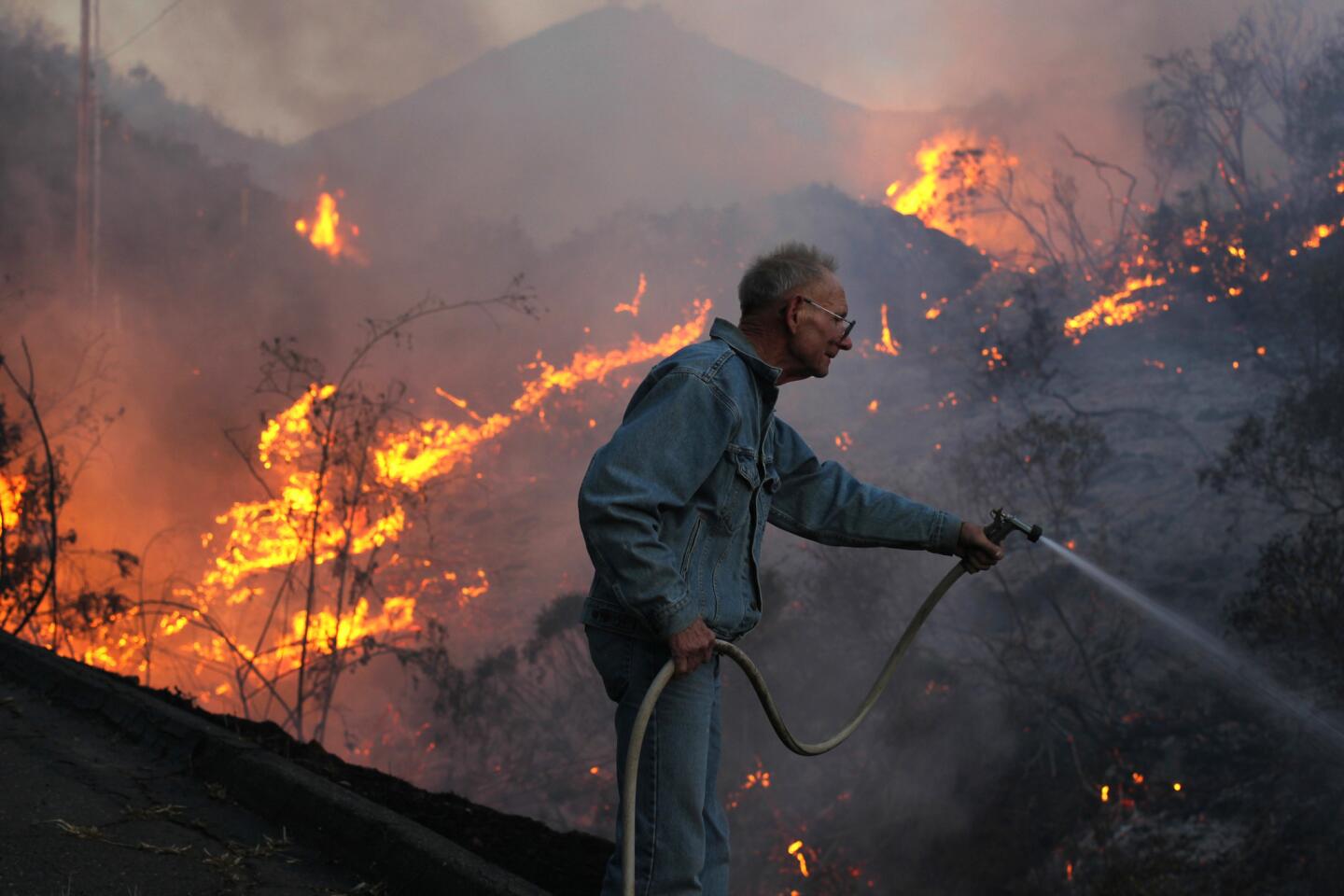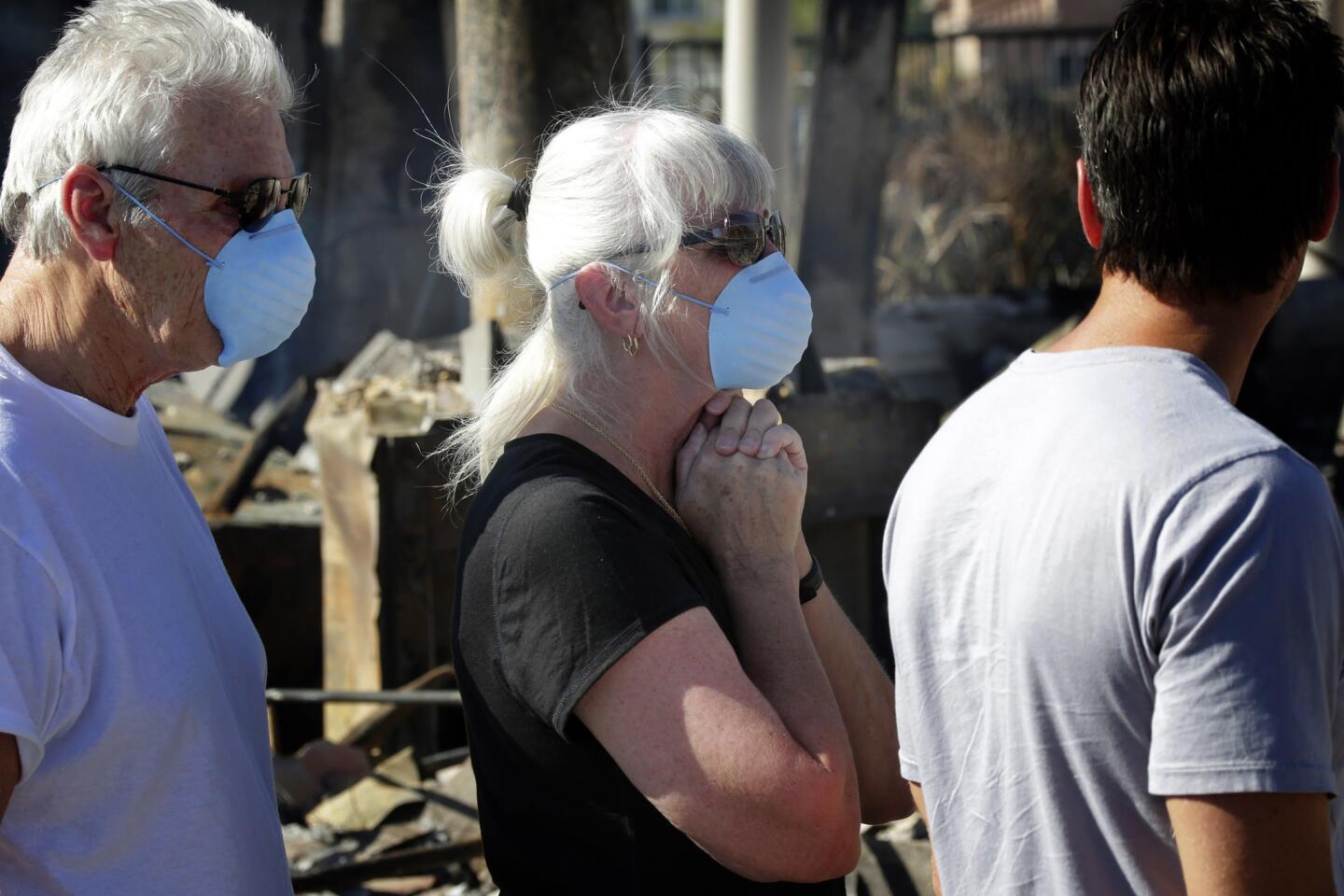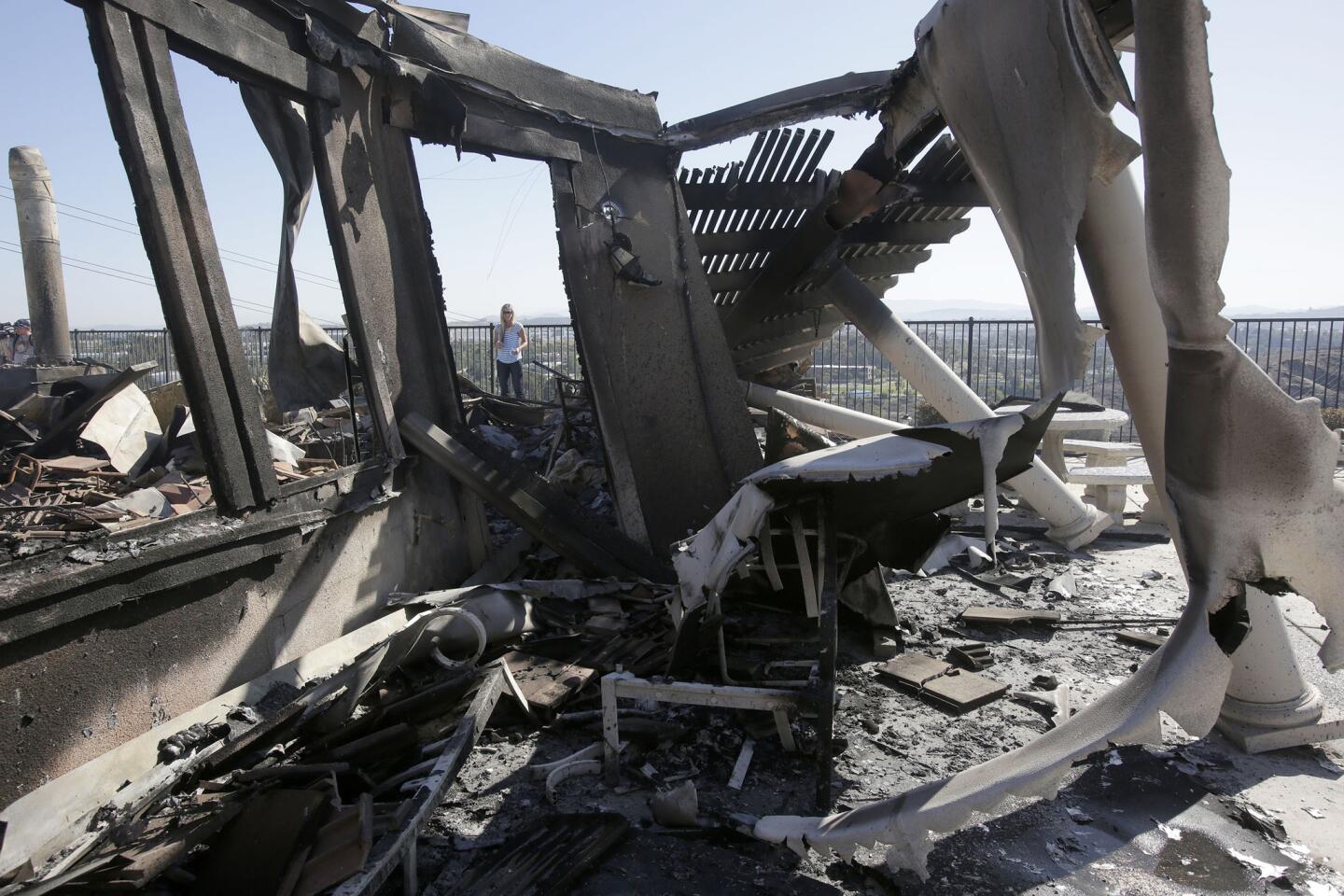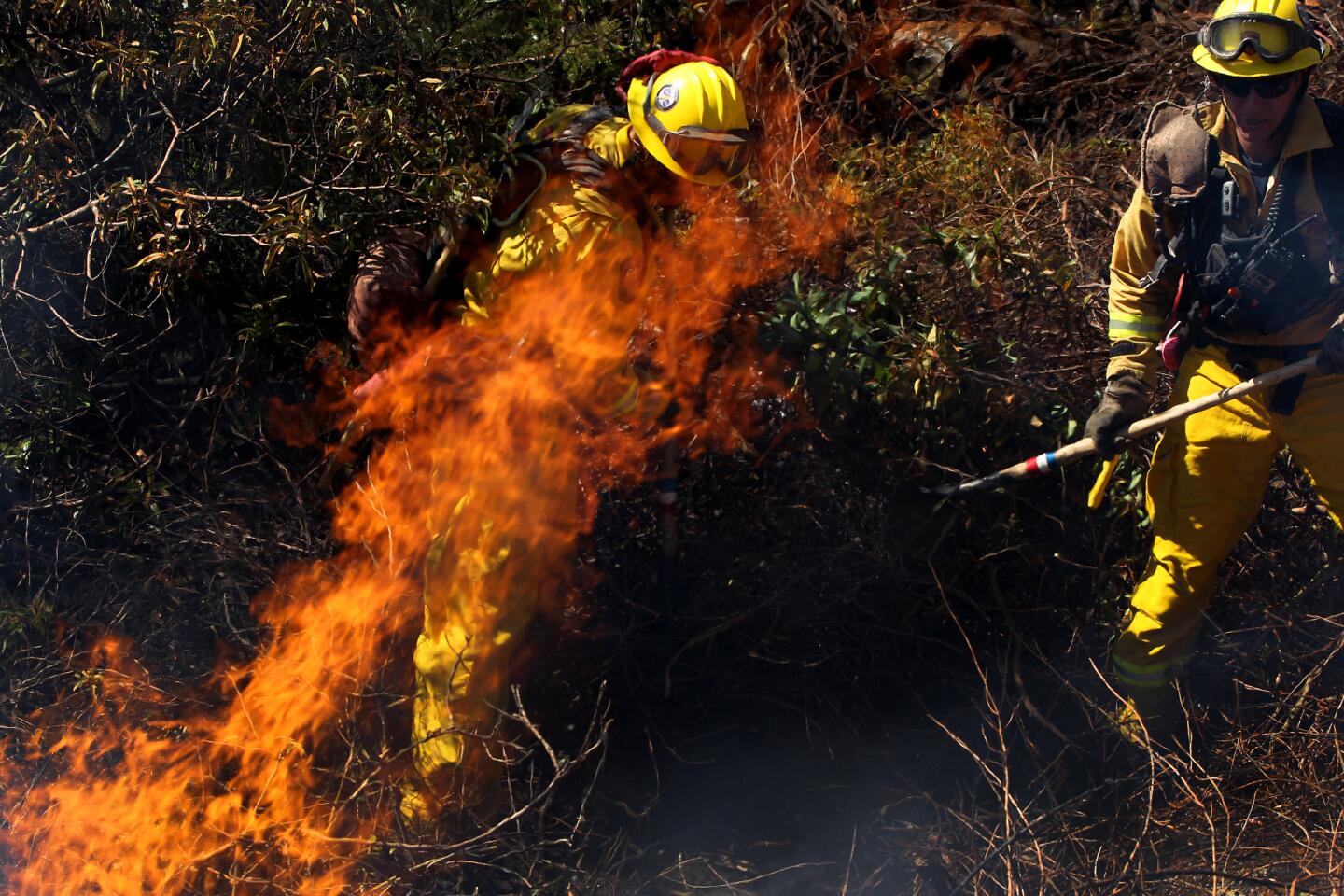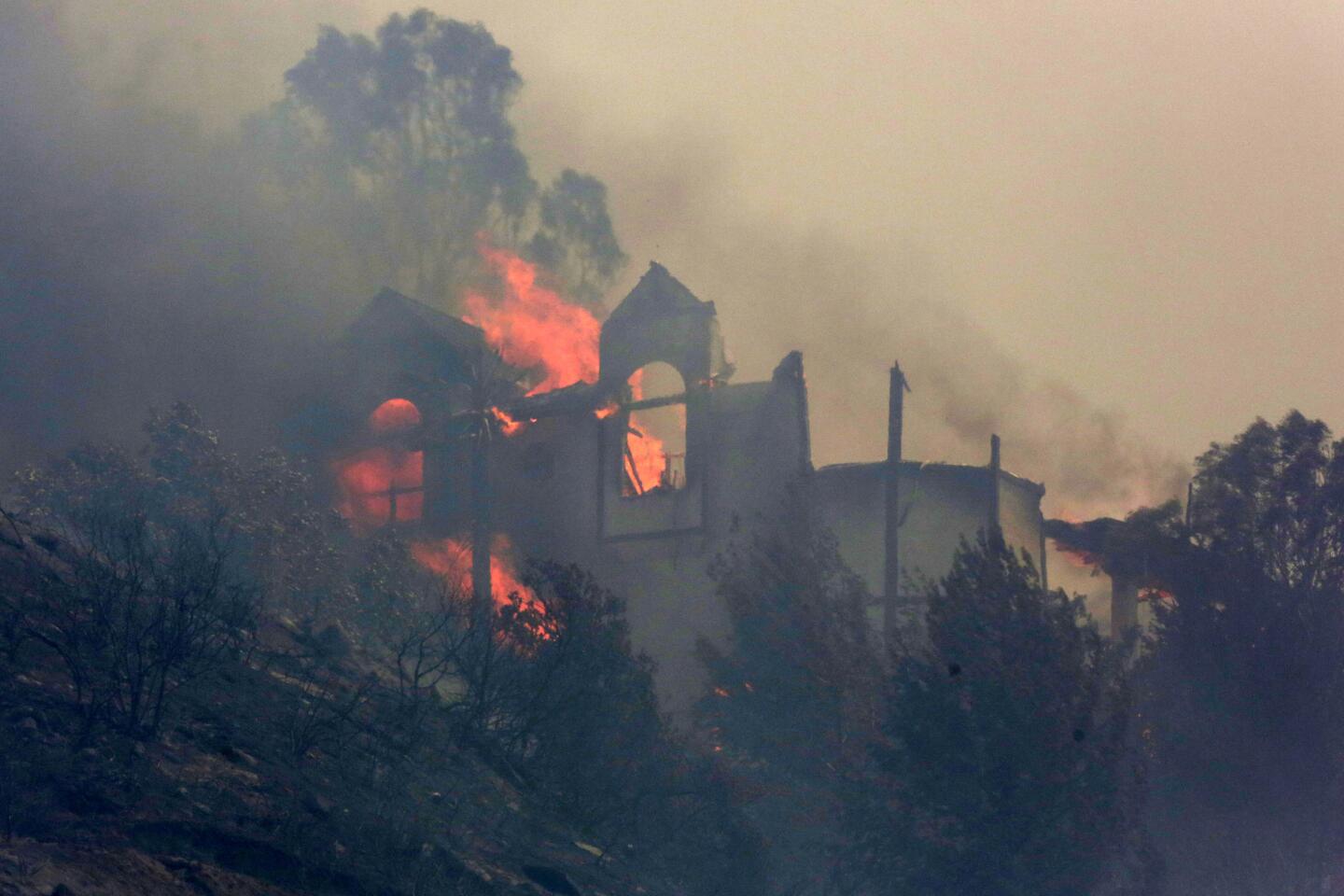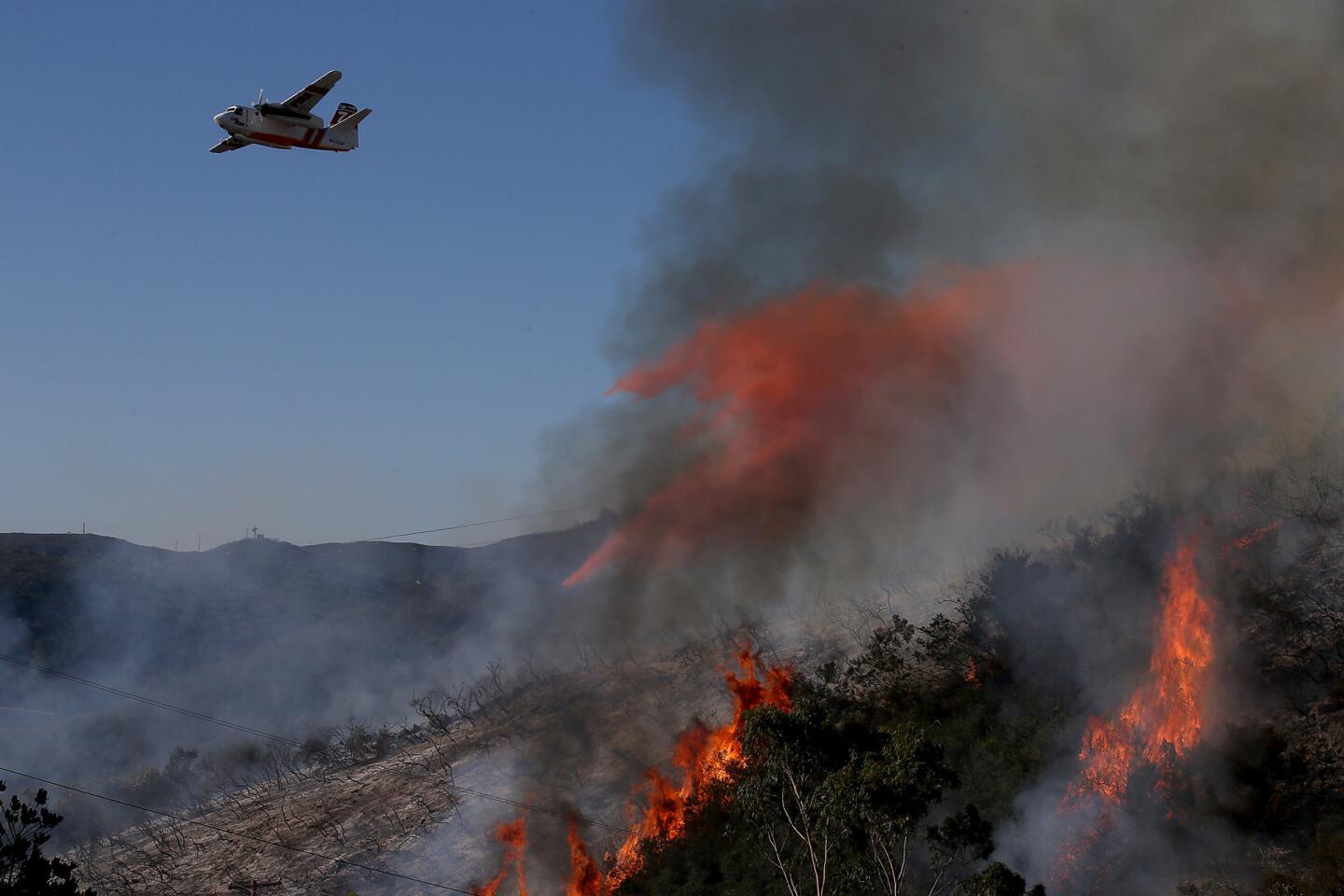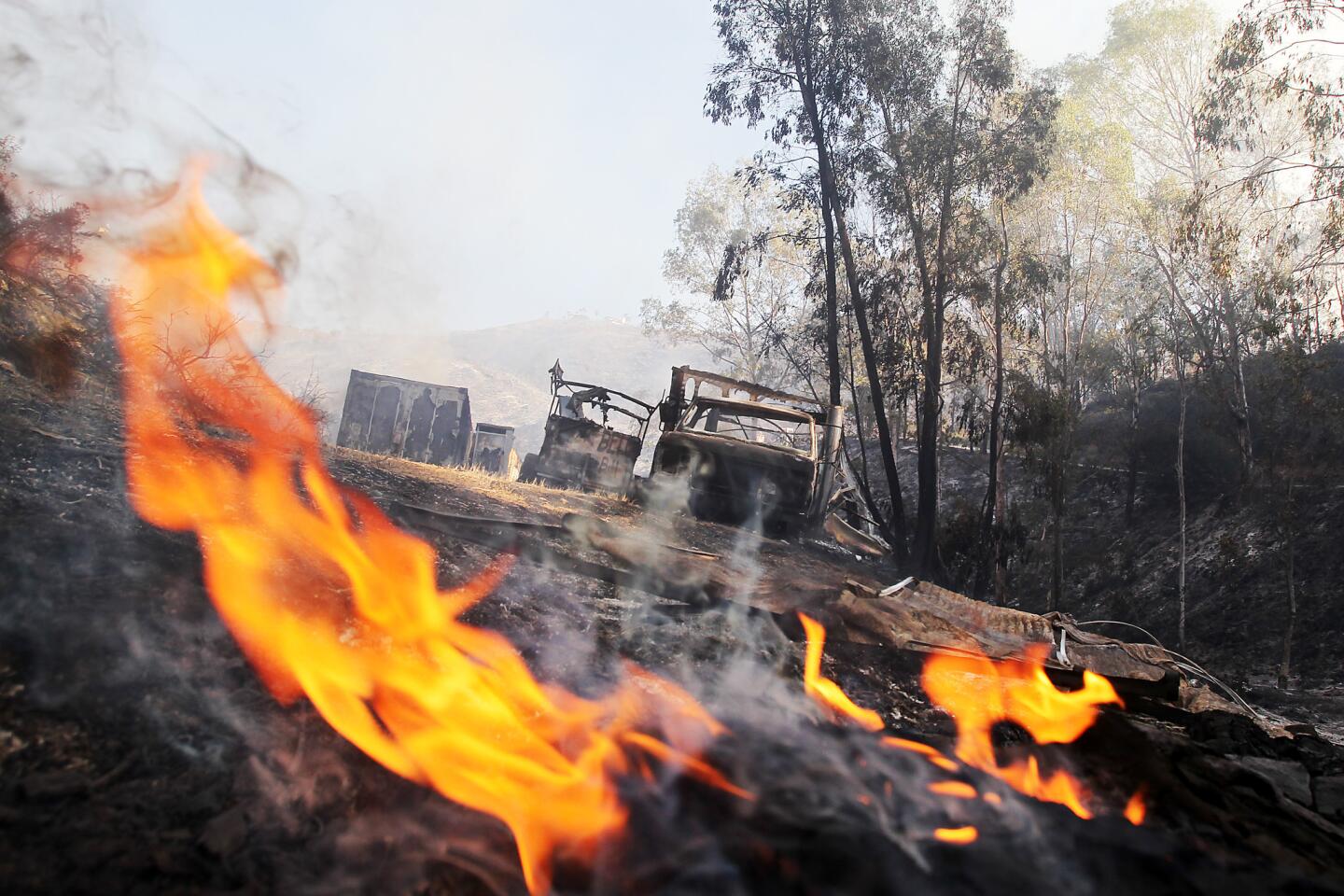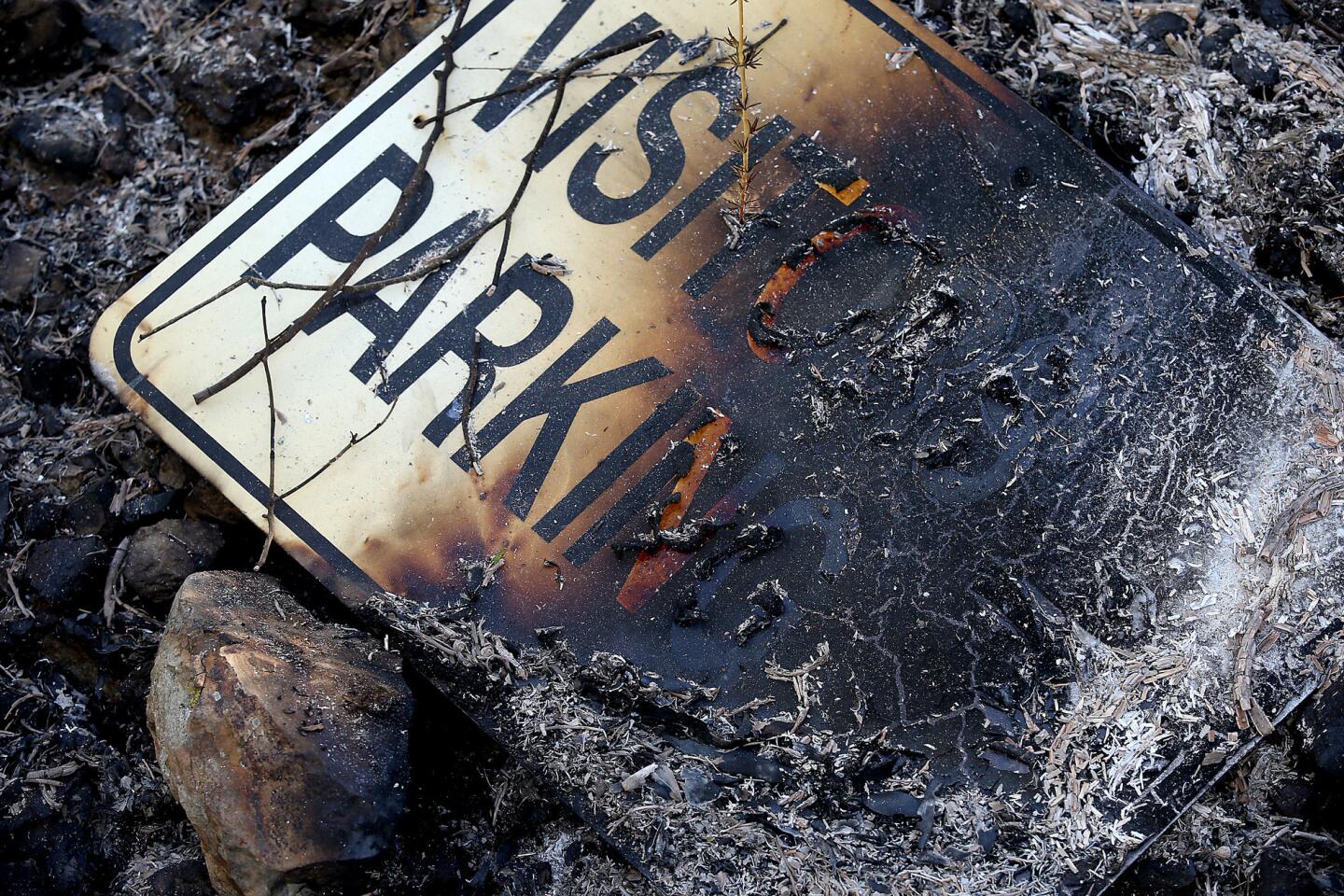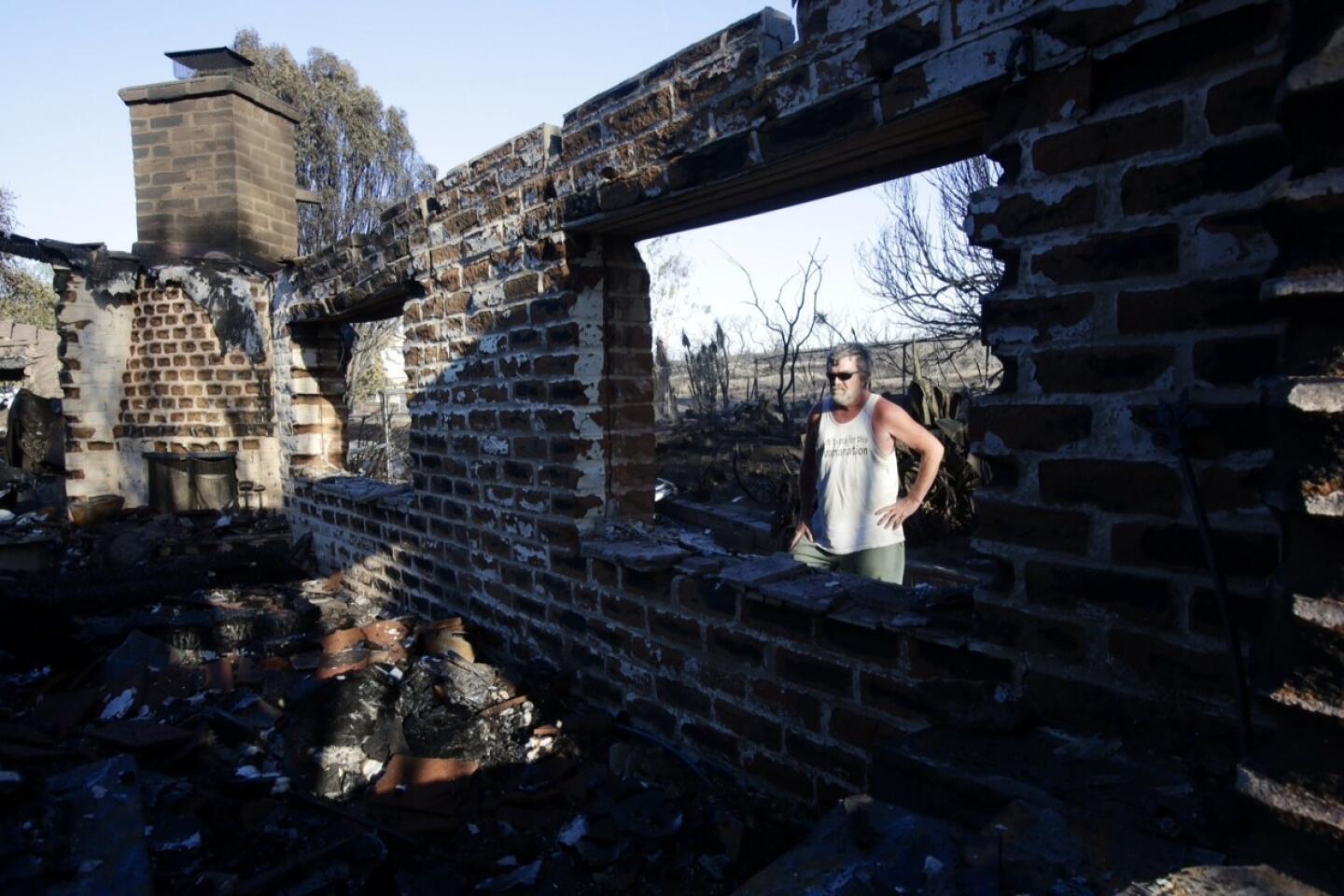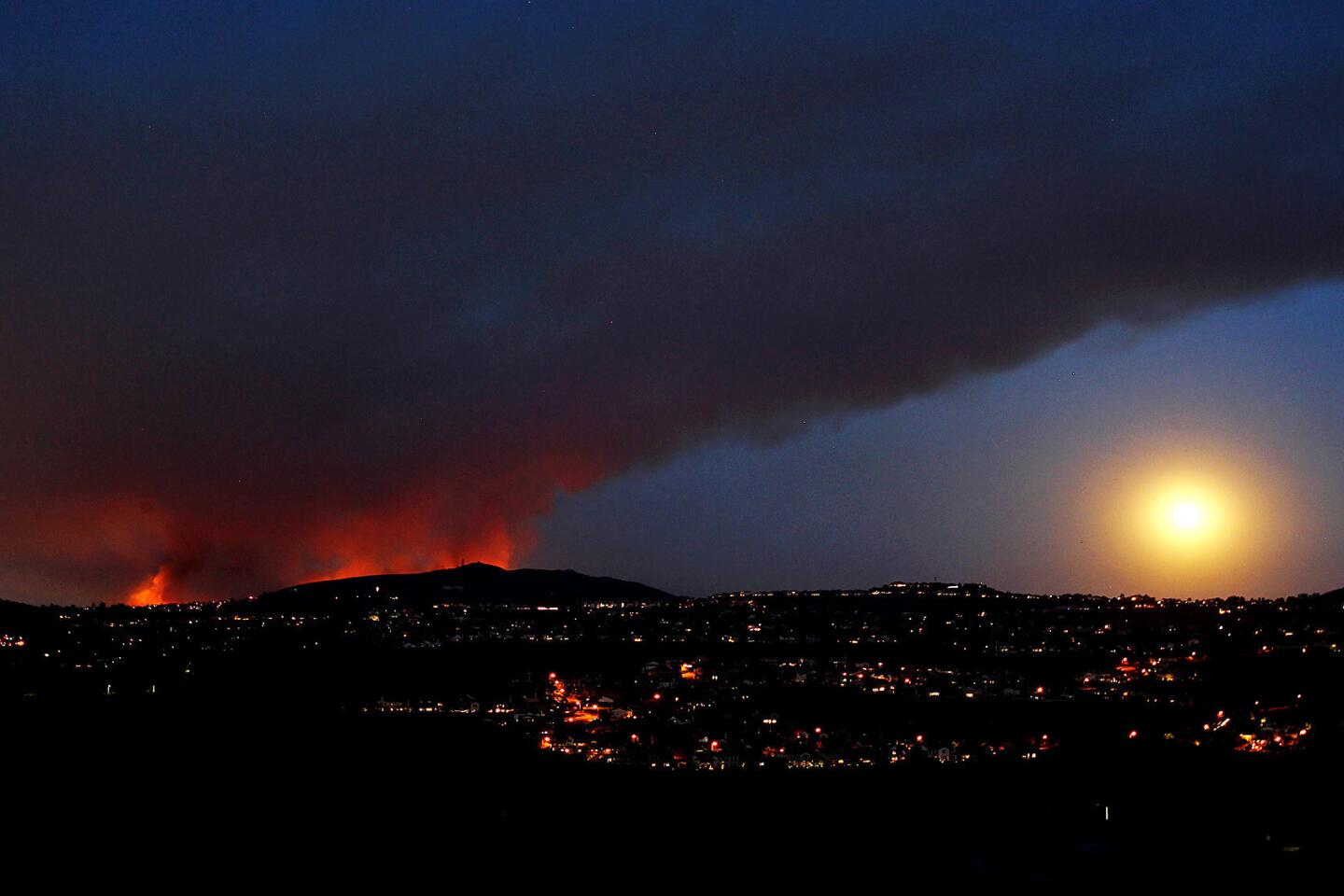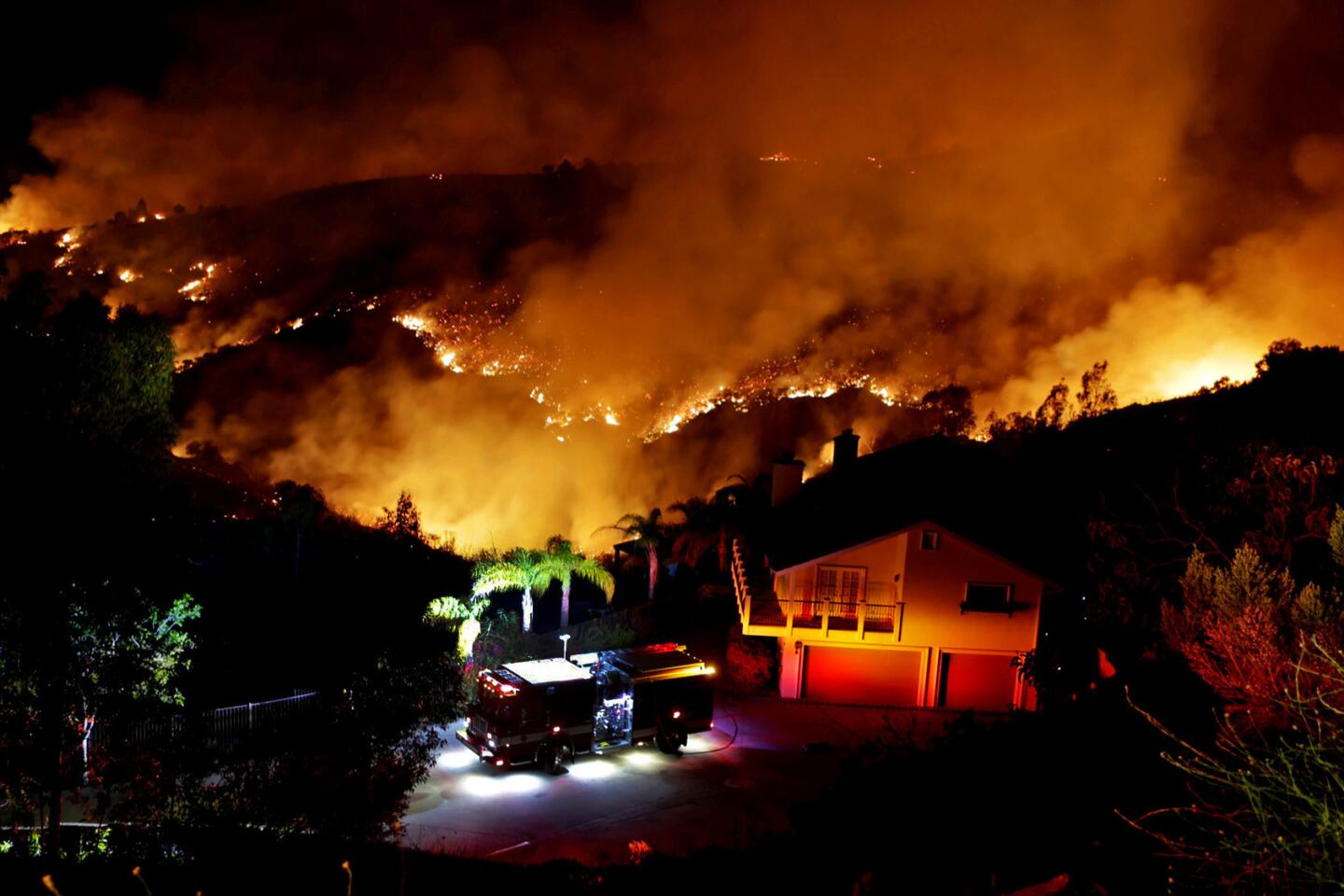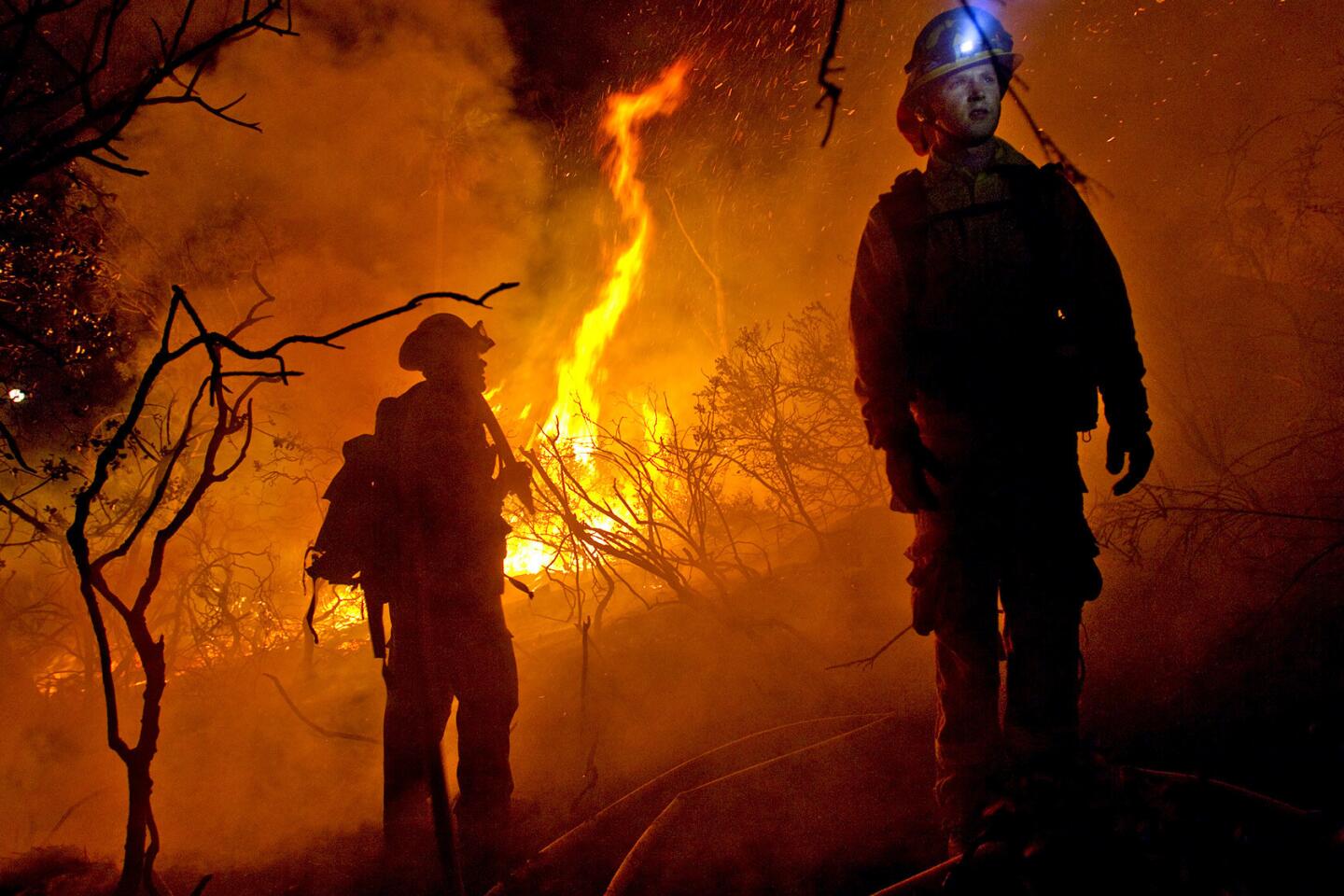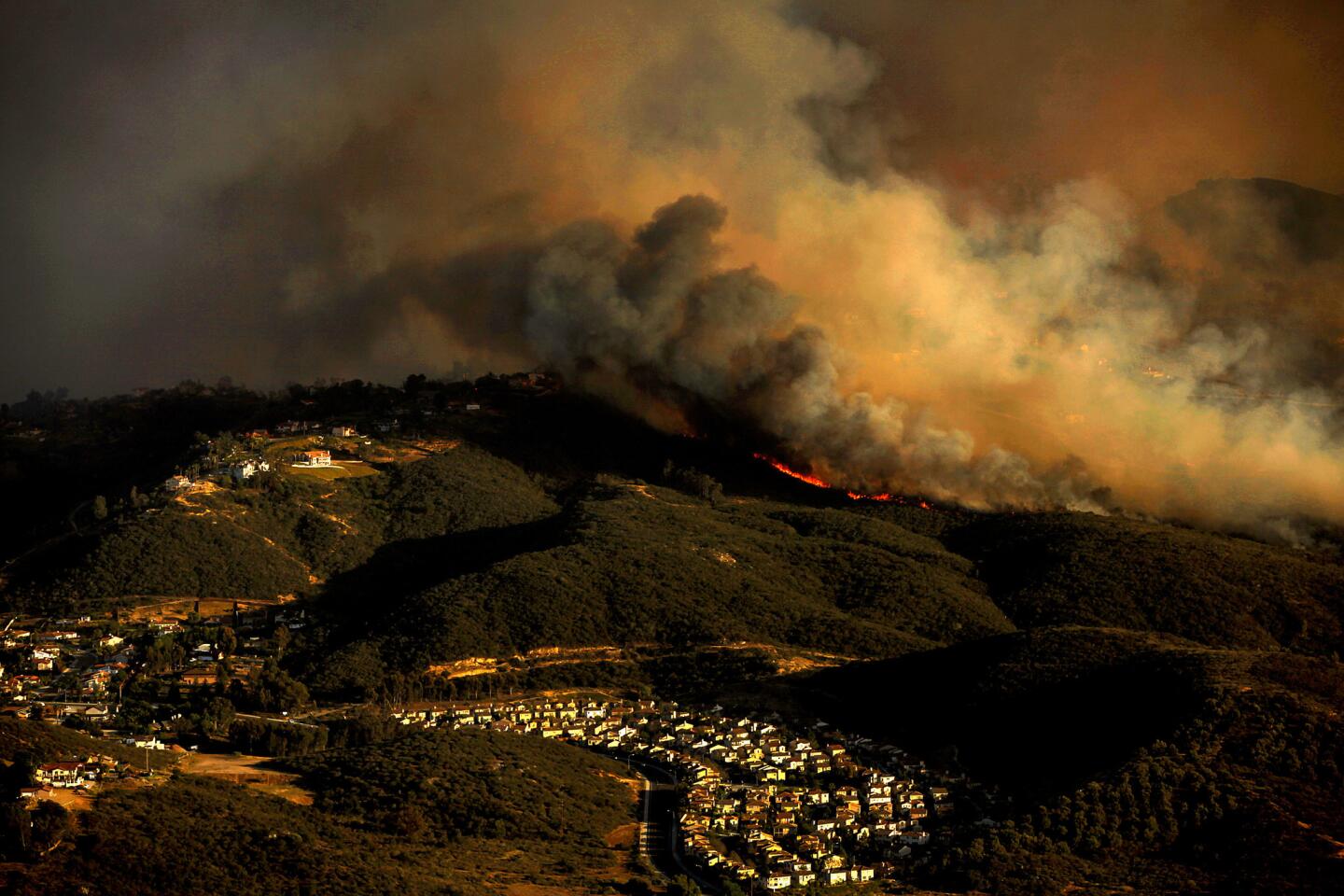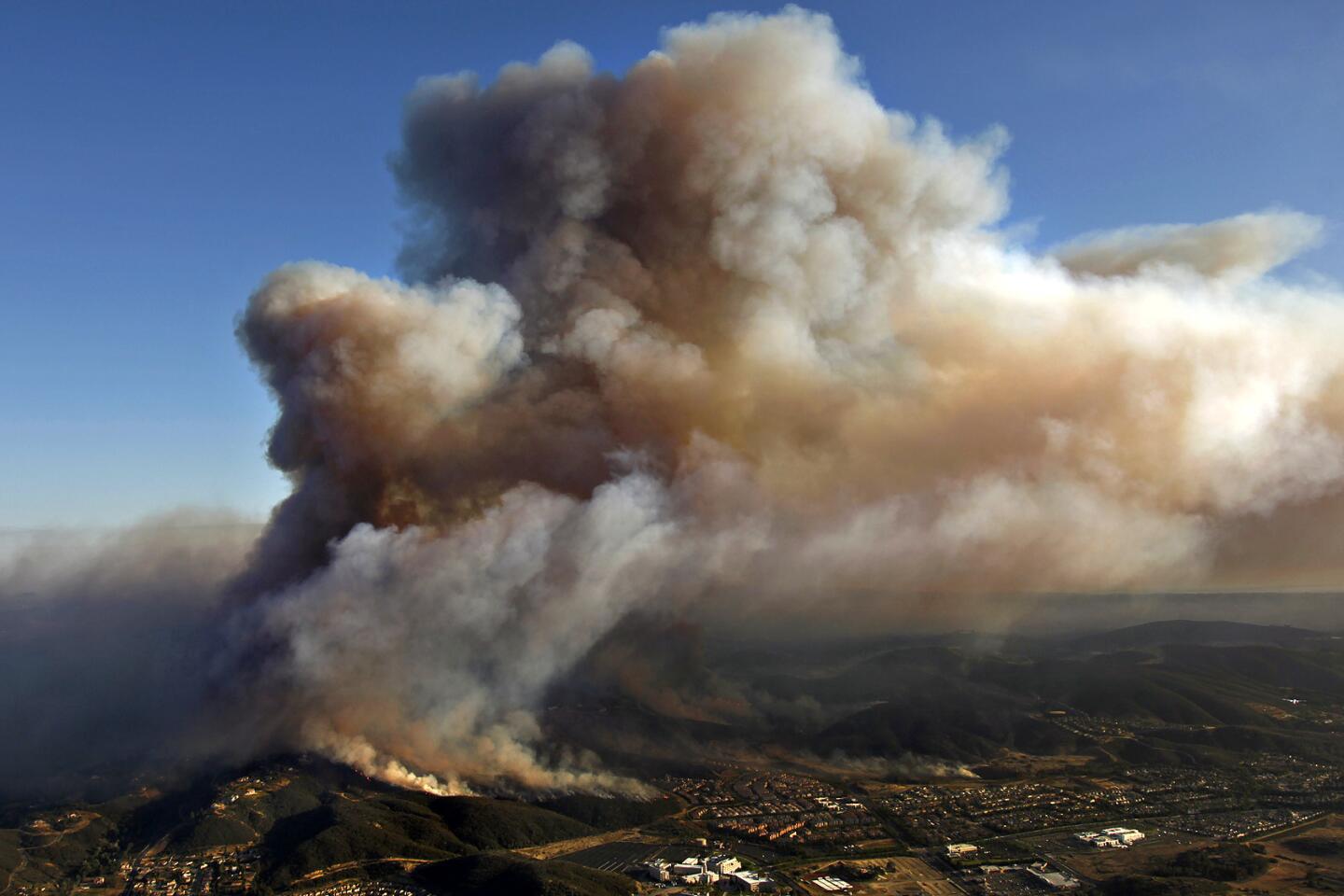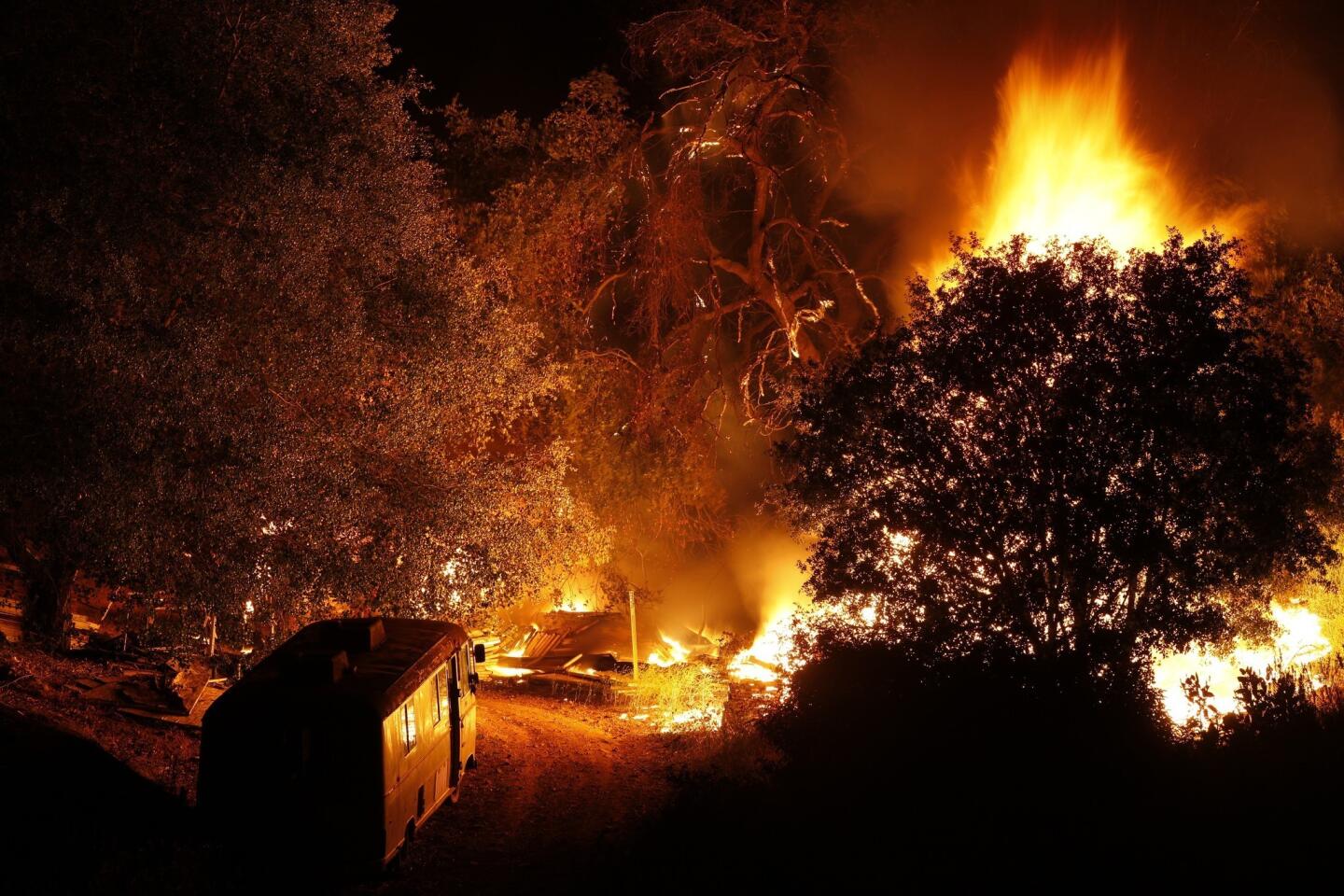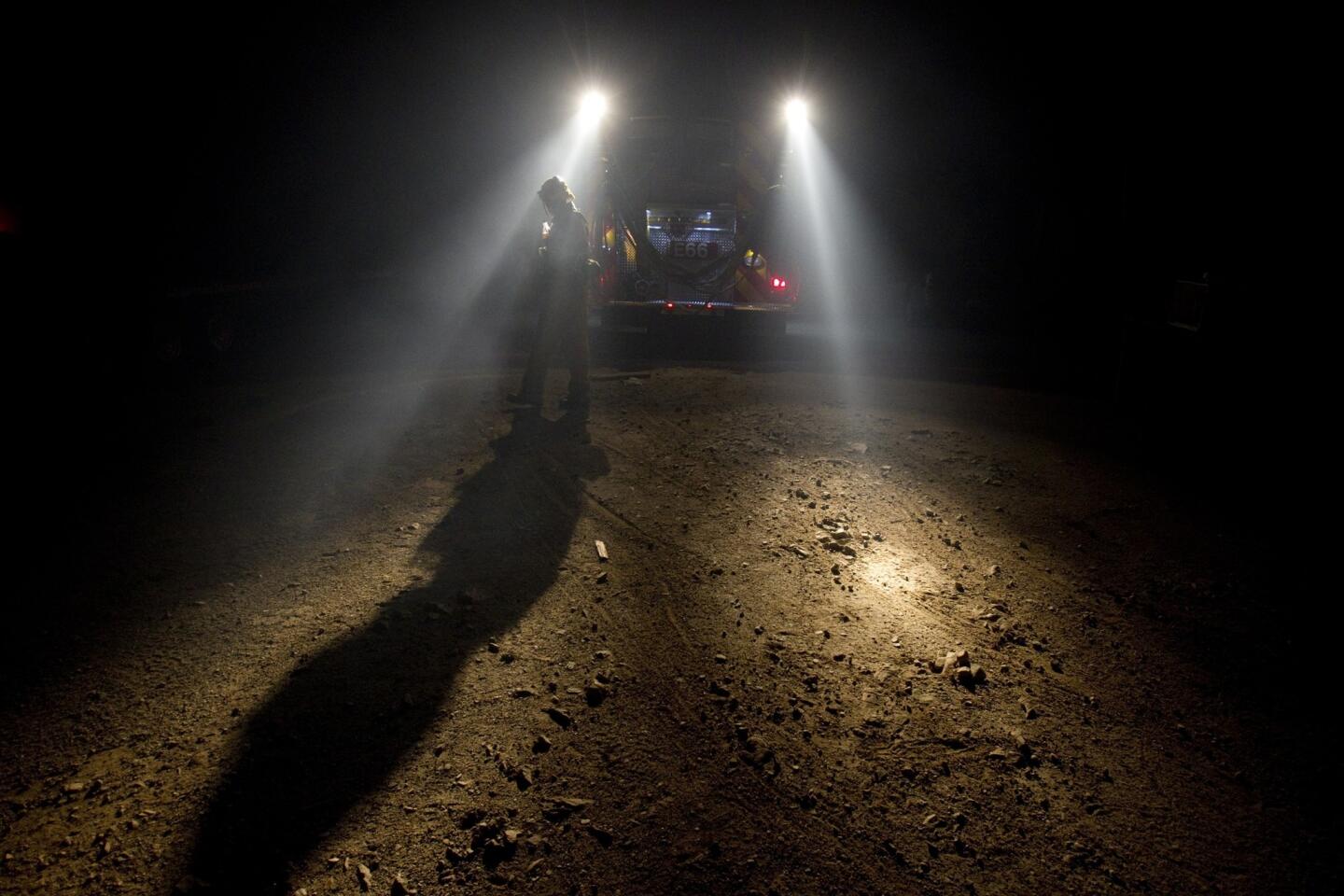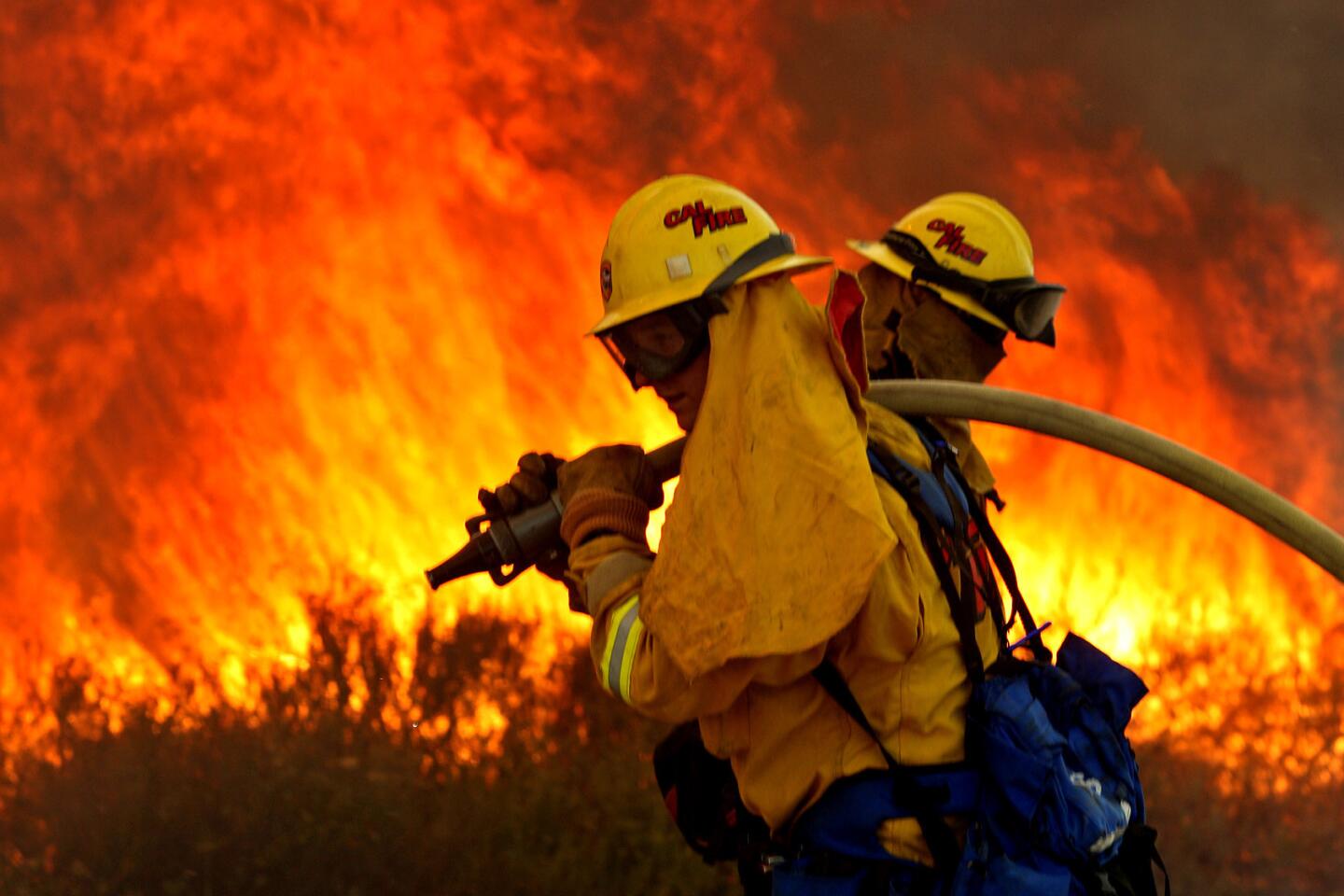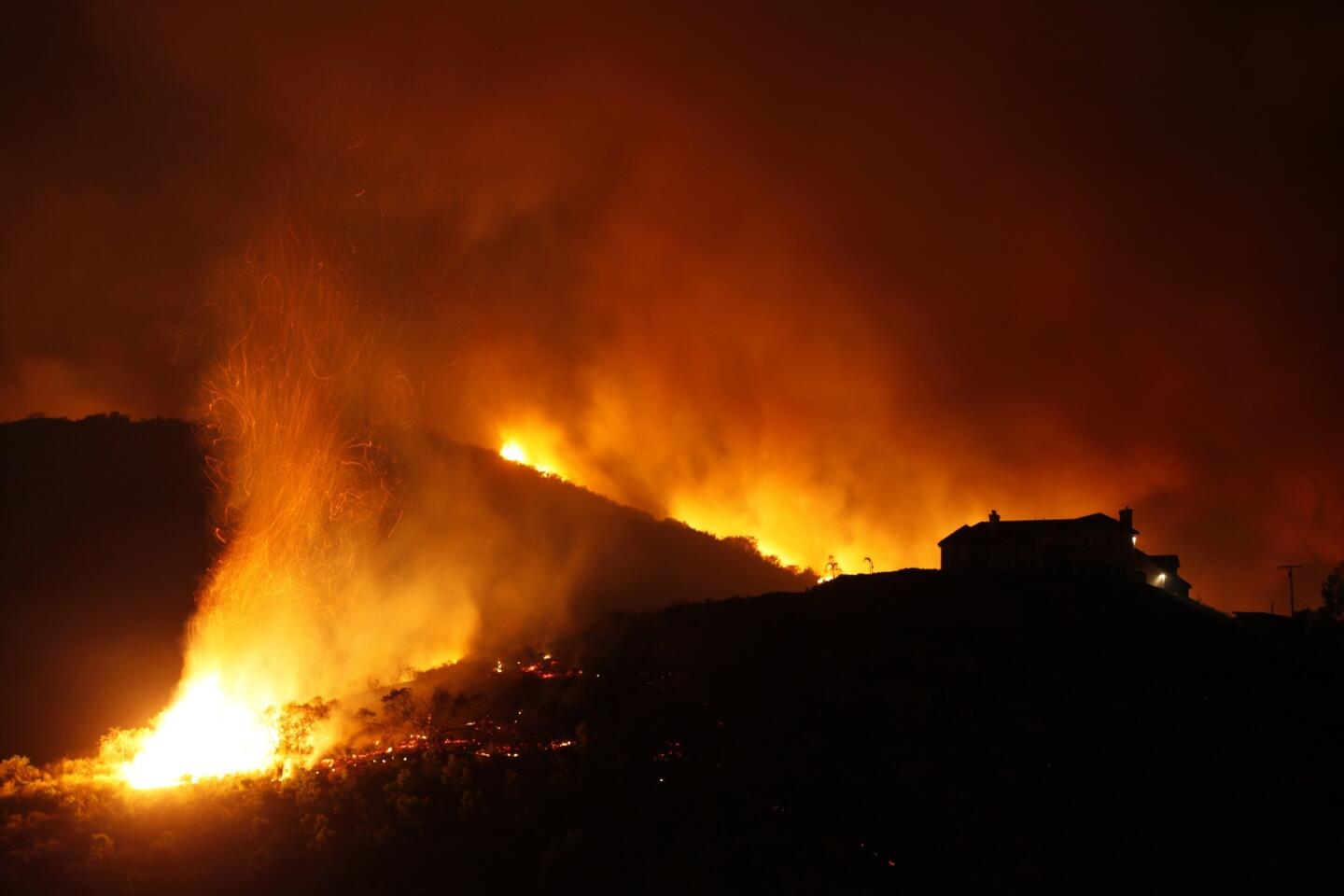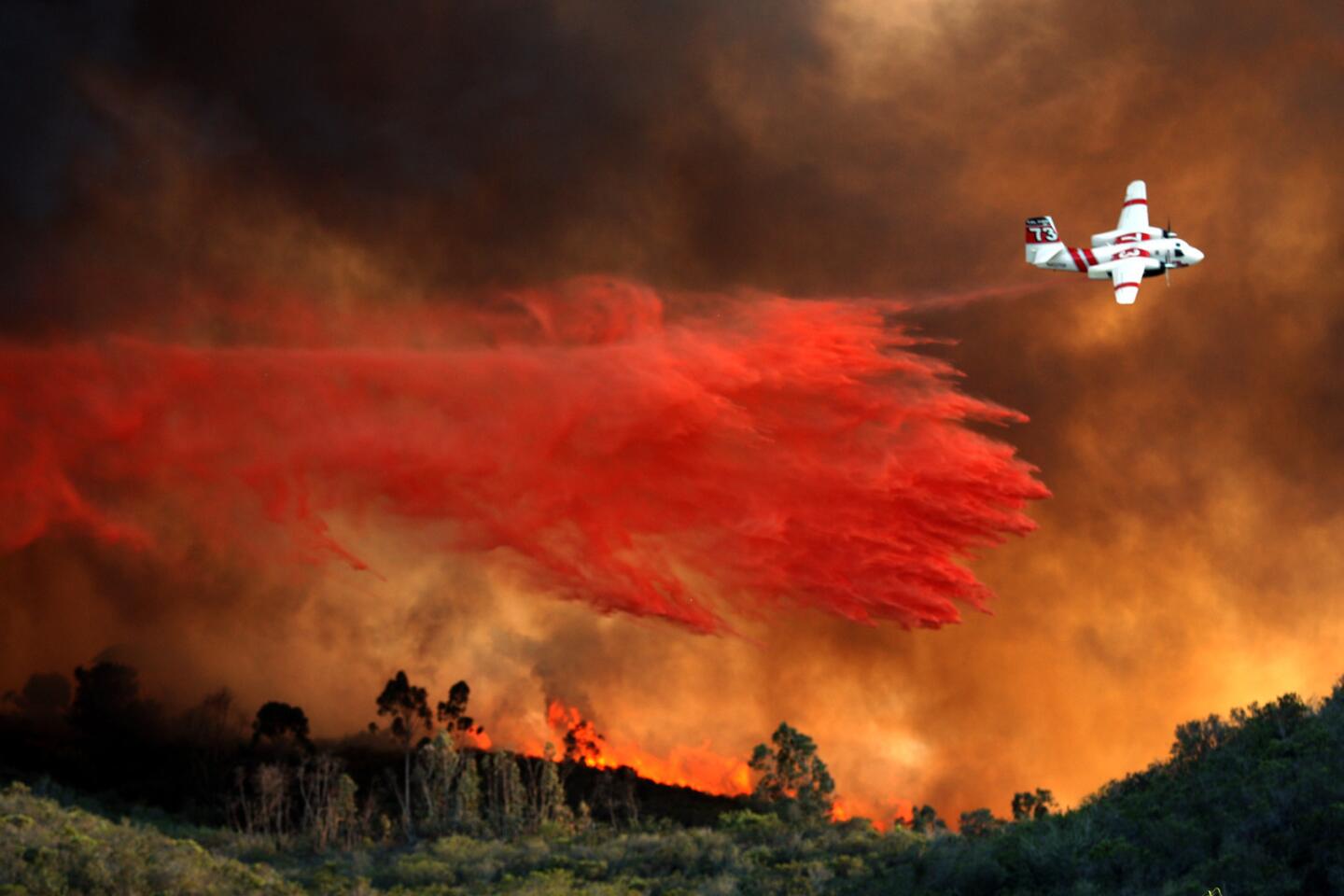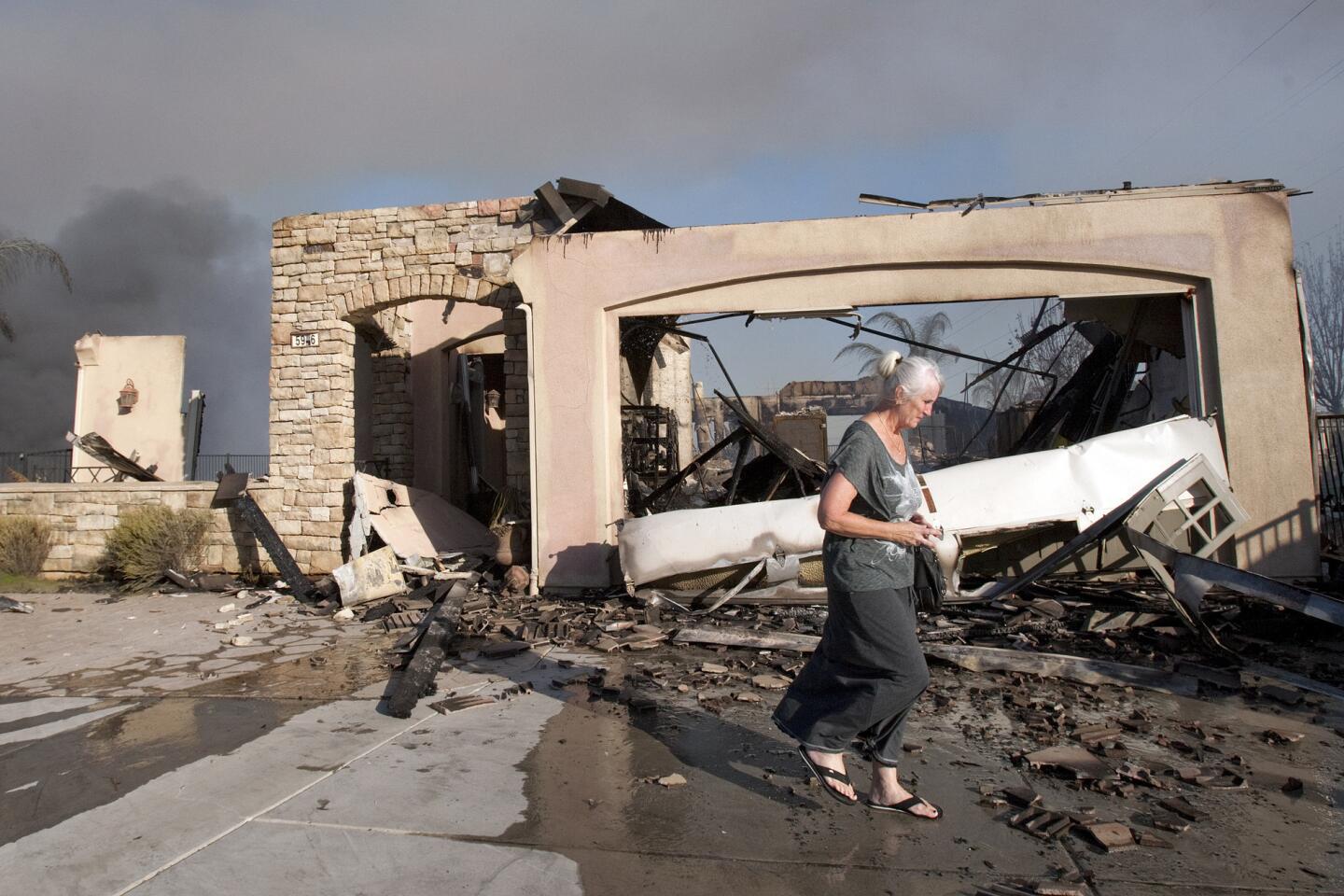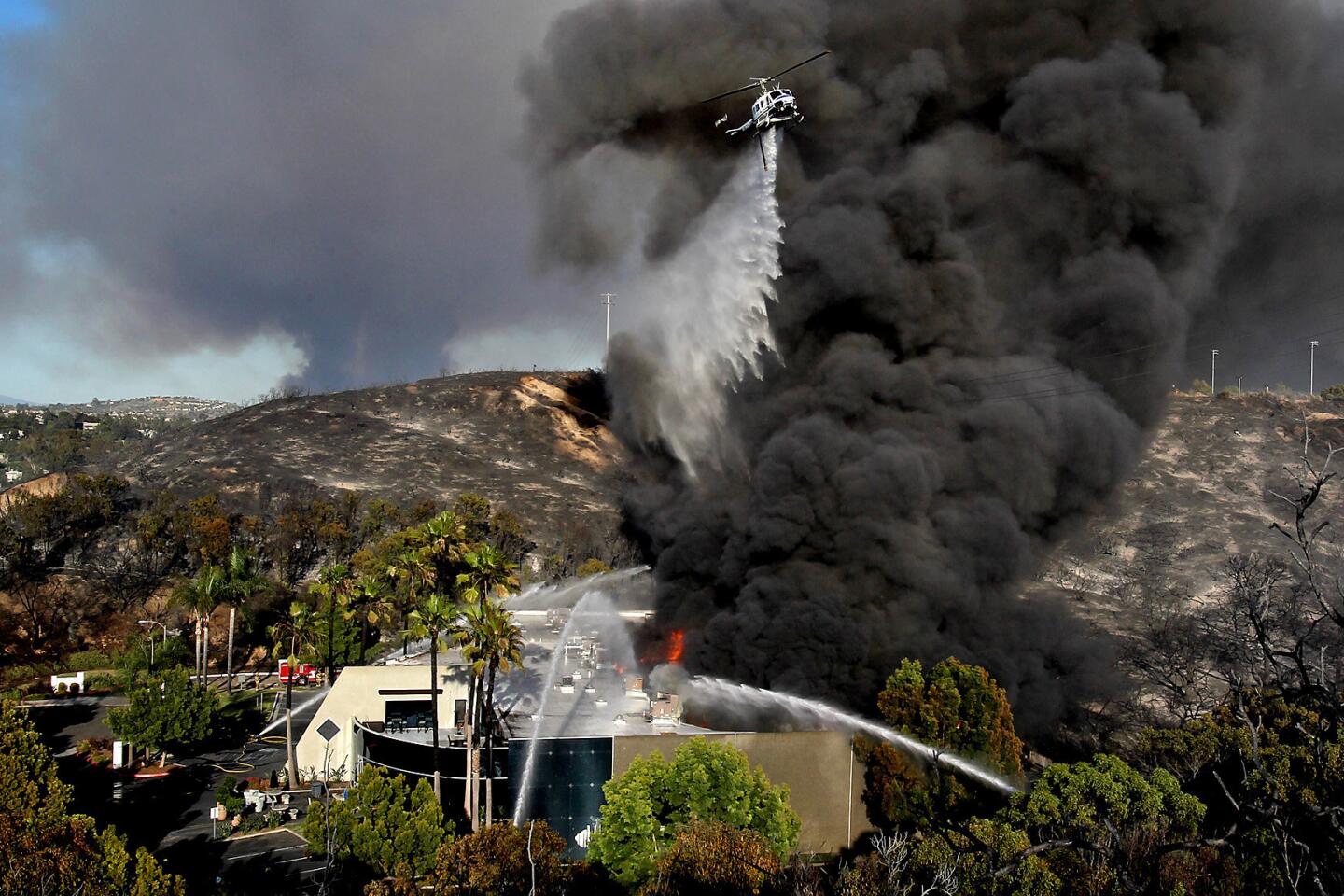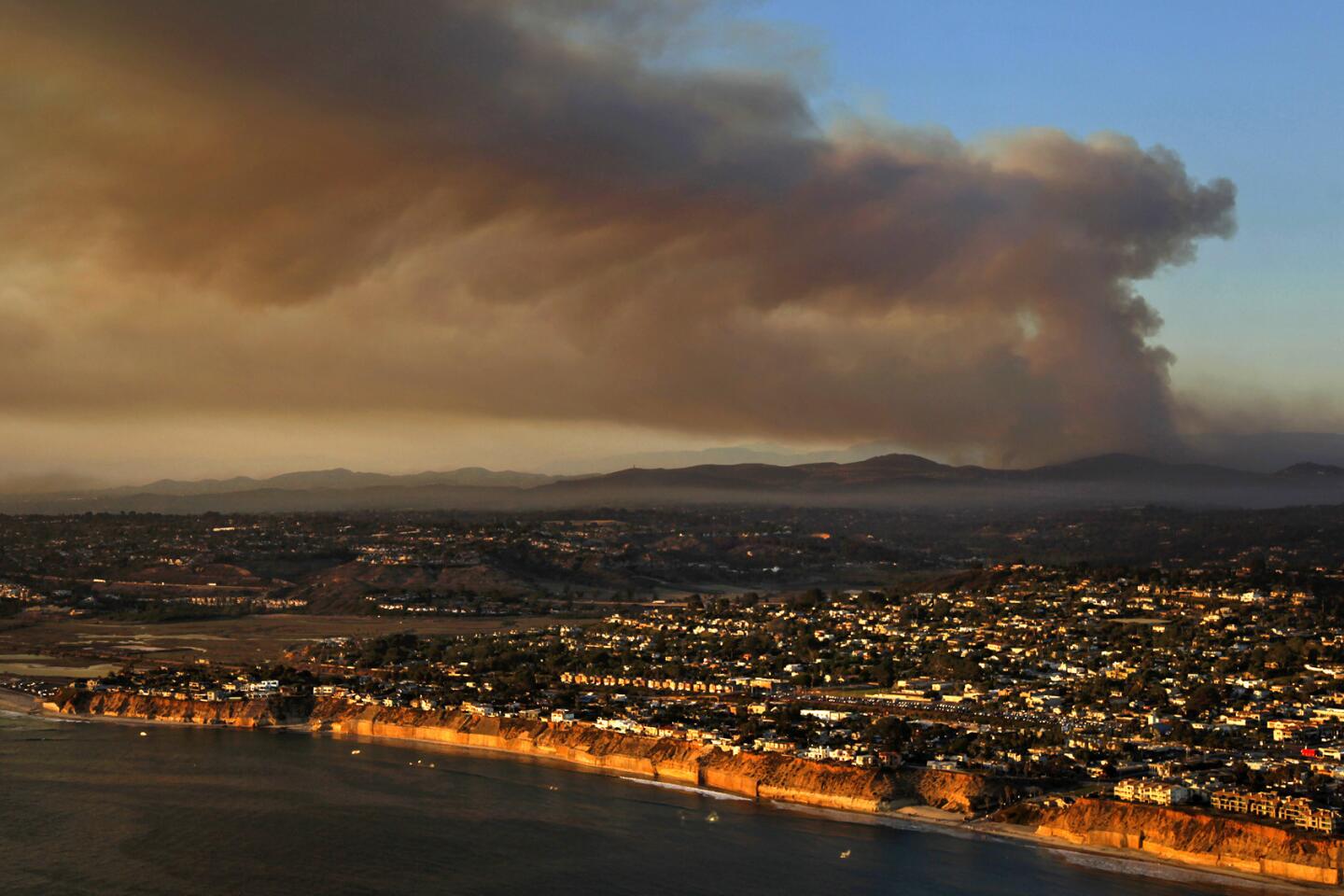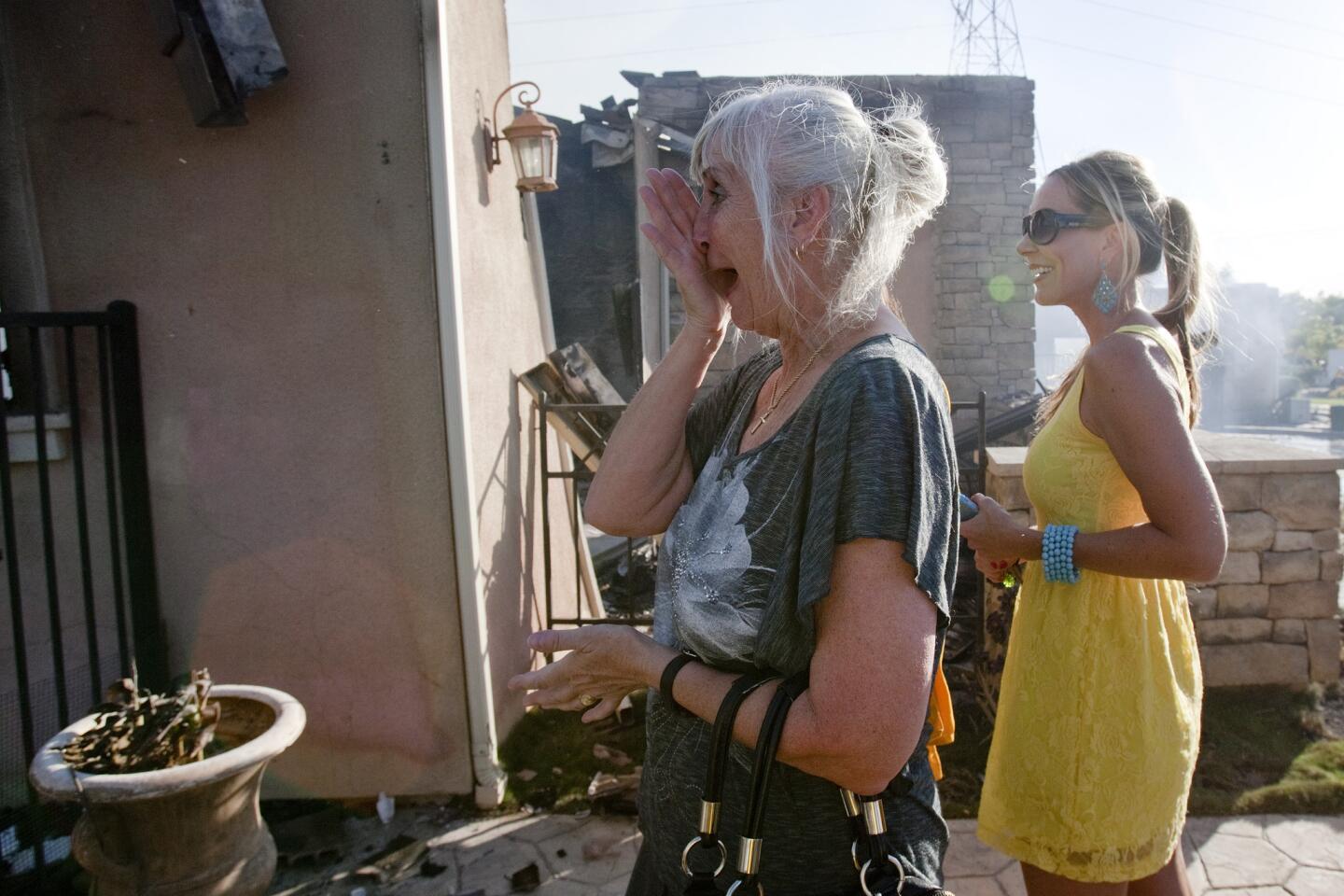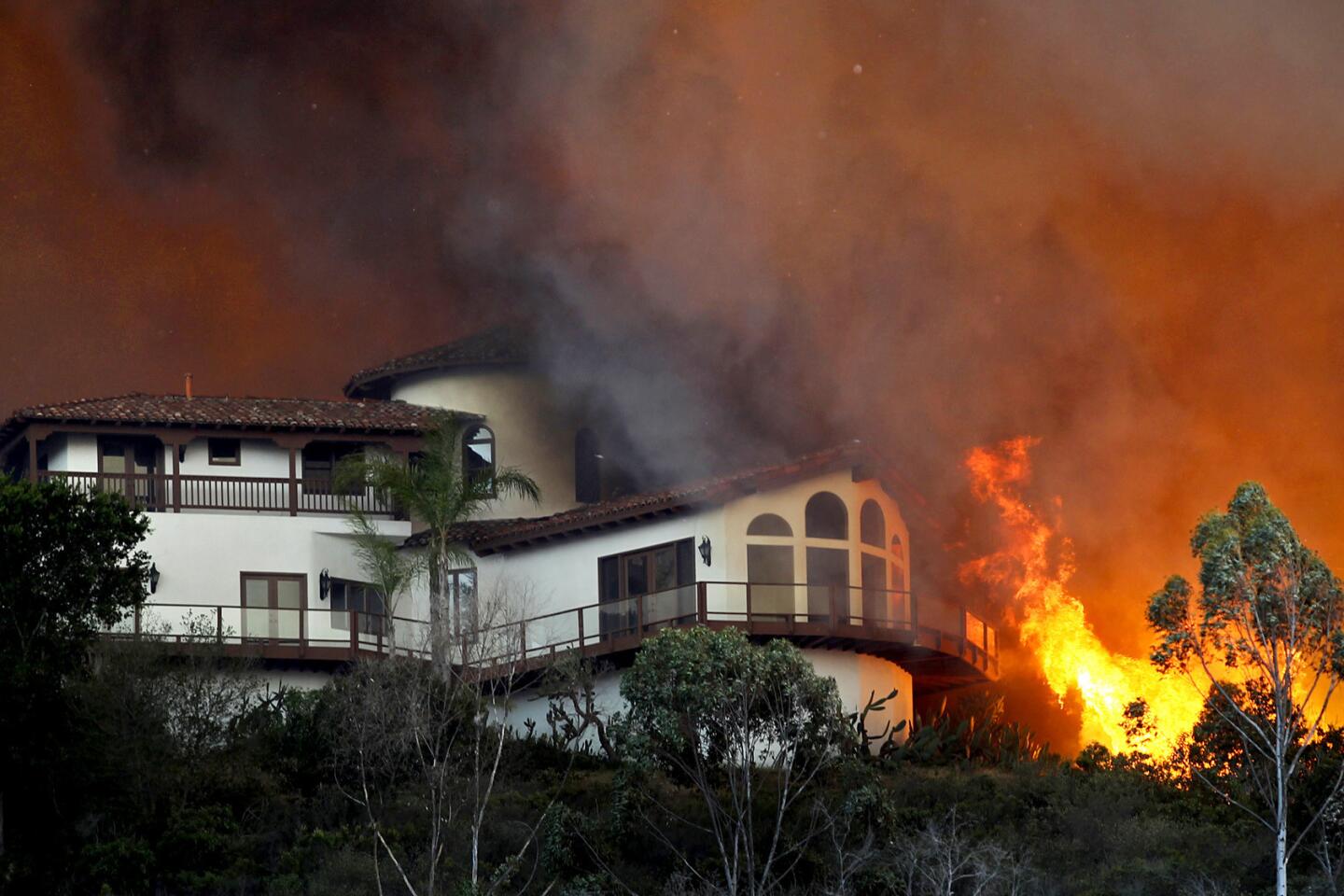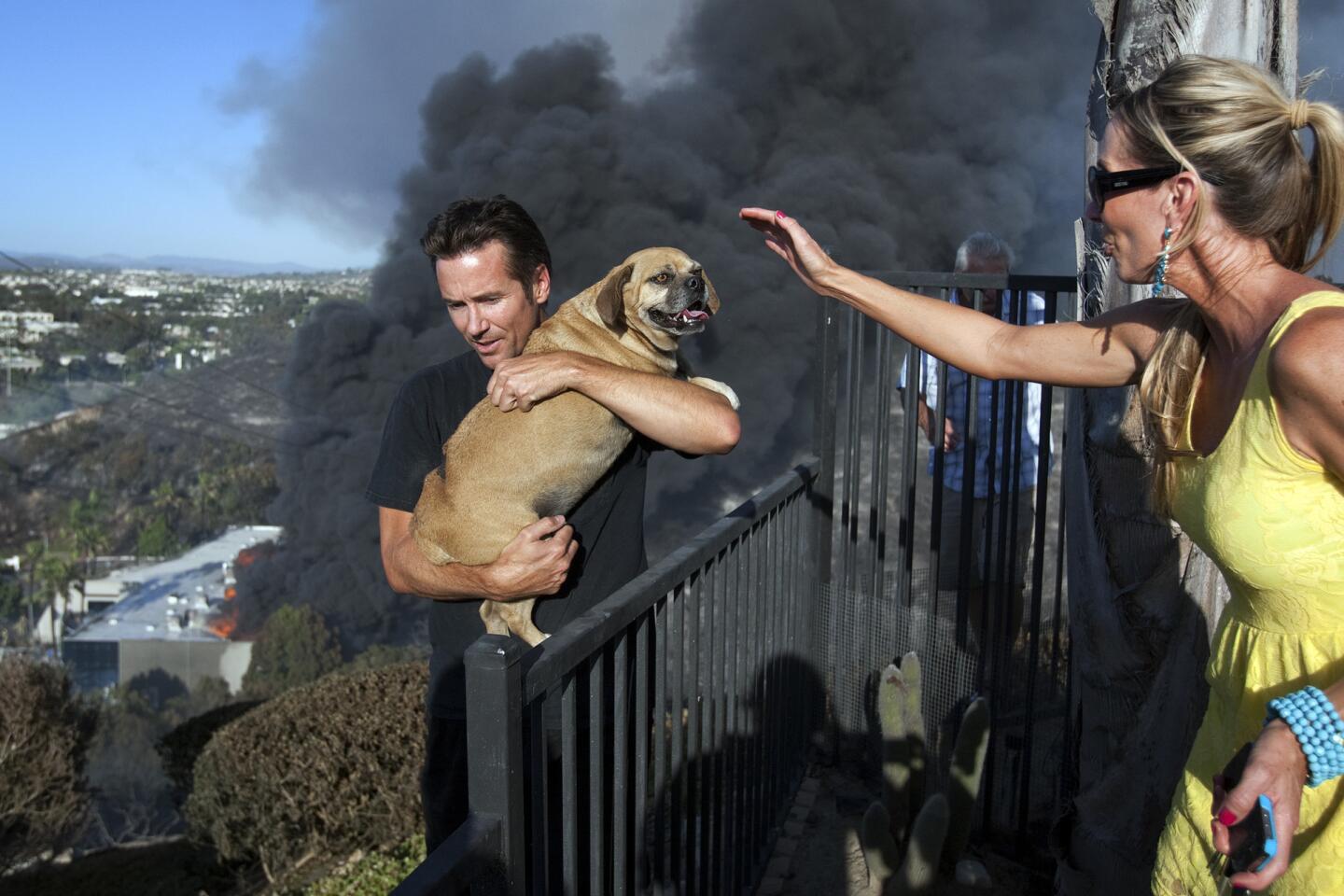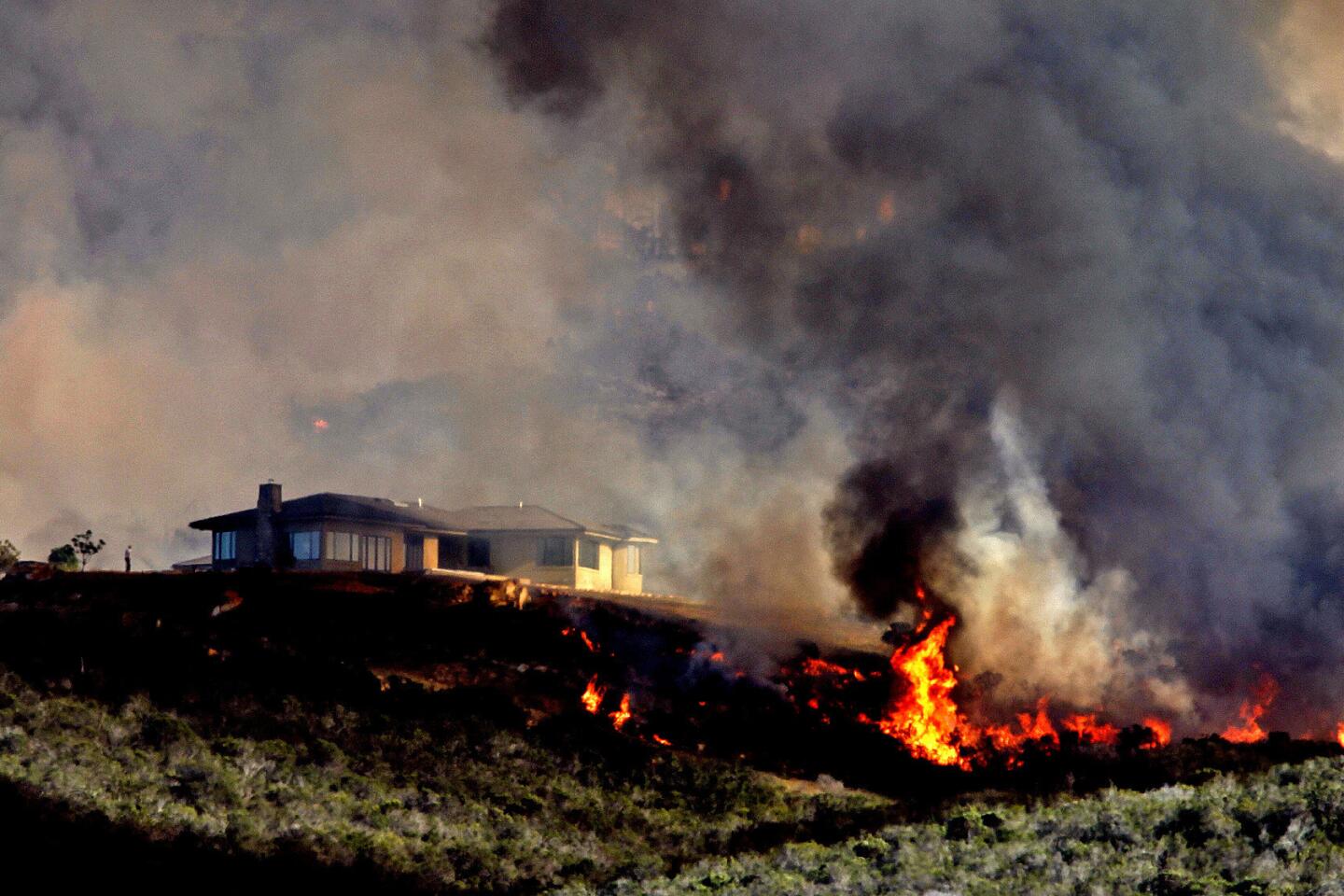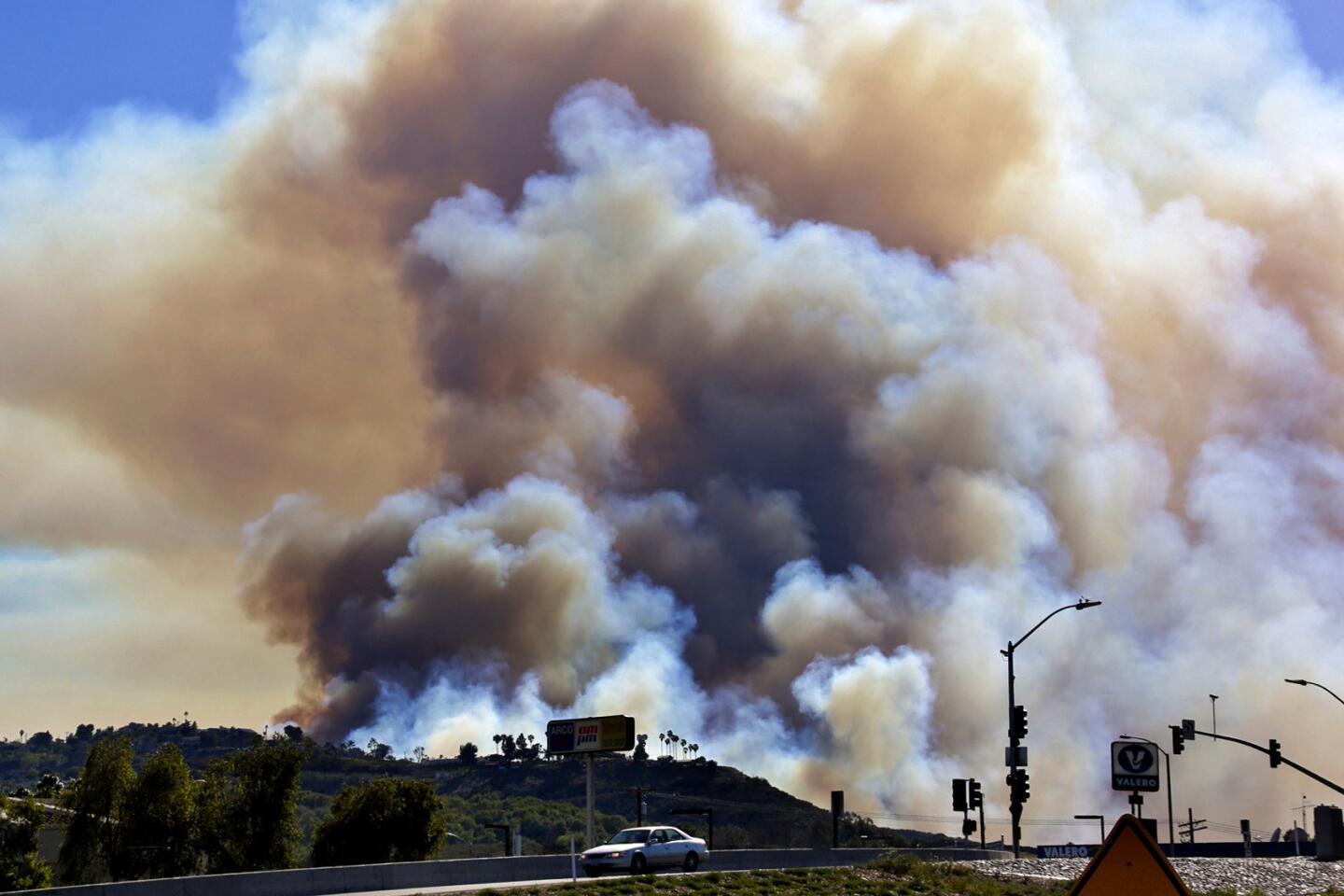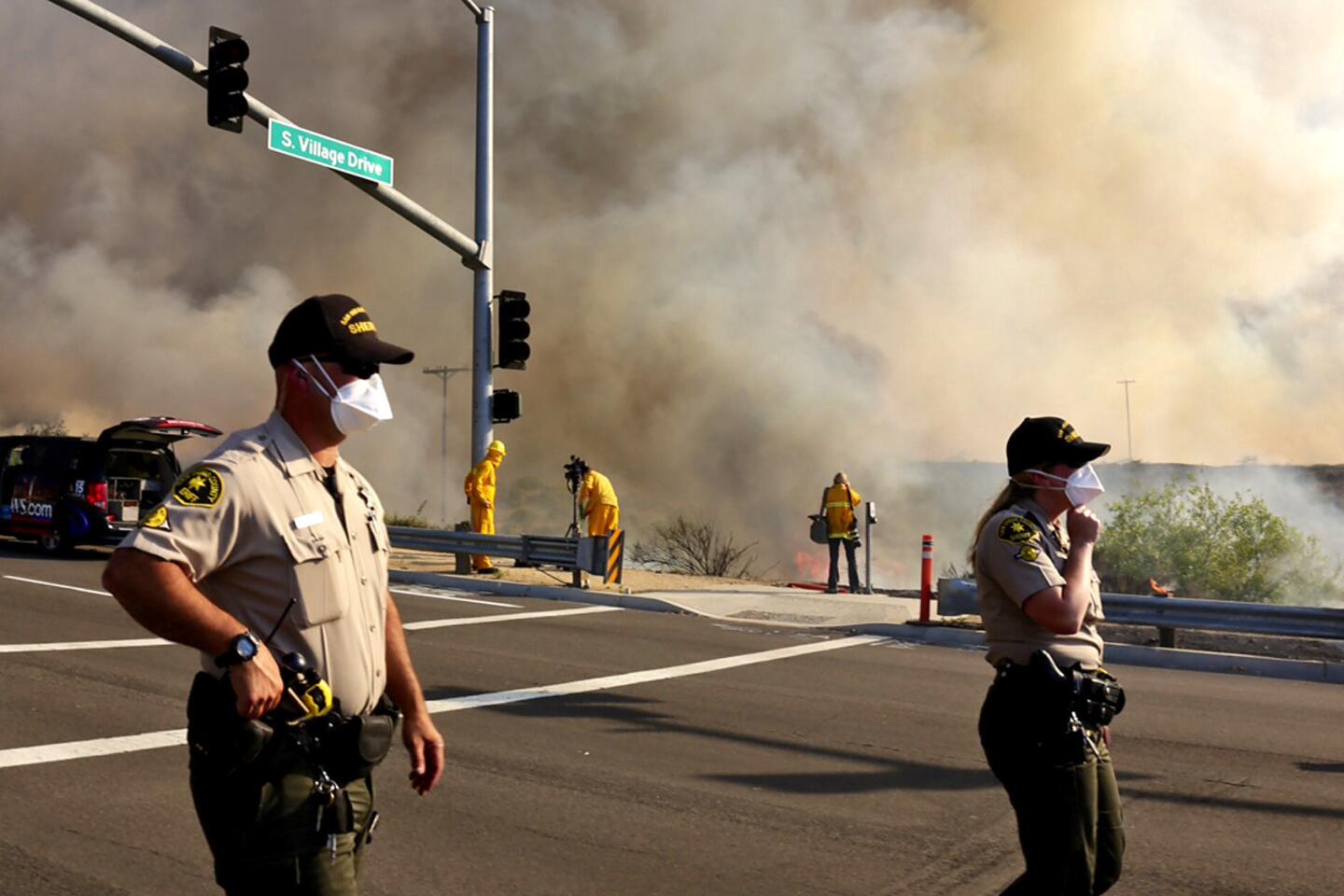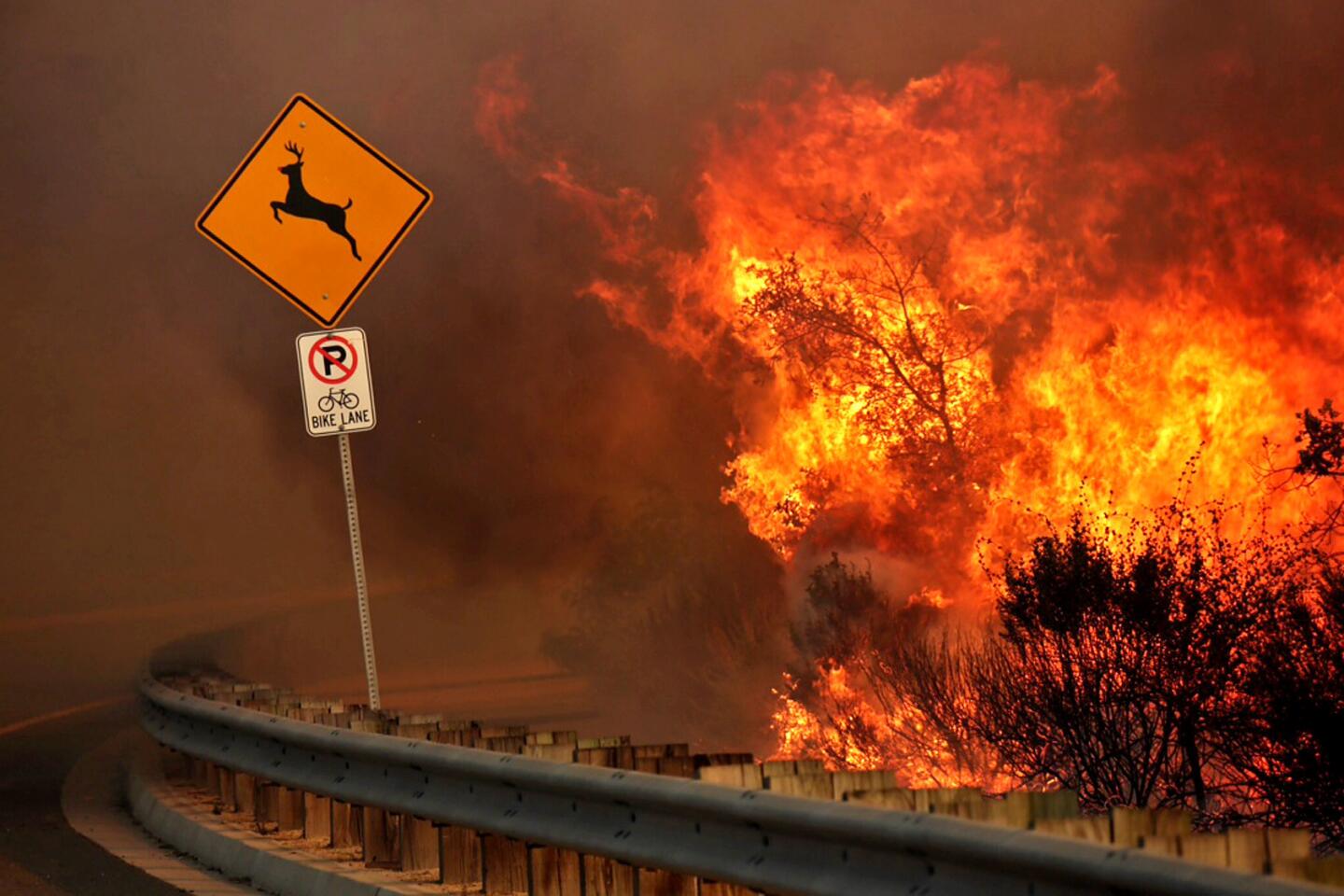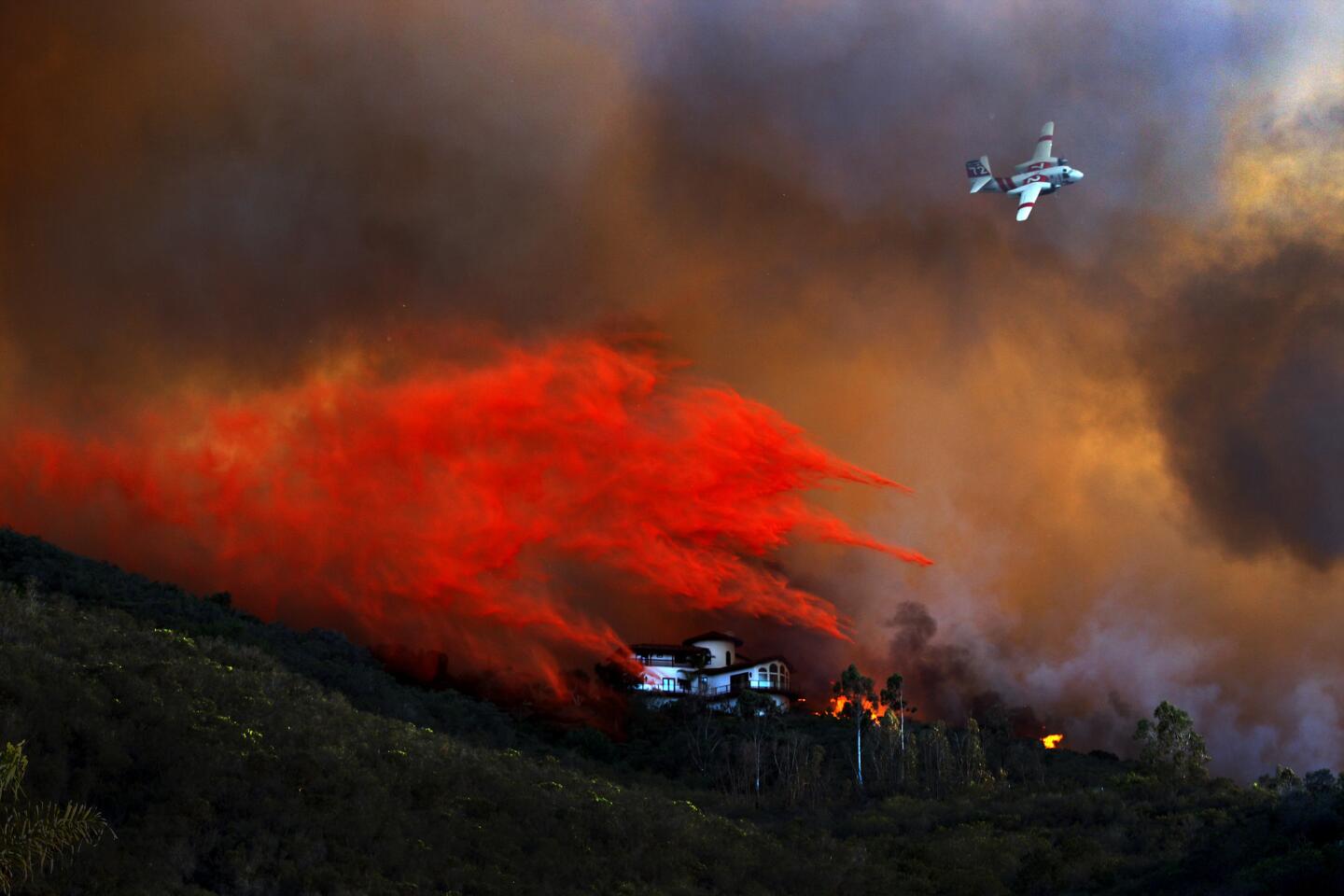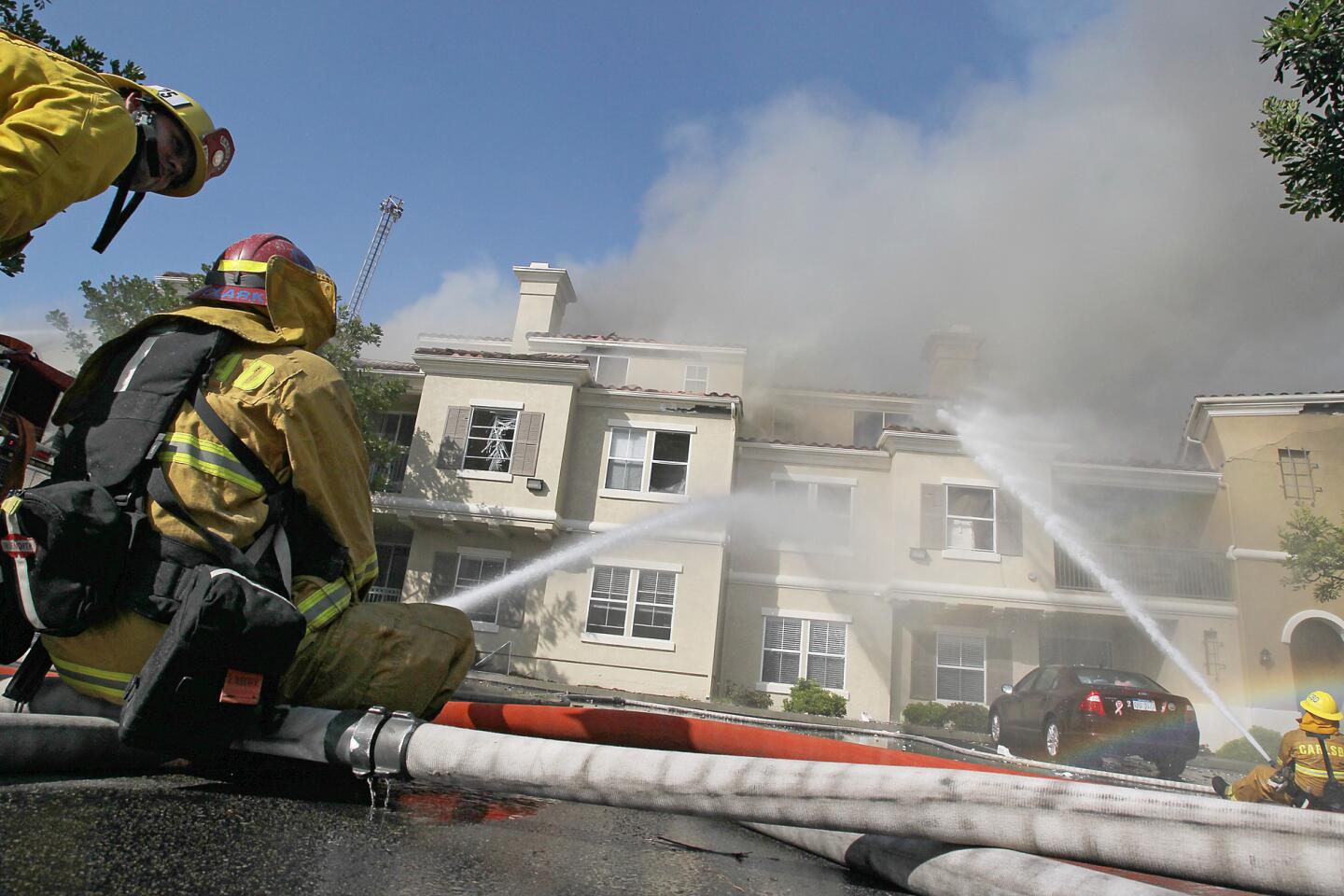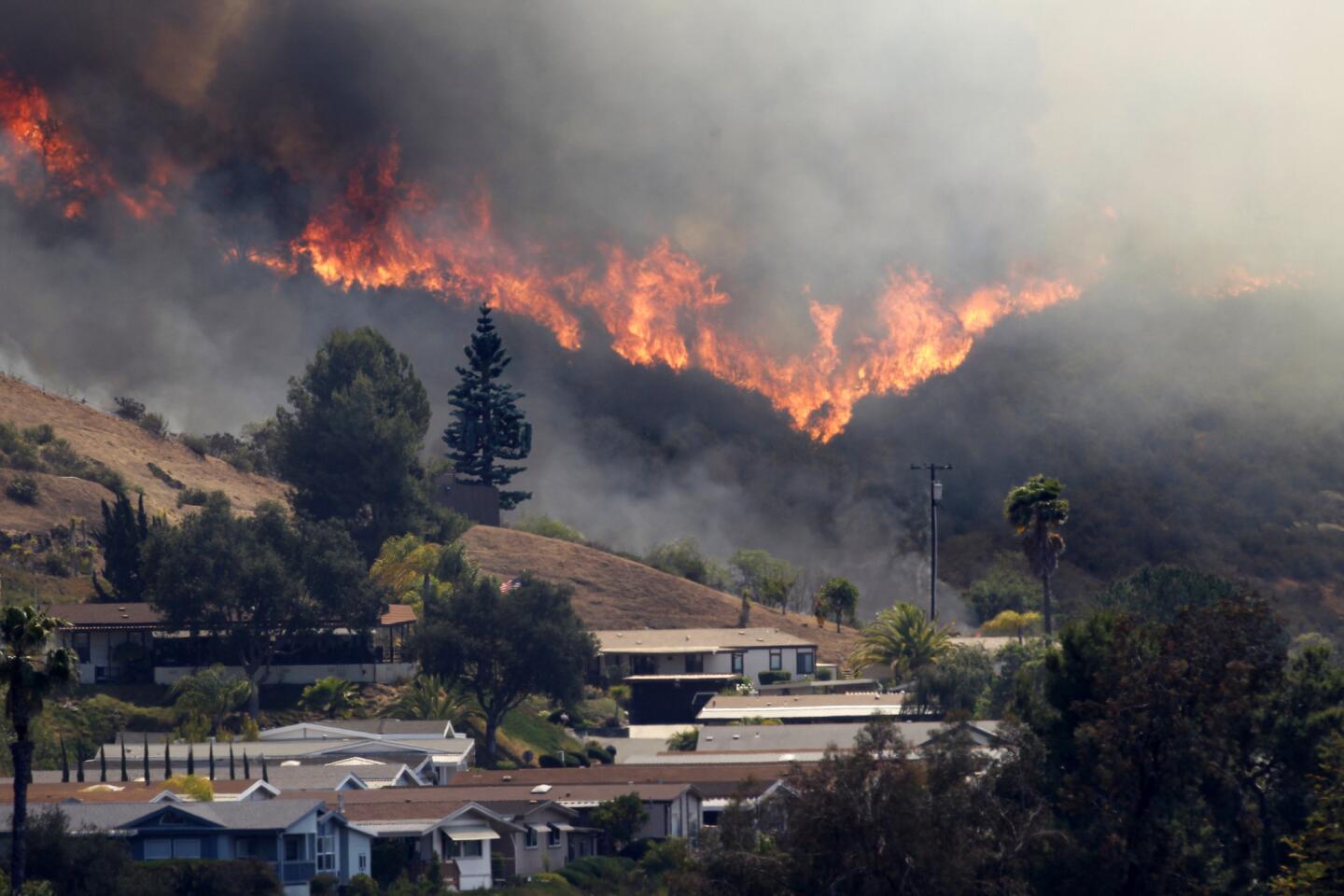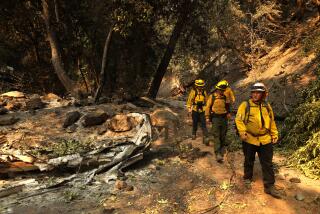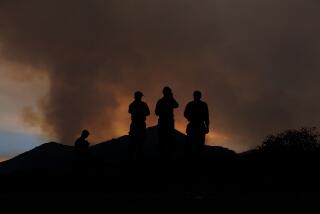Southern California blazes rage on as firefight enters second day
- Share via
Firefighters in San Diego County are bracing for another day of brutal conditions Thursday as they work to contain at least half a dozen wildfires that have consumed more than 9,000 acres and destroyed multiple homes.
The focal point in the countywide battle shifted late Wednesday to the San Marcos area, where hundreds of new mandatory evacuation orders were issued and firefighters were making a stand to protect hillside homes threatened by walls of flame that illuminated the nighttime sky.
Now called the Cocos fire, the wind-driven blaze had consumed about 700 acres as of early Thursday, and authorities reported no containment. At least three homes had been destroyed, officials said. On Wednesday, the fire forced authorities to evacuate residential neighborhoods and the Palomar College and the Cal State San Marcos campuses.
The brush fires sweeping across San Diego County are fueled by a dangerous mix of record-high temperatures and strong winds that officials say are unusual for May.
“In San Diego County, what we’re experiencing over the last several days is high temperatures, low humidity and very high winds. That’s a weather pattern that we usually see in the fall,” Cal Fire spokesman Daniel Berlant said Wednesday. “All it took was the spark of a fire.”
Santa Ana winds are expected to pick up again later on Thursday, fanning flames and embers across parched landscapes.
Philip Gonsalves, a meteorologist with the National Weather Service, told The Times that as the day wears on, “things are going to get worse.”
“Only because the conditions will be prolonged, but you can’t get much worse than it is right now,” he said.
An army of firefighters from local, state and federal agencies poured into the county on Wednesday as hundreds of people fled the flames and Gov. Jerry Brown declared an emergency.
Over the weekend, Cal Fire had begun increasing equipment and staffing from the Central Valley down to Southern California in preparation for potential fires this week, agency spokesman Daniel Berlant said.
“We are no stranger to having to deal with dozens of wildfires all the time,” he said.
In Carlsbad, 16 homes and two commercial structures were destroyed or damaged by fast-moving flames that hopscotched steep canyons, as erratic winds blew embers that created new spot fires, city officials said.
The Poinsettia fire, which was 60% contained as Thursday morning, gave homeowners only minutes to gather treasured belongings and pets and flee.
“There was just no time,” said Greg Staska, 63, whose adobe home was destroyed. “But it’s OK; I’m alive.”
The Carlsbad Fire Department estimated the initial loss at $22.5 million, with eight homes, an 18-unit apartment complex and two commercial structures either damaged or destroyed.
At Camp Pendleton, where a blaze had charred 6,000 acres, eight Navy and Marine helicopters were making repeated water drops as thick clouds of smoke rose into the sky. The Tomahawk fire, which was 20% contained as of Thursday morning, prompted evacuations of two housing areas on the base and two schools, one on the Marine base and one in nearby Fallbrook.
As it burned westward, the fire also spurred evacuations at the San Onofre nuclear power plant.
In the canyons next to Rancho Santa Fe and Fairbanks Ranch, firefighters continued to battle the Bernardo fire, which erupted Tuesday and burned 1,500 acres but damaged no structures. By late Wednesday, the fire was described as 50% contained.
Other fires broke out in Ventura County and in the San Fernando Valley, where a small brush fire temporarily closed the 405 Freeway. Firefighters also extinguished a blaze that burned several acres in the wetlands near Long Beach.
More to Read
Sign up for Essential California
The most important California stories and recommendations in your inbox every morning.
You may occasionally receive promotional content from the Los Angeles Times.
